#I use Chinese and other Asian-country concepts as I become aware of them
Note
I'm sorry, this was bothering me enough to send in an ask.
The stupid question is: how strict is Earth-Kingdom-is-China vs Fire-Kingdom-is-Japan generally? I mostly ask because although none of the canon characters use real Japanese names, but it feels like everyone uses Japanese names for Fire Kingdom and Chinese for Earth, which makes Chinese Wanyi for Zuko's ship not fit in.
I mean, the waters are muddied from China's historical domination over the area, and it's a really great pun, but I woke up and my brain wouldn't let go of the entirely petty issue.
Ugh. Sorry for the stupid ask, especially since I don't come bearing any like funny trivia with to mitigate with. Please feel free to disregard as well, especially since I'm too cowardly to link to my actual tumblr account.
There's absolutely no strictness, because that's a fanon division anyway, and not one I adhere to. Fanon is fake and we can make of it what we want, and I want the pretty ship name!
#I tend to use Japanese names and culture#because I minored in Japanese and lived in Japan for awhile#I use Chinese and other Asian-country concepts as I become aware of them#the show itself deliberately mixes cultures across the board#probably because they realized making the Fire Nation == Japan would be#Uh#Rather on the nose#Historically speaking
515 notes
·
View notes
Text
聊237有些群众的反应 // On some of the comments re: CH237
This post touches on Jujutsu Kaisen Chapter 237. It also touches on Buddhist philosophy and ideas.
Right. So seeing strawman arguments popping up since CH236 is to be expected.
There's one that pissed me off from the "My Country Mangaka, Right or Wrong" crowd, though. This one:
---
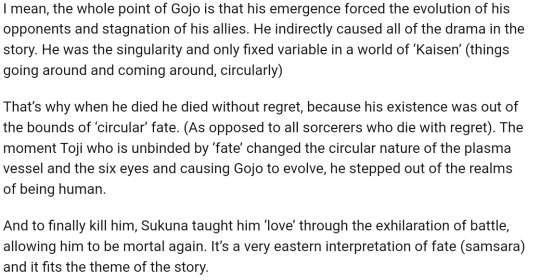
Now. This is the sort of post I actually like reading, even if our opinions differ. I like seeing other people's interpretations of a work. I love meta, especially because it appeals to my compulsively analytical brain.
But one still gotta be aware that they are applying a very specific reading to excuse Gege's execution, right?
One still gotta be aware that this doesn't excuse nor explain glaring storytelling issues, right?
All of that paragraph merely justifies the need to have Gojo out of jujutsu society, which honestly? Most of us already agreed, mai brutha.
I personally predicted Gojo would be out because of his Buddha allegory—if he's enlightened, then he should be the last 6 Eyes user. "This is the last birth; there will be no more re-becoming."
Whether that means the only way for him to go out is death... that's already grounds for reasonable debate. I mean, if Yuki's dream of removing everyone's curse energy comes true, Satoru will still be the last 6 Eyes user. And he'll also get to be just Ken Gojo-Satoru-the Not-Weak-Not-Strong-Mortal-Dude. Hell, it even ties shits up in a neat thematic bow while cementing Yuki's (well-deserved) importance in the story.
Last but not least: "samsara" does NOT mean fate. Gosh, maybe the person who posted this was trying to explain it in ways they believed the "Western audience" would understand, but... that's a tad patronizing, don't you think?
Samsara does not mean fate. Buddhism itself is opposed to fatalism, as seen in its opposition to the Ājīvika school (which is one of the six Śramaṇa schools Buddhists debated way back then). Instead, Buddhists believe in causal determinism.
Ironically, the dude's explanation of "kaisen" as "cyclic" is itself a good proxy for the meaning of samsara. Samsara means "cycles of existence", and it's got nothing to do with fate. Nope, "karma" does not mean fate either. It doesn't even constitute fate in a Buddhist's conception (karma means "action").
---
But this person has more takes, man. When met with a cheeky response saying they are "Gege's alt account", they have this to say:
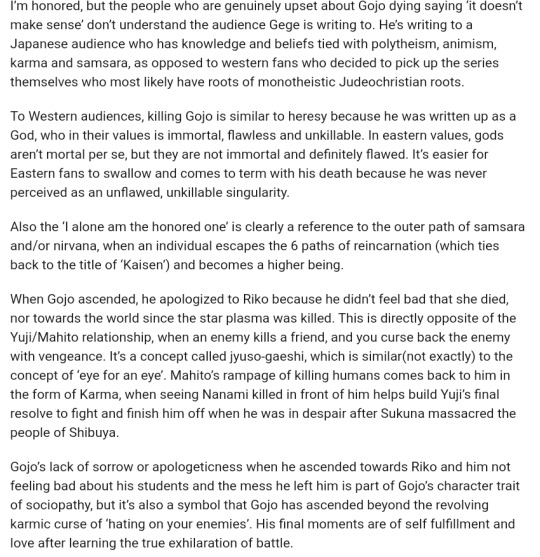
Here's the part that starts to piss me off.
Do I think Jujutsu Kaisen has a lot of Buddhist motifs, philosophy, religious ideas, etc. baked into its backbone, to the point that some of them fly over non-Buddhists' heads? Yes.
Sure, I'm also not someone who studies Buddhist philosophy for my major (my major was my darling cognitive science). I simply read up on them for no reason beyond curiosity and intrigue. And agreement, sure. I agree with many of its tenets. Ya know, like when people agree with absurdism and Kantian ethics and stoicism and whatnot. It's actually why I'd die on the hill of Satoru being self-less. I simply think the concept of anatta flew over a large group of JJK enjoyers' heads, and that's fine. Those who get it explain them to those who don't. No big deal. Someday I'll talk about anatta and sunyata as concepts exemplified by Satoru, too.
Do I think there are Japanese cultural ideas flying over non-Japanese's heads? Yes, that's likely to be true.
I'm not Japanese. I'm just some person growing up in a Chinese-dominant family in a multicultural Southeast Asian society. Even then I'm quite sure I miss out on a lot of implied Japanese cultural phenomena when I consume their stories.
But how does any of that even translate to justifying shitty execution in this story, including Gojo's death? Are you saying Japanese people will lap this up because, to them, this is "not bad storytelling" but "a Japanese cultural thing lost in translation"?
Are you serious?
And what the hell is with that strawman of "Western audience"? "Killing Gojo is heresy because something something Gojo is God something perfect unkillable flawless"?
Yo, who the hell actually believes Gojo is "god"? All I see are people connecting Gojo with the Buddha himself, which is a legitimate connection anyway. I'm sure those who genuinely see Gojo as a god-in-flesh are a minority who probably, I don't know, take the story sideway to some hardcore fanon territory.
Most of us are not arguing against taking Gojo out because "the audience only knows Judeo-Christian ideas so this is heresy." Most of us are just arguing that the story hasn't been written well lately. Most of us are just pointing out Gege's lackluster-to-subpar execution and other storytelling issues.
Also, if we are supposed to argue this through the this-is-way-too-Buddhist-for-yall defense, then I would have loved it if this person pointed out what this "singularity" concept in Buddhism itself is.
Because as far as I know, there is no such thing as a constant in Buddhist philosophy. One of the Three Marks of Existence is deadass "Anicca" (impermanence). The point is "nothing is constant /permanent. Permanence is an illusion." The cycle of samsara itself changes constantly.
So how does Satoru being "a singularity" actually make sense in an argument hinging on Buddhist ideas?
Also, for someone who rags on others for missing out on Buddhist ideas, dude also made the mistake of taking Satoru's lack of reaction and remorse to Riko's death as "a trait of his sociopathy" much like one not familiar with Buddhism might.
No. It doesn't show sociopathy. Just as "rising above the cycle of hating your enemies" ain't some strange "juxtaposition" to Satoru's sociopathy either. These two traits are from the same source.
What that alludes to, sir/ma'am/dude, is simply "Upekkhā", or equanimity.
Believe it or not, even Buddhists are cautioned against mistaking "equanimity" with "apathy". Apathy is a "near enemy" in the sense that it superficially represents equanimity when it is not; the latter is related to "non-attachment" and "renunciation".
Apathy, meanwhile, occurs when one does not possess Right View.
This is what I meant when I said, yes, sometimes non-Buddhists may miss out or misunderstand. Hell, my best friend was raised in a very ardent East Asian/Chinese/Pure Land Buddhist family, and yet when I talked to her about equanimity, she thought it was the trait of a sociopath too. Really, 'tis not a crime to not get these things.
It is really irritating though if you actually act like what you say is end-all-be-all, okay?
Satoru didn't express anything when Riko died because it already happened—and there was no use being fixated on what had happened. This was fresh off his Awakening period, too, so Satoru was still in that weird state of jhāna or something, I don't know (Gege makes me doubt myself now). He's in an equanimity state, and therefore "hates no one". That's really it.
---
Gosh, the fact that I'm actually quite passionate about debunking this Redditor's statement is surprising. Honestly I never even thought I'd ramble at length about JJK at all, because it's such a large fandom with so many galaxy brains who outclass me by lightyears!
I think I'm just irate when someone touches on something I know, and expresses this weird "I know Japanese. Do you?" superiority while straw-manning anyone who disagrees with them. Like man? Respectfully, fuck off.
Another Redditor did reply to them though:
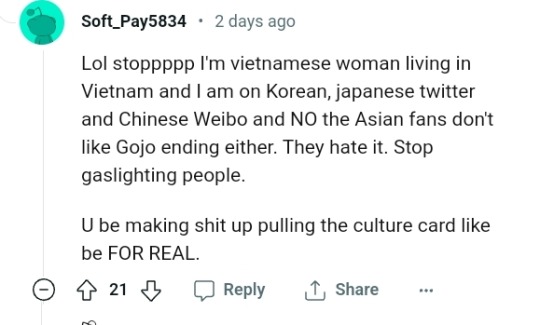
FOR REAL, SOFT_PAY5834! GET 'EM!
...Anyway, this person's reply to Soft_Pay5834 deadass mixes some Japanese in their reply, because I suppose showing off you can write Japanese or something is a legit reinforcement to your arguments now. Wow. I'm really trying hard not to call them a "w_ _ a b _ _".
So yea. Can some people please stop straw-manning any critic as Gojo dick-riders already? Or use any other strawman, for that matter? Thanks.
---
Thank you for reading my ramble. I know, it's a bit dense with a lot of links.... Hyah?
#I didn't dabble in Buddhism to argue with people!!! What happened?!#an argument over a fictional story is ironically very un-Buddhist hahahah. So yea I too get a big fat L#But I also think if I can at least provide some clarity every time someone starts to abuse the “culture” card because I have the knowledge.#I should. Besides#this is low-stakes shit. A debate with low stakes is better than one with real life high stakes.#jjk#jujutsu kaisen#jjk spoilers#jjk 237#buddhism#jjk leaks#jjk manga#gojo satoru
11 notes
·
View notes
Note
I'm a Chinese, nationally and racially. Racial projection seems to be a common practice in western fandom, doesn't it? I find it a bit... weird to witness the drama ignited upon shipping individuals with different races, or the tendency to separate characters into different "colors" even though the world setting doesn't divide races like that. Such practice isn't a thing here. Mind explaining a bit on this phenomenon?
--
Sure, I can try. But of course, fish aren’t very good at explaining the water they swim in.
Americans aren’t good at detecting our own Americanness, and a lot of what you’re seeing is very much culturally American rather than Western in general. (In much of Europe, “race” is a concept used by racists, or so I’m told, unlike in the US where it’s seen more neutrally.) Majority group members (i.e. me, a white girl) aren’t usually the savviest about minority issues, but I’ll give it a shot.
The big picture is that most US race stuff boils down to our attempts to justify and maintain slavery and that dynamic being applied, awkwardly, to everyone else too, even years after we abolished slavery.
There’s a concept called the “one drop rule” where a person is “black” if they have even one drop of black blood.
We used to outlaw “interracial” marriage until quite recently. (That meant marriage between black people and white people with Asians and Hispanic people and others wedged in awkwardly.) Here’s the Wikipedia article on this, which contains the following map showing when we legalized interracial marriage. The red states are 1967.

That’s within living memory for a ton of people! Yellow is 1948 to 1967. This is just not very long ago at all. (Hell, we only fully banned slavery in 1865, which is also just not that long ago when it comes to human culture.)
Why did we have this bananas-crazy set of laws and this idiotic notion that one remote ancestor defines who you are? It boils down to slavery requiring a constant reaffirming that black people are all the same (and subhuman) while white people are all this completely separate category. The minute you start intermarrying, all of that breaks down. This was particularly important in our history because our system of slavery involved the kids of slaves being slaves and nobody really buying their way out. Globally, historically, there are other systems of slavery where there was more mobility or where enslaved people were debtors with a similar background to owners, and thus the people in power were less threatened by ambiguity in identity.
Post-slavery, this shit hung around because it was in the interests of the people in power to maintain a similar status quo where black people are fundamentally Other.
A lot of our obsession with who counts as what is simply a legacy of our racist past that produced our racist present.
--
The other big factor in American concepts of identity is that we see ourselves as a nation of immigrants (ignoring our indigenous peoples, as usual). A lot of people’s families arrived here relatively recently, and we often don’t have good records of exactly where they were from, even aside from enslaved people who obviously wouldn’t have those records. Plenty of people still identify with a general nationality (”Italian-American” and such), but the nuance the family might once have had (specific region of Italy, specific hometown) is often lost. Yeah, I know every place has immigrants, and lots of people don’t have good records, but the US is one of those countries where families have on average moved around a lot more and a lot more recently than some, and it affects our concepts of identity. I think some of the willingness to buy into the idea of “races” rather than “ethnicities” has to do with this flattening of identity.
New immigrant groups were often seen as Other and lesser, but over time, the ones who could manage it got added to our concept of “whiteness”, which gave them access to those same social and economic privileges.
Skin color is a big part of this. In a system that is founded on there being two categories, white owners and black slaves, skin color is obviously going to be about that rather than being more of a class marker like it is in a lot of the world.
But it’s not all about skin color since we have plenty of Europeans with somewhat darker skin who are seen as generically white here, while very pale Asians are not. I’m not super familiar with all of the history of anti-Asian racism in the US, but I think this persistent Otherness probably boils down to Western powers trying to justify colonial activities in Asia plus a bunch of religious bullshit about predominantly Christian nations vs. ones that are predominantly Buddhist or some other religion.
In fact, a lot of racist archetypes in English can be traced back to England’s earliest colonial efforts in Ireland. Justifying colonizing Those People because they’re subhuman and/or ignorant and in need of paternalistic rulers or religious conversion is at the bottom of a lot of racist notions. Ironic that we now see Irish people as clearly “white”.
--
There are a lot of racist porn tropes and racist cultural baggage here around the idea of black people being animalistic. Racist white people think black men want to rape/steal white women from white men. Black women get seen as hypersexual and aggressive. If this sounds like white people projecting in order to justify murder and rape... well, it is.
Similar tropes get applied to a lot of groups, often including Hispanic and Middle Eastern people, though East Asians come in more for creepy fantasies about endlessly submissive and promiscuous women. This nonsense already existed, but it was certainly not helped by WWII servicemen from here and their experiences in Asia. Again, it’s a projection to justify shitty behavior as what the party with less power was “asking for”.
In porn and even romance novels, this tends to turn up as a white character the audience is supposed to identify with paired with an exotic, mysterious Other or an animalistic sexy rapist Other.
A lot of fandoms are based on US media, so all of our racist bullshit does apply to the casting and writing of those, whether or not the fic is by Americans or replicating our racist porn tropes.
(Obviously, things get pretty hilarious and infuriating once Americans get into c-dramas and try to apply the exact same ideas unchanged to mainstream media about the majority group made by a huge and powerful country.)
--
Politically, within the US, white people have had most of the power most of the time. We also make up a big chunk of the population. (This is starting to change in some areas, which has assholes scared shitless.) This means that other groups tend to band together to accomplish shared political goals. They’re minorities here, so they get lumped together.
A lot of Americans become used to seeing the world in terms of “white people” who are powerful oppressors and “people of color” who are oppressed minorities. They’re trying to be progressive and help people with less power, and that’s good, but it obviously becomes awkward when it’s over-applied to looking at, say, China.
--
Now... fandom...
I find that fandom, in general, has a bad habit of holding things to double standards: queer things must be Good Representation™ even when they’re not being produced for that purpose. Same for ethnic minorities or any other minority. US-influenced parts of fandom (which includes a lot of English-speaking fandom) tend to not be very good at accepting that things are just fantasy. This has gotten worse in recent years.
As fandom has gotten more mainstream here, general media criticism about better representation (both in terms of number of characters and in terms of how they’re portrayed) has turned into fanfic criticism (not enough fics about ship X, too many about ship Y, problematic tropes that should not be applied to ship X, etc.). I find this extremely misguided considering the smaller reach of fandom but, more importantly, the lack of barriers to entry. If you think my AO3 fic sucks, you can make an account and post other fic that will be just as findable. You don’t need money or industry connections or to pass any particular hurdle to get your work out there too.
People also (understandably) tend to be hypersensitive to anything that looks like a racist porn trope. My feeling is that many of these are general porn tropes and people are reaching. There are specific tropes where black guys are given a huge dick as part of showing that they’re animalistic and hypersexual, but big dicks are really common in porn in general. The latter doesn’t automatically mean you’re doing the former unless there are other elements present. A/B/O or dubcon doesn’t mean it’s this racist trope either, not unless certain cliched elements are present. OTOH, it’s not hard for a/b/o tropes to feel close to “animalistic guy is rapey”, so I can see why it often bothers people.
A huge, huge, huge proportion of wank is “all rape fantasies are bad” crap too, which muddies the waters. I think a lot of people use “it’s racist” as an easy way to force others to agree with their incorrect claims that dubcon, noncon, a/b/o, etc. are fundamentally bad. Many fans, especially white fans, feel like they don’t know enough to refute claims of racism, so they cave to such arguments even when they’re transparently disingenuous.
--
Not everyone here thinks this way. I know plenty of people offline, particularly a lot of nonwhite people, who think fandom discourse is idiotic and that the people “protecting” people or characters of color are far more racist than the people writing “bad” fic or shipping the wrong thing.
But in general, I’d say that the stuff above is why a lot of us see the world as white people in power vs. everyone else as oppressed victims, interracial relationships as fraught, and porn about them as suspect. Basically, it’s people trying to be more progressive and aware but sometimes causing more harm than good when those attempts go awry.
167 notes
·
View notes
Text
Palpatine, Obi-wan, and tea
So, this is a very stupid idea, but I needed to get it out of my head before I did something extreme like writing fanfic. As a heads up, I've used real-world meanings for various details since there presumably isn't a Star Wars equivalent.
The story begins when Anakin is late for a social engagement. Both Palpatine and Obi-wan are anticipating his appearance. The Sith lord presents a kindly and patient front but fumes at this egregious waste of his time internally while the Jedi pushes his dissatisfaction into the force. He disapproves of the Chancellor, but his former padawan's discourtesy is off-putting. The fact that he has put the Chancellor of the Republic on hold merely aggravated the situation.
The Jedi informs the politician that Skywalker should arrive shortly. He doesn't. The chosen one is with Padmé at present and has forgotten he's meant to be elsewhere. Kenobi ultimately invites Palpatine to offers him some tea aboard his ship while they delay action until Anakin materializes.
Normally, Jedi eschew worldly possessions, but Kenobi owns an old miniature tea set that once belonged to Qui Gon. His tea supplies are generally supplied by colleagues who offer him the leaves when he's not on Coruscant. The ship is equipped with an electric tea kettle and a portable Hot Plate for cooking. He goes about preparing Green tea for both of them when he remembers the Sencha, while excellent in quality, has since gone somewhat stale. It hasn't gone bad, but it has lost some of its fresh flavours.
Jedi are practical(in theory), and tea can be costly.
Lower-income individuals in certain Asian countries have roasted stale green tea to enhance the taste. As this is an accepted practice, he takes the loose leaf tea in his possession, grounds, roasts, and serves it with minimal preamble. Palpatine debates whether or he'll actually drink peasant tea. When Anakin appears, apologizing profusely for the delay before noticing his ex-teacher has brewed tea and claims a cup for himself, supplementing copious amounts of sugar. On Skywalker's recommendation, the Sith decides to take a chance. It's not bad, so he compliments it. The evening wraps up without an event.
http://mattchasblog.blogspot.com/2012/05/experiments-with-re-roasting-stale.html?m=1
Later on, the bureaucrat invites the Jedi to attend a senate afternoon tea party. It's an opulent affair. Flowering (Gyokuro) tea with Jasmine flowers bloomed within transparent glass teapots sat next to elegantly designed tiered trays. On hundreds of tables, they rested; the flat surfaces were loaded with the first, second, and third courses, from petite pastries on the top to the tiny tea sandwiches on the bottom, the aggregate sum had been skillfully prepared for the guests. Palpatine had the wherewithal to afford a party grand enough to unsettle a Jedi. To his delight, he had succeeded.
Nearly everyone in attendance had been bequeathed a box of 16 Jasmine Pearls green tea blooms, the dried bundled ball of tea leaves and flowers would open like a plant in "bloom" when placed in hot water.
Kenobi had "accidentally" received 17, an unlucky number. In Roman numerals, 17 is XVII. One anagram for XVII is VIXI. In Latin, vixi means "I have lived," the implication being that the person(Obi-wan) is now dead. Jasmine is a plant that symbolizes purity and takes its name from the Persian word "Yasmine". This term translates to "gift from God". Put together; your death is a gift from God(the Sith'ari). Darth Sidious finds himself deeply amusing.
Obi-wan is grateful for the tea, especially since he's recently finished off his supply and always felt sheepish defending the expenditure to the Council. Official regulation dictates that he's not permitted to keep the gift. However, Jedi can distribute the donations to others in the order or, better still, add it to the communal ownership and shared at the temple. There are enough in the box for all parties to experience the high-end tea, so he gladly donates it to the Jedi temple and appreciates it along with everyone else. When Sidious hears what happened to his gift, he's pleased his secret message was brought to the rest of the Jedi as well.
Obi-Wan is averse to socializing with lawmakers in general and Palpatine in particular. Still, he makes a mental note to invite Chancellor to have tea with him again next time Anakin has them waiting for him as recognition for the expensive gift. Nevertheless, the opportunity doesn't come along until a few months later. Thankfully this time, the tea isn't stale. Unknown to Obi-wan, Anakin is in the middle of winning an illegal pod race. Skywalker wanted to purchase a present for Ahsoka, but as a Jedi, the lack of personal funds to his name meant he had to be creative if he wanted to show the people that meant the most to him how much he loved them, rules against attachments be damned.
This time he has Maghrebi mint tea. Traditionally the drink is sweetened, but he hasn't used sweetener. There is a bowl of rock sugar grown in the shape of tiny purple lightsabers on the counter. It was available if either party wanted to utilize the sweetener. The ingredients, as well as the tea, had come from Mace Windu.
Jedi were generally not meant to accept gifts from clients unless it's culturally necessary for them to do so. The tea was a regifted thank you gift from an ambassador. As the items couldn't be shared equally with everyone, Mace decided Obi-wan, as Anakin's minder had a more significant need for it.
After all the passive-aggressive messages he'd sent at the party, Sidious isn't expecting anything to receive any in return but still looks for any possible messages Obi-Wan might covertly send him through the tea anyway.
His actions don't seem to convey a particular message... unless Kenobi considered serving him a herbal tea that also happens to be an appetite suppressant is a message. Perhaps he intended to inform the wealthy politician that the Jedi felt Palpatine's tea party Palpatine had been too lavish and wanted him to know he'd offended the man utilitarian sensibilities, but that was likely a reach.
The tea itself was one of hospitality, meant to welcome guests by the male head of a family. As Kenobi poured the tea in three rounds as expected of tradition, he wondered if he had missed something and resolves to reflect on it more in the future. Each of the three rounds poured has a different meaning: life, love and death. The sugar represents the sweet aspects of life, and Sidious wonders as the sugar dissolves within his cup if the Jedi is aware of what he's saying about his life by going without it.
The Chancellor certainly knows the symbolism of prolonging the second cup to avoiding the third. Love as a concept was not something he neither wanted nor needed, but he had no fear of it. He drank to the idea without hesitance. If he played his cards right, Anakin's love would pave the way for the ascendancy of the Sith. As for death, he had designs on immortality. He would pass on even the metaphorical notion of his own demise.
When Anakin arrived, he doesn't go for any of the tea. He's tried the tea Mace had given his former master. It's tolerable, yet he has another target. Instead, he seizes the rock candy and laughs when Obi-wan protested that grinding on the purple sugar crystals might ruin his teeth. Nevertheless, he drops the bowl back on the counter after taking two and takes off with Palpatine.
Obi-wan is surprised the next day when the Chancellor has a package delivered that contains four(because four means death) kombucha starter kits(kombucha was considered to have "yang" energy in traditional Chinese medicine) and silver needle tea. As before, Obi-Wan gives the white tea to the temple, but he feels self-conscious. This incident marks the second time the Chancellor has given him something extravagant, and he feels like there are strings attached to the gift even if the politician hasn't said as much.
Politicians don't give gifts without reason—especially politicians who are not friends with the receiver.
Uncomfortable by the thought, he waited until one of his friends gifts him with tea. It's Bant who visits him first—intending to give her friend Pu'er tea(flavoured with dried honey ginger chamomile) she'd received at a medical conference. Obi-wan explains the situation and asks if he can send the tea to the diplomat as a sign of gratitude. Bant isn't bothered by the question and wishes him success.
Little does he know that although he intended nothing untoward with his regift, Palpatine had, after considering the possible implications, managed to be offended by it. Pu'er tea was often used to treat hangovers(among other things). His former teacher, Darth Plagueis, had once kept several kilos of it in his home. The muun would consume premium Poo Poo Pu-Erh Tea the morning after he'd had a night of excess on Sullustan wine. After he'd given the Jedi kombucha, a very mildly alcoholic beverage, he'd apparently proceeded to criticize the gift by implying he (Sidious) was a drunk who needed it. Indicating he shared the same weakness that had gotten the deceased Sith Lord murdered was exasperating, even if Obi-wan couldn't have identified the reason.
And that's when the situation becomes, for lack of a better word,"serious". Obi-wan thinks they're exchanging gifts, almost they're friends, but he's becoming increasingly frustrated because they're uneasy allies at best. Still, he doesn't want to feel like he owes the Chancellor anything, so the cycle begins anew. His financial circumstances still haven't changed, so he's been forced to regift a few presents from his friends to have something to present to the politician who won't leave him alone.
Kenobi is frustrated by this. He already spoke of the issue with several of his friends. Usually an honest man, he felt compelled to share what might happen to tea they might give him. Always while out of Anakin's earshot. They're sympathetic but unsure what could be done about the man who holds so much power, especially considering the relationship his former padawan has developed with the politician. It's difficult to entirely avoid the man without avoiding Skywalker, who would notice any attempts at evasion and likely take umbrage, even if the Chancellor did not.
Palpatine, for his part, is honestly surprised to learn how very snide Obi-wan appears. He can sense the Jedi's frustration building and is aware it's related to the tea. That said, he hasn't guessed the actual cause. Instead, he believes Kenobi has managed to guess at the intent of his gift and is ostensibly reacting to the Chancellor's actual message.
Amused, he no longer sends veiled death threats. If he does it one time too many time, someone at the temple, likely Yoda, will start asking awkward questions he doesn't want to answer. Yet, he continues to send hidden messages with the intent of antagonizing the Jedi as he proceeds to misread the situation. As the other Force-user's better, Darth Sidious refuses to be out-performed in a game of pettiness by Obi-wan Kenobi.
Anakin assumes they're just two older men who love tea and have found a way to bond over that. He's pleased to finally witness two people he respects burying the hatchet and getting along. Ahsoka doesn't have the heart to tell him that Obi-wan is not happy with whatever madness he's been dropped into. Madame has resigned herself to remaining silent regarding her husband's bond with her former friend. She no longer trusts the Chancellor and knows bringing up her feelings with Skywalker will only end in arguments with the man she loves.
Matters take a turn for the weird when Obi-wan receives cacao maca tea from Quinlan Vos. His fellow Jedi had gotten it from a secret admirer with a crush. After tests came back proving it wasn't poisoned, he'd given the herbal tea to his tea-loving friend.
Like most of the gifts he'd received lately, obi-wan presents it Palpatine. He wouldn't have the ability to keep up with the bizarre back and forth otherwise. He doesn't have the money. He's thankful his friends understand how much he dislikes the idea of being beholden to Palpatine and encourage his efforts to circumvent it.
What he'd failed to account for was the reaction he'd spark by presenting a herbal tea that was viewed, by some, to be an aphrodisiac. Obi-wan himself hasn't realized he'd done anything problematic. Vos hadn't mentioned maca had a reputation because he hadn't known himself. When he'd dropped it off, he'd simply named the vitamins the healers had said it contained.
Palpatine is confused. He's politically powerful and comes from a wealthy family, so it's hardly the first time anyone has been interested in pursuing him. However! Just the other month, they'd been politely abusing one another. There hadn't been any reason for the change.
Sidious can't decide Obi-wan attempting to insult his virility since maca is reported to help with reproductive health or if the Jedi is propositioning him. He hadn't thought Kenobi was interested in hate-based romantic overtures. That said, making mockeries of a sexual nature is astonishingly inappropriate given their positions. He wasn't offended, the possible slight was far too childish for him to take it sincerely, but he hadn't taken the General as the type of man who would make the insult in the first place. Complicating matters is the fact that the General is Anakin's former master.
He's hesitant to assume the situation would work out in his favour if the Jedi is twitterpated and if he should allow it... whatever it was, to persist. Would developing a relationship with Kenobi hasten Skywalker's fall to the dark side, or would the interaction convince the boy to turn his back on Darth Sidious.
Sexual relationships were irrational, messy little things and far more unpredictable than pretended friendship. He tended to avoid non-transactional sex due to the wildly unpredictable nature of the beast. If an uncompensated connection didn't service his ambition, didn't cultivate his power or influence, it was deemed irrelevant and discarded. An ill-defined situation occupied a troublesome grey area he despised, leaving him in something of a quandary on how to advance his agenda. Sidious knew he'd have to adopt a resolution expeditiously, and that inaction was as much a choice as any other.
18 notes
·
View notes
Note
No one is saying they had hidden agenda they’re just ignorant. It might seem like no big deal living in a homogeneous country where u face no discrimination or any kind of judgment towards your culture but it’s different for people who live as minorities in western countries especially. People are allowed to dislike things lol. And its not gatekeeping, it’s becoming more aware. Hollywood is all whitewashed and people in the past didn’t give af about but now we are speaking up about it and demanding more representation. It’s sick if u think we don’t need rep. Atla could’ve been more inclusive considering how they borrowed aesthetic from everywhere they could. I’m aware aesthetic is a fairly new term but the concept was always there.
I literally just said Singapore is a multiracial country consisting of chinese, malays, Indians and other races. We have Buddhists, Christians, Catholics, Muslims, Hindus and atheists. In what world does that make it a homogenous country? Some of the LoK villains had SA names. Ok, so? Kai, Prince Wu and Bataar were obviously South Asian while Rohan and Bumi are also SA names and they weren’t villains. Where’s your point? You’re the only one being ignorant right now and making an innocent show problematic.
The sandbenders being portrayed as bad guys, zaheer and Ghassan as villains really tells you what they think about Islam and muslims.
Unless hidden agendas means something different in your country, this statement just screams the creators having a hidden agenda. Idk if you even have native South Asian friends, but the ones I am acquainted with have watched the show and they didn’t give a fuck about villains having SA names or the show not having an SA main character. They all just felt happy and proud that they recognized their cultures in the show.
You do realize that what you’re doing is basically giving your culture and people a bad reputation, right? That’s literally what you’re doing. You go around acting as if you represent your culture when you don’t even live around it. Your western mentality is truly showing right now with your idealistic mindset that discrimination doesn’t seem to exist in multicultural countries. It still does. And we’re dealing with it peacefully unlike you demanding representation and gatekeeping instead of educating people to appreciate cultures.
People are allowed to dislike things lol
Oh, dislike? So it’s not actual racism you felt, but you just didn’t like that that it didn’t have things you wanted there to be, so now you’re mad! Oh boohoo. Again, they are not obligated to make their main characters based on a certain race. It’d be nice to see Filipino based characters or actual Filipinos in other shows considering how many there are in the US, yet you don’t see us demanding for representation or being butthurt over the lack of them. Why? Because we have pride for our country and entertainment so we don’t need to see other countries representing us even if we live or grew up outside of PH. If you’re so cultural, then why don’t you watch the entertainment of your native country. At least then you’d finally be seeing something from your roots and seeing how people react to the media instead of seeing everything from a westernized point of view.
It is incredibly disrespectful and irritating of you and other American Asians/Non-Asians to attack other people over something trivial that us actual Asians aren’t even mad about. All you’re doing is driving other people away from being interested in our cultures and enjoying it. THAT is what you are doing. People nowadays are so worried about offending POCs that they’d rather not add characters from other races, and then you still demand for representation and harass them for not giving you what you want despite you being the problem. You want representation? Then don’t look at characters by their race or what they represent. The character has their own personality and backstory. They are NOT about their race. I’ve never said that representation isn’t necessary. It’s HOW you’ve been going about it that is unnecessary. Shows from the 2000s were more diverse than it is now and they didn’t scream representation and diversity just to get people to watch their shows.
Atla could’ve been more inclusive considering how they borrowed aesthetic from everywhere they could.
Just say you’re entitled to having South Asian based main characters just because. ATLA is already inclusive as fuck and the only kids show that POCs in the west and other actual Asians around the world can actually relate to. Stop ruining it by turning cultural appreciation into your SJW definition of cultural appropriation.
28 notes
·
View notes
Text
ORIENTALISM : edmund dulac and the 1001 nights
Once upon a time.
Fairytales and bedtime stories for children were always part of the general culture, especially in western society, but from the late 18th c., they steadily gained popularity until the late 19th century and beginning of the 20th century where the popularity of these stories was at an all time height. The stories were often found in small illustrated books that were read by both adults and children alike. From Perrault to Andersen, as well as various foreign tales. That era was also known as the Golden Age of Illustrations, since the wide releases of illustrated books made book illustration a very important part of popular visual culture. The late XIXth century will see a growing industry for the illustrated book. The context of the industrial revolution as well as a renewed interest for folktales and fairytales will make for a very busy era of illustrated books. The reprinting of a lot of traditional fairy tales by Andrew Lang as well the constant new editions and new fairy tale books during that specific era (1870-1920 according to most sources) will create a climate where lots of books will be published and even though, it will be mostly european tales, sometimes more foreign tales such as the 1001 nights will also be published and illustrated.
Artists like Arthur Rackham, Edmund Dulac, Aubrey Beardsley and many other will definitely impact the visual culture of the times, and still how we think about fairy tales illustrations to this day. In fact, some of the strongest visual influences behind the early Disney movies that were inspired by fairytales were indeed those illustrators. In fact, Kay Nielsen, who is one of the most well-known illustrators of the Golden Age era will become a creative director in the Disney Studio.

The particular historical context of the XIXth c. in Europe will bring a newfound fascination for the Orient (™) with the colonial empires of european countries such as France and the United Kingdom exercising their powers over countries such as Algeria, Egypt, India and many others. This era brought an interest for all things exotic and foreign. People longed to be mystified ad captured by the exoticism and romanticism of a foreign land. Of course, this all reeked of the white privilege and the western gaze but we’ll come to this. I’ll first start by explaining what is orientalist art, it’s art made specifically by white/western people incorporating stereotypical elements of what the Occident thinks the Orient looks like and pushing these pieces of art as accurate and representative of what the Orient really is. A lot of orientalist artists will never have left their countries and only make their art based on travel journals. So it’s a very biased art based on a second_, which will already a biased perspective of what the orient looks like because oh boy do white ppl in the XIXth love looking at foreign countries from the Orient™ as if it's some sort of curiosity that’s there for their entertainment. The most important element to consider to truly understand what is orientalist art, is that it’s art made by white people FOR white people. It won’t be a real representation of those countries, the culture and the people that will live in it. Orientalist art will create a truly foreign, exciting and, most importantly, imaginary idea of what the Orient is. It’s truly an invention of the West.
One of the main scholars of Orientalism and post-colonial theory is Edward Said, and what he will explain of what is Orientalism. For Said, Orientalism will be a way for the Western World to speak about the Orient from the western perspective. Orientalism will be a way to look at the Other and to truly otherize the East by putting it in contrast to the West. Said explains that the western culture will develop its own identity by putting it in opposition to what it considers foreign. Before I go further, i just want to say that what i define by the word Orient here will be the arab world as well as the entirety of the asian continent. Those old timey whites were just like oh. u look foreign… that means ur oriental 😔 what do you mean china and india are wildly different ? no same shit. So the base concept of Orient will be really vast and will mostly be used to talk about anything that is Other compared to the West. The West will define itself by showing itself as rational and normal while the East will be irrational and abhorrent, and yet. So fascinating to them.
Now that i’ve established the base concepts we will be working with, it’s time to start talking about the fairytales and the illustrations in themselves. I will talk mainly about Edmund Dulac in this article and his work within the fairytale illustration genre as well as his orientalist leanings. Also. sometimes it makes sense (even tho. its like. bro. please be better) and sometimes he puts a dude in a stereotypical turban in a the little mermaid illustration. Dulac is a french artist established in London, who will be really well known during most of his career. He illustrated books and magazines for most of his career. The main book we will talk about in this essay will be Stories from the Arabian Nights, written in 1907, and published and translated by Hodder & Sloughton. This edition will contain 50 colored illustrations as well as a pseudo arabic typography to give an exotic feel to this book and the tales it contains.

As it’s possible to notice by the first page, Dulac will create a very immersive oriental universe in this book that will bring the tales to life in a universe full of oriental aesthetics (whatever THAT means). The illustrations will be more inspired by Orientalist western paintings of what they imagined the Orient™ to be, rather than a depiction of what it truly is. And look, i’m aware that this is the 1001 nights, and since it's a phantasmagorical imaginary story, there should be no such thing as realist or not, but in the Dulac illustrations, the imaginary east will be a jumble of whatever they think the oriental looks like as well as a mish-mash of cultures that are wildly different one from another and it’s not really about a coherent imaginary universe, it’s just how the west will think of the east.
For example, one of the most well known orientalist artists will be Eugène Delacroix, who will make orientalist art wayyy before any of his travels to Morocco and Algeria, proving that it was never about accuracy, but mostly about a fictional, imaginary vision of what the East is supposed to be, especially in contrast to the west. The wild exotic East inspires, scares and fascinates western artists. It’s possible to compare one of Dulac’s illustration in this book with one of Delacroix’s most well known orientalist paintings Femmes d’Alger dans leur appartement, and you can see that the visual compositions of both art pieces will be very similar. The oriental woman is shown as languid, relaxed, the epitome of everything that the western woman isn't. (also i just want to say that i'm talking about cultural identity here and not like. the realness of daily life. Also i don't want to get into sexism and stuff RIGHT now but there’s like. for every woman involved here lol) Mostly, what i want to say is that women in the western society should be proper, civilised, polite, quiet. And this is what orientalism is about, once again, its putting the Orient™ in contrast to the West, so that the West can build its own cultural identity by comparing itself to the East.


It’s also possible to notice that the colors that will be used for these paintings and illustrations will be very rich and vibrant. The color scheme will be used to add a sense of exoticism and foreignness. The imagined East will be luxurious, wild, pleasurable, the complete opposite of a western society that will still be plagued by very strict sociological rules. This imagined freedom and temptation of sins will fascinate the western viewer.
Dulac will use mostly watercolors for his illustrations, this will help him create a very soft yet fantastical atmosphere to his illustrations. It will help him communicate the exoticism of the settings in which the tales will take place in. His illustrations will accompany tales and stories that have an oriental origin, and yet published and tailored to a western audience. So the visuals of this story will be created specifically to cater to a western public and that’s where the orientalism and the post-colonial perspective of these illustrations will start being in play. You can’t ignore the relations of power between the colonized and the colonizer. More than simply a curious look upon the east, the west will look at the East with a colonial gaze. The illustrations will indeed appropriate and incorporate elements of oriental art, but it will only be a reflexion of western society.
As you can see, in the following illustrations, more than wanting to represent the East, Dulac wants to give his illustrations an oriental flavors with elements that reminds of what people think the orient looks like. The influences will be arabic, indian, chinese, etc, and it will all be creating the Oriental universe of this fairytale book.


The postcolonial approach is very interesting and important in this case, because it will help the voices of the marginalized people who didn’t have a say in the visual representation of their own identity to reappropriate it. Those images, even if they do depict the Orient, won’t belong to the Orient. It belongs to the West.
The thing with those illustrations is that they are gorgeous. They truly are. Dulac was known as one of the best illustrators of the Golden Age and he really was, (tbh that era was amazingly full of talented and inspiring artists, some that are remembered today, and other who were forgotten but GOD THE SHEER TALENT) Those illustrations truly are of their times with their desire to showcase the Orient without having to face to colonial trauma they inflicted on these people or the reality of what those countries are. This specific book of Edmund Dulac and Housman is an interesting mix between two genres of art that were very predominant in the late XIXth century aka Orientalist Art as well as the typical book illustrations prints.
45 notes
·
View notes
Note
HEY SO u didn’t wanna go on a trans!magnus tangent in ur sexuality post but *I* want you to go on a trans!magnus tangent! Tell me more about him coming to terms w/ his identity & how it’s influenced his life and all that. Essentially just give me all the trans!magnus content in ur brain. Love u ❤️❤️❤️ ~cursedlightwood
here’s my hot take: magnus’ gender is Tired. and yes, i will elaborate, because Ive spent the last 2-3 weeks doing research for this ask, so this is probably the most well-informed theory you’ll see on this subject. yeah, we’re doomed
EDIT: i was gonna say this from the get-go but i forgot, so: english is not my first language and i’m unsure about the usage of some terms that i found during research, particularly those referring to traditional javanese religions and customs; so, if you spot anything that is problematic, racist or colonialist please let me know and i’ll change it.
ok, so i want to start this off by saying that, although javanese society had a binary gender system, they had pretty egalitarian views on gender, and from what i’ve seen the division of labor wasn’t really set in stone - although they were less common than male ones, there were female warriors, for instance. both men and women could be the sovereign and were equally respected, both could ask for a divorce, etc. the most important part of their gender views, to me, seems to be that they believed women were better for diplomatic roles and trading, because they believed men were too emotional and not as good as debating and making compromises as women were (same source)
so i’m just gonna say this, here and now: AFAB!Magnus makes a lot of sense because Magnus is the most diplomatic person you’ll ever fucking see, and in this context, if he were AFAB, he would have been socialized to be for a very young age. and i dont mean hes diplomatic just on the sense that he’s literally keeping most of the characters together and preventing fights (remember when he had to stop a Raphael VS Simon catfight? ugh), but also in the sense that out of everyone hes the one who best handles the seelie queen, for example. he’s good at Wit Battles, negotiating, building bridges and dealing with power relations when its needed.
and i mean, this would also be a pretty good start on why he’d be like “no thanks” when it comes to this whole Womanhood thing, because yeah, Magnus is good at that, he has to be, but does he like it? to me it’s pretty clear that he doesn’t, that he’s absolutely uninterested in anything involving power and negotiations and this whole ridiculous dance it involves. also he’s constantly giving himself the short end of the stick so y’know. honestly, at heart, magnus is an inventor, an explorer; he likes to create things, he likes to learn, he likes to explore the world around him, meet people, help them, build relationships - but on equal grounds, not this whole give-some-take-some thing diplomacy entails. and as a Woman™ in pre-colonial java society, it’s pretty much that, be a farmer, or a concubine - we’re gonna get to that a little bit later on.
so i think in this context little magnus would be like “no thanks” and wanting to go around and, i don’t know, look at plants and learn their properties and figure out why apples fall, or something. it’s not exactly a Man’s Role™ either, although to be fair i found it a little hard to figure out what exactly were men’s roles in javanese society because gender studies usually just focus on women and treat men as the standard and don’t really explore how manhood is construed. but anyway. i know that they were warriors more frequently than women (same source), but women could be warriors as well. like i said, gender roles in javanese society weren’t really set in stone. [alec voice] they’re not rules, they’re suggestions.
add to that the fact that magnus lived in a port city - he had to, since in the early 1600s the dutch were only settling in important ports and trading centers - and the ports in java were very important trading centers that had been attracting people from all over Asia and Europe for centuries, and had a quite good share of migrants and immigrants living there, including quite a good share of Buginese, aka the people who had a 5-gender division. jakarta, which is in java, has like the 10th biggest buginese population in the world, not to mention the countless other societies that had their own views on gender relations; and you have a pretty good and accepting environment when it comes to differences. the javanese were flexible, they were well aware that culture isn’t set in stone, and they were very prone to syncretism. the kingdom allowed people to have any religion they wanted, even if its “official” religion at the time was buddhism. so really: the javanese were actually not very into the whole “imposing cultural constructs” thing, especially the coastal javanese. so magnus would have likely had the freedom to explore and to not really want to conform to any gender stereotypes without that being a HUGE deal, in my opinion.
and then there’s the fact that the concept of womanhood was a pretty disputed one at the time; yes, the javanese had their own views, but it’s important to note that by the 1600s most of the coastal javanese population had converted to Islam, which led to a few differences as well; when compared to other southeast asian communities, for example, the rate of women in trade was a little different - while it was a steady 50% in almost all countries and cultures, in indonesia it was around 30%, because muslim communities had more of a “women stay at home” view. however, when compared to other asian societies such as the chinese society, where the rate was of 1-5%, you can see that the javanese’s egalitarian views on gender stood a fair amount of ground. also, in indonesia, precisely due to their more open views, Islam mostly syncretised with local religions and customs, including the gender views; in Bugis, for instance, the 5-gender system was kept, as were traditional customs such as “ritual transvestism” and homosexuality. so, yes, it was disputed, and people had many views on what people could or couldn’t do, but that mostly ended up becoming a kind of “live and let live” thing. which is the perfect environment for 1- AFAB!Magnus be Very Tired of this whole womanhood thing that no one can even decide what it is anyway; 2- Magnus to say “fuck this” and live as a masc-leaning genderless entity that just wanted to make some goddamn potions.
but then there’s the colonial relations, right? how do the dutch come into this already very complicated and delicately balanced equation? that was honestly the main point of my research, trying to figure out just how much influence the dutch had at such an early stage of colonisation, and also what it would be like to live in a mixed-culture household such as magnus’. here’s what i have:
during the first century of dutch colonisation (aka the part we’re talking about) the dutch and the europeans didn’t really have a big influence in javanese cultural and political relations. the javanese were pretty well organised and had a powerful and strong society so the europeans didn’t really manage to invade them successfully - even the portuguese, the most powerful european nation at the time, tried and failed to invade them for the whole 16th century (get rekt lmao). so what the dutch did was, they simply established themselves as one of the many companies that settled in jakarta to trade, and slowly built their power and influence from there. don’t get me wrong, the dutch were very violent colonisers and in other parts of indonesia they were doing the european thing of mass genocide as much as any other country. they weren’t a “softer” version of colonisers, they just didn’t have the power to subjugate the javanese, so they had to try a slower approach. during the early 1600s, the only dutch people in java were the VOC workers (VOC is the dutch east india company - the acronym is in dutch. basically the company that was there to get some nice spices to sell to the rest of europe so they could shove it all up their assholes or smth since up to this day their food is bland as shit), and they weren’t permanent settlers; they could only stay in java for the duration of their contract with the VOC and they couldn’t bring their wives and children with them, and they couldn’t bring any wives or mixed children they had while in java back to europe, either (same source).
this weird relationship meant that magnus’ “stepfather” and his mother probably had a relationship of concubinage (told you we’d get back to that), which was not uncommon in java neither before nor after the arrival of the dutch. in short, his mother was supposed to take care of his house, make him food and all that jazz, and also have a sexual relationship with him, in exchange for money (same source). it was not prostitution and it worked pretty much as a marriage, except it was temporary and contractual. BUT it meant that magnus’ mother would have to have converted to christianism (same source) and due to the fact that she was in a temporary contract, she couldn’t divorce him, and in their home he would treat her as, well, europeans treated their wives - with the particular western brand of sexism that they so kindly forced unto the rest of us. so that makes the whole thing even more disputed and complicated.
but as a VOC worker, magnus’ stepfather wouldn’t even be home for most of the day, and he couldn’t really keep magnus or his mom from, like, leaving the house and doing their things. i think he wouldn’t even try because that would prolly be very looked down upon in java; spousal abuse in southeast asia as a whole was pretty rare, since anyone could divorce whenever they wanted and women were politically and financially independent, so i think if he tried to pull something like that he would be in trouble - again, the dutch were the minority, and for the most part, they lived as the javanese did, in their villages, in their homes, eating their food and mostly adapting to their customs (same source). they even mostly spoke indonesian in their homes, since most indonesians didn’t speak dutch, and indonesia was kind of the universal language at the time, since there were many languages spoken both in and outside of java (this also explains why magnus speaks indonesian instead of javanese; that would have been the language spoken at his home. you have no idea how relieved having an explanation for this makes me). also there’s the pressing question of, would he even give a shit what magnus does or doesn’t do? magnus wasn’t his biological son, and most of these guys didn’t care about any biological children they might have had with these women, since they were women of color and they would leave them eventually anyway. honestly this is all the more reason for him to treat magnus like shit - he was javanese, he was brown, and he wasn’t even related to him by blood. this was also probably grounds for him to treat magnus’ mom even worse, since in his christian eyes the fact that she had a child outside of marriage made her even lesser than other indonesians.
so honestly, what i’m picturing is something like - most of the time it was pretty okay, there were certain expectations and a certain kind of female socialization but it was okay that he didn’t really fit in there, and then with his stepfather the whole thing was just shit.
also, the fact that his mom was probably a concubine means there was a fair chance that his stepfather would have other concubines, and listen, yes i may be flexing, but you can’t stop me from imagining that maybe magnus was raised in a multicultural home with lots of other southeast asian women and children and maybe even buginese because again you can’t fucking STOP ME.
but either way, even if his home wasn’t like that, his city was - we don’t know which city he lived in, but it doesn’t matter, really; all cities with dutch settlers were port cities and therefore followed pretty much the same pattern of being a cultural tapestry with all sorts of influences coexisting in peace.
so really, little magnus lived in a pretty rich environment when it came to exploring his identity. he and his mom lived in a pretty egalitarian society gender-wise, he had the space and the opportunity to explore the world and figure out what he liked and didn’t like. am i going crazy imagining a tiny magnus with his mom, running around in other farms and listening, enraptured, stories of people from all over the world, about their cultures and lives, and learning there is so much to see and wanting to just go wherever he could, getting himself a passion for travelling that would later fuel his want to invent a quick way to go anywhere he wanted to, going to the port and seeing all the stuff they had available, from plants with healing properties to spices, and just loving to figure out their properties and how they could be mixed together to create new things, loving this world full of wonder and possibilities? maybe. god.
but anyway, what i’m trying to get at here is that it’s really impossible to think of a cis magnus in this context, no matter if you think AMAB or AFAB trans magnus - i know ive been focused on AFAB magnus here but really that’s mostly because 1- Projection; 2- thinking about AFAB magnus brings in new layers of complexity that need further exploration in my opinion; but really this applies to any magnus. what would being “cis” even mean, in a context where the very concepts of manhood and womanhood were so disputed and complex? and that’s not even going into the fact that after so many centuries, complying to gender roles of that time looked nothing like complying to our modern gender roles. really, it’s a lost cause. magnus kind of has a culturally-specific gender that…. no one but other warlocks born in similar situations could, really? there’s no word for it. there’s no explaining it with words. it is [REDACTED GOOD OMENS REFERENCE]
the closest we have is masc-leaning enby, since somewhere along the way he seems to have decided to use male pronouns and have a mostly masc-presenting body, even if paired with a more fem-presenting appearance fashion and mannerisms-wise. but again it’s too unique, there are way too many influences here.
and honestly that’s kind of beautiful! i love imagining small magnus having contact with people with all kinds of views on gender and society throughout his childhood, exploring, trying on their clothes, learning about their religions and customs, having elderly friends from different backgrounds and also young friends who were raised in very different ways, and sharing all of that, and learning about who he is amidst all of that, and being able to explore that and talk about that to his mom and friends and close people because they are used to these differences. even if when at home he was probably met with some kind of transphobic rhetoric and violence because of his stepfather and the imposed christianity that came with it - and that unlike other religions, didn’t syncretize at all.
which brings us to a second, very important point on the whole trans magnus ordeal, which is how deeply tied to racism the transphobia he’s suffered and the general understanding of his gender was. of course, this applies to every single of-color and non-western born person, but magnus has lived that through history. from a very young age, the blunt of the violence he was met with came from a racist standpoint that believed his very identity and existence made him lesser and in need to be corrected - because that’s what, after all, the colonizers were doing. their whole rhetoric was that the colonized were barbaric and needed them to learn the right ways through violence. it is worth noticing that the javanese have been referred to as “the most inhuman of all people” by dutch colonizers, and amongst the reasons for that was the fact that their views on gender were so different from the european’s (same source).
so really we’re mixing in the fact that he was a “bastard” child in his stepfather’s eyes, a warlock, and trans… and yeah, oof. there’s no way he was treated with anything other than violence from way before his mom’s suicide and the subsequent drowning attempt. in his stepfather’s eyes, everything about magnus’ existence was demonic, impure, and all the more reason why he and his mom were dirty and needed to be corrected.
it’s also worth noting that sorcery was a very big part of javanese culture that was also syncretized with pretty much every religion. the javanese believed in sorcery, believed everyone could do magic, and the dutch, of course, despised that. the source above is a pretty interesting article that argues that the european’s so-called “skepticism” on magic and “rational-based” culture was actually part of a construction of whiteness that hoped precisely to differentiate them from the “savage” others. i mean, the guys were burning women at the stake because they were “witches”, but every other culture’s religions, rituals and magic were just bullshit and couldn’t be trusted because the europeans were too rational and knew better? okay buddy. it also features an amazing story about a dutch colonizer who got hexxed because of his racism that is, quite frankly, heartwarming. but i digress.
so yeah listen i know i already talked about this on the other ask but there’s really no way the reason his mother killed herself was because she found out magnus was a warlock or a demon’s son or whatever. magic was part of their culture. it was what they believed in. it was a part of nature to them. it’s way more likely that the reason she killed herself was the constant violence she was met with in daily life that she couldn’t get away from, and his stepfather simply blamed magnus because, to him, he represented everything that was wrong with their culture - and that makes even more sense if we think about trans!magnus, because that makes him an even deeper abomination. it’s very likely that most of the violence and belittling his mother had to face was related to magnus as well - look what you created, what you do, your culture is an abomination, this is unacceptable. but magnus was way too small at that time, and he believed what his stepfather told him, because i mean, what else would he believe in?
i also think that asmodeus kind of messed with his perception of how the whole thing went down, telling him that he “murdered” him when really it was clearly self defense, erasing the violence his stepfather directed towards magnus and focusing on the end to convince magnus that he was evil, unredeemable, that no one would accept him but asmodeus, that he had no other choice. so that’s super fun! but yeah i do believe that asmodeus spent enough time gaslighting magnus and rewriting this whole story for this to be considered magnus’ worst memory, seen by him as a reminder of his “ugly side” that doesn’t really even exist. asmodeus weaponized this, which served the double purpose of convincing magnus he had no choice but to follow asmodeus, and teaching him that violence is normal and there’s nothing wrong with it, and that retaliating makes him bad.
this is all i have to say about the asmodeus years, really, because like i said before i don’t think he gives a shit about gender, he’s way older than it and who cares. but the trauma that the whole thing put magnus through is easily weaponizable. @thesorrowoflizards also wrote this amazing fic that features the headcanon that asmodeus used magnus’ transness to manipulate him as well, using spells that made him more masculine and stuff but only if magnus obeyed him. fun! especially considering that he was with asmodeus through his puberty (or at least that’s likely) when his body would have begun to change, so for him to have such a masc-presenting body…. yeah. this is very plausible. i love pain.
and then we get to england, where again, everyone is an asshole, about everything, all the time. like holy shit, he thought the europeans cared too much when he was in java, but that is nothing compared to the brits and their casual sentencing people to death for being gender non conforming. also, to the europeans, asian men were seen as emasculate and their gender relations as a whole was unnatural, and listen, i know that in 18th-19th century england men also wore makeup and stuff, but i mean, magnus was probably seen as exotic in his “effeminate” mannerisms and non-compliance to gender roles, even if people didn’t know he was AFAB or just trans in general. he was probably objectified in that sense, kinda like a human-zoo sorta thing. fascinating, these emasculated asians with weird bodies and customs. ugh.
so yeah gender got particularly exhausting at that time, too. thankfully there were the warlocks, who were old enough to know all of this was bullshit and who had people from all kinds of cultural backgrounds, thousands of people with culturally-specific genders, as well as other people who were raised in similar environments as him. so in there he finds a home of sorts, a place where this doesn’t matter and where he can be himself and nobody cares, and also has access to different cultures and views and knowledge, and really it’s like the good parts of his childhood again. he learns more about magic and potion-making, about other cultures and places, travels the world, learns about science and the workings behind his magic. creates new potions, new spells, continues his education, learns and remembers how much he loves this, the cultural effervency, the chances to learn and explore and create. really the warlock community is so amazing and it’s like, golden era.
but he’s also living amongst mundanes and to some extent he likes them - not to mention, he likes travelling and learning about different places and cultures. and they seem to care more and more about differentiating genders as time goes by, and to be getting more and more violent in their never-ending quest to force people to fit into these roles, and it’s. tiring. exhausting. who cares. it makes less and less sense to him, and this alienation from the whole thing only solidifies his non-conformance and general inability to fit. sometimes he feels old, and alone, even if he has other people who are Like Him now - the shadow world can get tiring, sometimes, and there’s also the shadowhunters racism thing going on that’s also inevitably trying to subjugate their spaces and looks down on their culture - so it also has the downsides of his childhood. sometimes it’s like there’s no word for who he is, no one that can understand it, no place where he can be fully himself and loved for it. and this only intensifies by the middle of the 19th century, when suddenly makeup and colorful clothing is not for men anymore, and he’s even less conforming than before - he was a pretty respectable Man™ to their standarts up to that point, but from then on that is lost. it doesn’t matter too much, because even if he is masc-leaning, he still doesn’t really see himself as a man in the sense that he seems to be expected to. but that furthers the alienation, and the feeling of loneliness and of being old and unfit for this world.
that is also when he meets camille! and that’s canon because there was that one picture of him with camille and ragnor and the clothes they are wearing are very much from the 1840s (i talked about this here), which is precisely when the whole men’s fashion differentiating from women’s fashion thing was starting. so in the context of his gender this makes it even easier for camille to manipulate him into thinking that she’s the only one who will ever understand and accept him, and that he’s naive, and that he doesn’t fit into the world and doesn’t understand what’s best for him, and really he should trust her judgement better because he is a man out of his time, but she can help him, and- yeah. that good olde cis-girl-abuses-trans-person routine, with even more elements than usual. ggghhhghh
and it’s not until the 1960s and 70s that these notions start to actually be challenged. of course, trans people have always existed and were building their own communities and helping each other as well as they could, and magnus certainly was a part of that, because, well, that’s who he is. he doesn’t leave people in need and he knows how painful it is to go through all of this alone, so he does his best to help and adopts pretty much everyone he can. but for the most part, they are a diaspora, and the cissexist society that alienates and tries to kill them goes on unchallenged.
that gives him all the more reason to get so involved with stonewall and the subsequent building of the queer neighborhoods and communities, that feeling that maybe he can belong after all, that things might change and his life doesn’t have to be an infinite cycle of violence, isolation, abuse, and repeat. seeing these events unfold, helping keep people safe, meeting Sylvia Rivera and all the other trans people of color who were part of this, who had stories so similar to his, who were also bisexual (!!), who knew what it was like. that was healing, and that was important to him, and gjfdkafaskfa yeah.
and of course not everything is a sea of roses, because then the community starts to divide and trans and bi ppl, particularly of color, particularly those who are like him, start to be looked down on. Sylvia is arrested and even booed at Pride, suddenly he’s drawing the short end of the stick again. and then there’s the AIDS crisis, and he sees so many people die, and for a while, it feels like there’s no way out after all. and he even loses a lot of his warlock friends, the people who really understand him in his entirety, because sometime around that there’s the Circle massacre, as well. it’s a dark time for him, and honestly it’s a good thing he’s sworn off romance after the whole camille ordeal to clear his head, because after losing so many people he’s never felt this alienated, this alone, and to fall into the arms of another camille or asmodeus would have been just too easy.
but god, he heals. it’s crazy, but he has raphael, he has cat, ragnor, dot, elias, and he somehow builds himself up and relearns to trust and starts to believe that he has the love he’s always believed himself unworthy of having, that he believed impossible to him. and he starts to open up, and to feel more confident in his own skin, right in time to meet alec.
and look, trans!Magnus just makes malec all the more powerful. not only is this shadowhunter showing up and fully trusting a downworlder, giving him his strength, caring about him, cleaning his home (!) and taking care of him, something he hasn’t allowed himself to have for so long, something he didn’t believe he could have and that alec does so easily even when they’ve barely met. he shows magnus so much care and respect from day one and magnus doesn’t get that from anyone, let alone a shadowhunter, let alone a shadowhunter that’s there with jocelyn’s entitled daughter who treats him as a tool - and look, i know he loves clary, but she is entitled and magnus unfortunately enables her and other entitled shadowhunters to treat him as such, because even he treats himself as such most of the time, and it’s something he needs to work on, and probably has been at least since he broke up with camille.
but he’s also a white, gay man, and magnus has seen firsthand that these people can be nasty to people like him. yes he tried to help alec come to terms with his sexuality, and yes he’s surprised him before, but it’s also not like alec didn’t fuck up and wasn’t entirely… well, shadowhunter-y and had a lot of trouble believing that things didn’t have to be the shadowhunter, bigoted way for a while. but alec doesn’t give a shit if magnus is trans, it doesn’t lessen his attraction or love to him in any way, and it’s just. ugh. beautiful.
and yeah this has gotten too long and it already took me like 3 weeks to answer it because of the amount of research ive done and general tiredness so im gonna end this here, and on a positive note for a change! magnus is happy and learning to take care of himself and accepts himself and trans rights. hell yeah.
#it's FINALLY here god damn it i have answered this ask!!!!!!!! holy fuck#ask#cursedlightwood#necromimetics#i know who u are skyler pls#sh#shadowhunters#magnus bane#trans magnus bane#meta#magnus meta#sh meta#malec#overflowing trashcan
37 notes
·
View notes
Text
I haven’t really seen a variety of complains against Kondo, the only thing I have seen people consistently criticise is the whole “stuff should spark joy” -thing, because we all need to own objects that we just need (cleaning supplies comes to mind as an example) and if you gotta be Shintoist and you gotta first understand the whole kami thing so that a vacuum cleaner can spark joy for you before this method works, then maybe the book should come with a foreword that says this is a shintoist method, might not work for atheists.
But the article doesn’t really help either. The author first says people are dumb for not knowing Kondo has invented a specifically shintoist cleaning method, but then says those same people are racist for mocking the Shinto aspects (which they don’t know are religious aspects in the first place!) of the method and saying the method won’t work — but since they don’t have this extra information that “this is a religious practice and therefore you gotta believe in this religion for some of this stuff to make sense” so of course it work work for them! Religions have their own internal logic, and if you are looking at it from outside it often will look dumb. So an atheist, who does not believe that books have spirits and isn’t even told that waking books up by tapping them is a religious practice, saying “books wake up just fine when you open them” in a mocking tone, isn’t mocking a specific religious practice because its foreign, they are engaging with the text at the level they think the text is at, the secular everyday level of cleaning up.
You can’t be mad at people being disrespectful of religious practices if you have told them they are just cleaning practices and not even related to religion! Like it’s the difference between “don’t touch x it will become dirty” (wow thanks you just called me dirty plus it won’t become dirty since I’m not dirty) and “don’t touch x it will become ritually impure” (okay I don’t know what that means to you but I am aware of the concept and will respect your request).
I also feel like the author of this article herself is guilty of that kind of racist thing where (usually western) people are like “ooOoOhh this [asian religion] is really mystical and powerful and cool and full of ancient wisdom and enlightenment and is overall much superior to thise boring old white people religions”* — which impression was also heightened for me by the phrase in the end about shinto being an ancient tradition that has never harmed anyone. Like... we westerners (which group the author also belongs being American) do this thing where they think “white people countries conquered and colonised and genocided, and all the people of colour countries are victims” which is such an infantilising idea (plus the idea that white vs nonwhite is the dynamic that explains all racial oppression everywhere is bullshit and something the UN has been trying to clarify for eons... This white-centric shit just doesn’t work in Asia and Africa where ethnic differences matter more than racial differences. Han-supremacists don’t care that you look a lot like the.mm if you are the wrong Chinese ethnicity. And like the Hutus in Rwanda basically went “yeah we’re all black, koombayiah - but we’re still gonna kill all the Tutsis”). I promise you the history of Japan - and even the religious history of Shinto specifically too - is just as full of awful things as all other histories. That’s kind of a thing for us humans, we are capable of being really awful no matter what race or ethnicity we are. We can be the oppressor in one context and the oppressed in another context.
Anyway.
Back to the “spark joy or gtfo” -thing: the main criticism for any home organising thing I have ever seen is that the advice “get rid of things if you aren’t sure you need them/get joy from them” does not work the same for poor people. Yes I might have too many pairs of pants in my closet, but if I throw them away there is no promise that I will have money to buy new pants once the ones I wear all the time break. This exact same criticism was lobbed at the whole minimalism thing where rich hipsters were all “oh look at my apartment I only own 10 things - but I won’t acknowledge that I have the disposable income to replace one of my things when it breaks.”
.
And like I said at the start, I haven’t seen very much of this criticism of Kondo so I rely on the author when she says a lot of it is racist and xenophobic and I do believe that - again, people be awful like that. But the article does not acknowledge the only criticisms of the method I have actually seen, other than making me come to the conclusion that “maybe this method is for rich people of Shinto faith only”.
* (and i really am sympathetic with the author because this is clearly an emotional issue to her, it’s about her deceased mom, for her Shinto is associated with Kondo and her mom so she conflates the two and to her it feels like people are calling her mom stupid)
2 notes
·
View notes
Text
HOW TO PRESERVE TRADITIONAL MUSIC IN MALAYSIA
Introduction
First of all, I would like to introduce myself. My Nama is Noraliah Sabrina Binti Ahmad Jefry. I am 20 years old and I was born in 27 may 1998. I live in Bandar Baru Sungai Buaya, Rawang, Selangor. I entrolled in music field when I was 11 years old and my first instrument that I played was Piano. Now I am pursuing my studies at Universiti Teknologi Mara (UITM) Shah Alam in Diploma of music majoring in Classical Piano.
Malaysia's multi-cultural and multi-racial heritage is most prominently exhibited in its diverse music and dance forms. Middle Eastern music is popular with Muslim Malays. Malay music is influenced by Islamic prayers and Middle Eastern and Arab music as well as music from Southeast Asia, Indonesia and Europe. Traditional Islamic-style music endures mainly in Kelantan. Most Malays like pan -Asian pop. Instruments used in traditional Malay music include the rebab, gendang, rebana, Chinese-style tawak gongs, the harmonium from India and Western-style violins. The tong is a Kayan instrument similar to a Jew’s harp. Malaysia has two traditional orchestras: the gamelan and the nobat. Originally from Indonesia, the gamelan is a traditional orchestra that plays ethereal lilting melodies using an ensemble of gong percussion and stringed instruments. The Nobat is a royal orchestra that plays more solemn music for the courts using serunai and nafiriwind instruments.
The more recent major influence on the performing arts of Malaysia, was effected by the Portuguese are credited with the introduction of the violin and the guitar, while British cultural influence in Malaysia has been much more generalized. (Ghouse Nasuruddin 1992). In addition to popularizing western music, dance, and theatre, the Europeans have also directly influenced the development of semi-modern syncretic musical forms such as the asli, keroncong, ghazal and bangsawan, which combine both western and traditional musical elements.
As a conclusion of these influences, traditional Malaysian music exhibits multi-faceted musical styles which combine regional as well western and West Asian elements. For example, the musical styles and instruments of northern Peninsula Malaysia resemble those of the Thais, while those in the southern part of the Peninsula have incorporated Indonesian musical elements. Furthermore, all over Malaysia western musical influences are glaringly evident.
How to preserve traditional music in Malaysia
Nowadays, whenever we asked people about these particular things, it is not be surprised that most of them do not know about these traditional instruments or worse haven not heard about it. Therefor it is expected if they do not know on how to play with the instrument. This scenario is worsen the society. It reflects how ungrateful we are toward our ancestor heritage.
As a traditional music lover, we have to preserve traditional music in Malaysia. Making a Traditional Music Festival is the best way to expose to people especially young people about music traditional. Such Gamelan Festival that was approved by the FOBISIA Heads of Schools during the November 2015 meeting that the Gamelan Festival will be broadened to the World Music Festival to be more inclusive of a wider range of music and to give wider opportunities for cultural enrichment.
As we can see, many people are not care about traditional because they are not being into traditional music vibe since kids and they are not familiar of sound traditional then pop music. Due of these reason, the traditional music industry are not being taken seriously by the people now. For me, we have to take seriously about our culture especially our traditional music because symbolizes the identity of a culture in our country.
Fortunately, there are still many musicians are fighting for our music traditional. For example Monoloque the new singer in industry music that try to make a new and fresh music. As we can know the new song of Monoloque that tittle “Chinta” has put sound of gamelan in his song. This is really amazing for me because not everyone will think to do such things. With that, people can see that sound of gamelan are not only used in official functions. I think Monoloque is the genius Composer. He knows what people now want to heard. The ideas in making music are so fresh and according to trend now. So with this, I believe our industry of music traditional will be more upbeat and not forgotten young people.
Next, to maintain and uphold the traditional Malay music art especially among the younger generation, efforts must be initiated early, for example, at primary level so that the desire can be achieved effectively. The Ministry of Education, for example, should introduce the traditional Malay music in Musical subjects or at least in co-curricular activities at national schools. Musical subject teaching in schools should not focus on modern music alone, but it is time for traditional Malay music to be taken seriously. The approach is very important to ensure that traditional Malay music is not only extinct, but it is also able to continue its survival in tandem with the rapid evolution of Western music that has now hit. If Tamil-Chinese or Chinese-style schools find much emphasis on the arts and cultural aspects of their respective races, the majority of schools in the Malay nation should also be left behind in the matter. Music is an essential element that must be emphasized in addition to the History and Literature subjects, where it is able to build thought, identity and awareness about the fate of the struggle of the Malays. During this time, traditional Malay music seemed to be less noticeable at earlier levels. Otherwise it is more significant at the level of study at public institutions of higher learning (IPTA). As we can see, there are also the most talented lecturer that are trying hard to introduce our traditional music to our young generations in school. Kamrul Hussein or more familiar we call it “Cik kam” is one of lecturer that are expose to our younger people about traditional music in school. Mohd. Kamrulbahri has been teaching and lectured many places such the National Arts Academy of Malaysia (Akademi Seni Kebangsaan) A.S.K or ASWARA (2001-2008), the National University of Malaysia (Universiti Kebangsaan Malaysia-UKM- 1997-2003), University Of Malaya (U.M), University of Technology Mara (U.i.T.M), University Of Putra Malaysia-UPM, The International College Of Music-ICOM, Sunway University College (2009), full time Contract base lecturer at Music Faculty, Akademi Seni Budaya Dan Warisan Kebangsaan (ASWARA) 2008-2012. Distinguished Creative Scholar at the Faculty of Music, University Technology MARA (UiTM) 2012-2014. He really hope that our generation are not forget our culture music and hopping they are more musician in tradition were born.
In order to achieve the syllabus of Malay Traditional Music subjects at the school, the Ministry of Education may work with the Ministry of Unity, Culture, Arts and Heritage to achieve that goal. Application of artistic and cultural values base on through the teaching of traditional music at the children's stage may warn them of their origins as well as forming their identity when they become adults. Traditional music lessons that are leisurely taught are among the channels that are easy to live with by the children as well as being able to apply side-by-side elements such as Malay language and customs. The fragility of the identity and weaknesses of the Malays at the present time, among others, is due to the lack of application of cultural values and Islamic teachings as fortresses and practices in daily life.
Hence, the inclusion of traditional Malay musical elements at the early stages of the school will hopefully contribute to maintaining the identity and identity of the nation to be more competitive in the future. When our young generation has been expose in traditional music so our industry music will be more developing.
After that, to preserve our Traditional music the government have to creating more broadcasts on television about traditional music. As we can see the people are most often watch television to entertain themselves. The influence on television can attract attention people. So with that we can show audience about our culture music. The example shown on TV that we have right now is Sistem Televisyen Malaysia Berhad (STMB) or TV3 was established in 1983 as Malaysia's first private TV, and began broadcasting in the Klang Valley on June 1, 1984. With the presence of this TV station the music industry could grow further along with music programs such as Lagu Juara (1986) which until now became one of the recognized awards in the music industry. At present there are six stations of TV broadcaster and nearly 40 stations radio (including RTM stations) all of which provide a lot of opportunities and incentives which is strong for the development of the music industry in Malaysia. This is proved that we also can create channel on TV about our Traditional Music. So the young generation can watch and know about their traditional music. This same on what broadcasts on Indonesian do. One of example of show on TV attract people's attention this tradition music is Konsert Orkestra Tradisional Malaysia (OTM). seen as a catalyst for the Malaysian music revolution in the 21st century. It is based on various ethnic and ethnic music such as Malay, Chinese, Indian, Aboriginal, Sabah and Sarawak. The combination of this variety of music genres is hoped to be a platform to a new concept of Malaysian music in the coming century.
Lastly, many origin has produced diverse traditional musical instruments, thus generating rich and complex music artistic heritage. Despite being culturally diverse, however, music has succeeded in establishing its own identity and highlighting the characteristics of equality that can be shared by various races across the country. So we can create a connecting between our traditional music Malaysia with all ASEAN. Musical instruments of membranophon, cordon, idiofon and erofon are played through a similar match, thus giving soul and aspiration towards the formation of a united nation within ASEAN member states. This are example concert that connecting with other country, The ASEAN Consonant Concert C held at Tengku Abdul Rahman, Matic, Kuala Lumpur for two days has recently been seen gaining the attention of local communities.
This concert is a form of appreciation at the same time can be regarded as the uniformity and richness of the traditional culture, especially the music in ASEAN member countries. We can see that the traditional is really important and we have to make sure our generation know the tarditional sound. Cultural media, institutions and industries can also play a crucial role in ensuring the viability of traditional forms of performing arts by developing audiences and raising awareness amongst the general public. Audiences can be informed about the various aspects of a form of expression, allowing it to gain a new and broader popularity, while also promoting connoisseurship which, in turn, encourages interest in local variations of an art form and may result in active participation in the performance itself. Malaysia's Ministry of Tourism and Culture Secretary-General, Tan Sri Dr. Ong Hong Peng described the ASEAN Consulate C Concert as an initiative to combine experts from ASEAN member states through art and culture.
"By featuring traditional musical instruments from the 10 ASEAN countries, this concert has basically promoted unique melodies from the respective country's musical traditions and most importantly showcase new talents among young ASEAN children," he said.
As conclusion, it important for us to keep the traditional music industry in Malaysia because Symbol of a national culture. There are many reason why our tradition music getting forgotten especially on our young generation. Many parties should play a role to ensure that these traditional music is not extinct. When we into in this traditional music we will be able to get new experiences and extensive knowledge. We can also see how it feels like to play traditional instrument in an ensemble. When played in Ensemble automatic you will discipline yourself and learn how communications between the teammate. I hope this Traditional music will keep continue to be seen by the upcoming generation so that our grandma will be more proud of us and they will be more appreciated.
1 note
·
View note
Text
Reading Black on Asian Hate-Crime Videos
05.11.20
It’s been an interesting time to be living in America as an Asian, to say the least. I was aware of the existence of COVID-19 since late January after visiting relatives in Japan. There was no way I would have imagined the events that would occur, the fear I would witness, and the hatred I would experience just months later. Since the news broke out that the virus began in China and the impacts of the virus were felt by Americans, Asians in America have been the target of explicit displays of racism. I have become a victim to these expressions of hatred myself, being spat on by a random person on the street and having people cover their mouths and avoid being in proximity to me.
Asians in this country are experiencing a rude awakening, if they did not know already, that even the Model Minority myth cannot protect them. What’s caught my attention in particular during these times, is the quick and mass dissemination of videos surrounding cases of anti-Asian hate crimes. I couldn’t help but notice that the videos that garner most traction are not ones that display crimes committed by white people, but are ones that display Black on Asian crimes. There are two videos in particular that have gone viral and have kept my mind busy. The first shows a video filmed by an Asian woman who was harassed on a subway by a Black man, and a white man stands up and helps the Asian woman (Chen). The second is a video of an old man being robbed, mocked, and harassed by a group of Black people, filmed by a Black man (@nicholaaasli). What is particularly interesting about these videos is the responses by Black, Asian, and white people.
There appears to be three popular types of responses to these hate crimes: one that expresses frustration using “if it were the other way around…” as an argument, one that comes from white people who use it to criticize Black people of saying “Black people can’t be racist” while also calling them violent, and one of Black people showing sympathy and un-claiming the Black people in the videos. What do these responses and readings of this video expose on American racial politics between non-white communities? What does this do for both white and non-white spectatorship when Black on Asian violence is popularized and trending for thousands of people to see? I argue that the incessant display of Black on Asian violence acts as a veil for white Amerikkka to hide behind and for Black and Asian Americans to forget who is actually responsible for the oppression and injustice they experience.
The Two Narratives
“People of Asian descent become the model minority when they are depicted to do better than other racial minority groups, whereas they become the yellow peril when they are described to outdo white Americans.”
— Yuko Kawai, Stereotyping Asian Americans
In order to fully understand the analysis of the videos and its effects, it is first important to understand the two narratives that permeate within the video and the responses to the video. The first narrative is one we are all familiar with: the racism against Black Americans and its long history of violence. The other is the less familiar tale of triangulation of Asian Americans. Asians have been labeled Model Minority because they’ve been stereotyped as docile, hardworking, and disciplined. The Model Minority myth, and the petrification of the stereotypes that make up a model minority, was created and used to silence and oppose the Black liberation and Black Panther movements.
Asians and their Model Minority status had granted them a degree of whiteness, giving them privileges that Black Americans could not attain. However, Asians in America were also seen as perpetually foreign. The interchangeability of the terms “Asian” and “Asian American” is proof that to America, there is no difference between a 4th generation Asian and a new immigrant. Asia and its people are seen as mystical and foreign, and we see this constantly whether it be in visual media where anywhere dystopian or futuristic is coded in Japanese aesthetics, or the ways in which people always ask Asians, “where are you from?” In the end, despite the everyday injustices Black people face, they are considered Americans, just like their white counterparts, something Asians will never be seen as.
Asians and Black Americans have always been pitted against each other as if they were direct opposites. When Asian businesses thrive in Black communities, as Asians display their colorism and racism against Black people, Black retaliation is seen as violent and unjust. Asian Americans, in the eyes of many Black Americans, are seen as allies and beneficiaries of white Amerikkka because white Amerikkka said so. Asians are model minorities and Black people are not and never will be no matter what they do because of preconceived notions of what a Black person can and cannot be. The fear-mongering of China and its rise as a global power is reflected in a miniature scale within small businesses in Black and Asian communities. Building up the tension between Black and Asian communities makes it easier to forget that the real enemy is neither Black nor Asian, but Amerikkka. COVID-19 came from China, but the president has announced it as the “Chinese Virus” and consistently blames China for its wrong-doings instead of addressing the failures of his own country. Yellow peril has resurfaced and is being used once again, as a divisive tool.
Understanding Hatred
“A man was expected to behave like a man. I was expected to behave like a Black man.”
— Franz Fanon, Black Skin, White Mask
Jacque Lacan’s Mirror Stage presents us with a theory that people do not come into the world understanding different symbolic systems, but rather it is learned and placed upon us. Fanon builds on this idea by claiming the “negro” is a part of a symbolic system based on what it means to be white, stating, “for not only must the Black man be Black; he must be Black in relation to the white man” (110). What Fanon suggests, is that the idea of what a Black man is supposed to be, pre-exists the Black man itself. There is an imaginary created about what someone who is not white is supposed to be like. If the white man is viewed as civilized, the one who is not white is imagined to be a savage. Non-white bodies are constituted as stereotypical beings, where no matter what they do, they will be seen as stereotypical. When Fanon is shaking in the cold, it is read as shaking in rage (114). If non-white bodies are perceived to be inherently stereotypical, then what is created is a false sense of truth. It means any performance will be viewed within the framework of whatever stereotype, and that performance will inevitably confirm the stereotype.
This concept is vital in understanding the ways the two videos are digested. Let us begin with the video of the Asian man being harassed. The elderly Asian man is recorded to be in distress as a group of Black men take his belongings and physically assaults him when he tries to get it back. The person filming, Dwayne Grayson, a Black man, records him and others saying racist slurs, declaring “I hate Asians,” and mocking the elderly man as he cries (@nicholaaasli). The responses to the video are as follows:
@ughdoingthemost (Black man): “I meannn everyone is talking about the ‘I hate Asian’ comment but are we going to pretend that Asians like us either. I’m just asking”
@TowerTtv (white man): “Why does the background sounds, sound like the flying monkeys in wizard of oz?”
@empteaclouds (white woman): “there’s people who don’t care until it’s their own community lmao”
@KafirKafir4 (Black woman): “they’ve never seen anyone stand up for them so why tf would they give a shit about people who aren’t their own”
@empteaclouds: “then why should people care if the races were switched? everyone jumps to say yes to equality but as soon as it’s not their community who needs help they’re quiet”
These responses give insight into the ways in which imaginary conceptions of certain races interact with their viewing of the video. We see people are either siding with the harassers, the victim, or being racist towards the harassers and justifying it. What is interesting to note, is the way these people talk about themselves. Donald Moss states that people “hate as a part of a group, not in the first person singular, but first person plural” (xviii). We see this reflected in the responses. @ughdoingthemost’s comment brings forth the idea of how the claim, “I hate Asians,” is not just by that one Black man, but by a community, as he says that Asians don’t like “us” either. The “I” in the hate comment and “us” in @ughdoingthemost’s response is to be read as I = a man who belongs to a group who has been historically placed below Asians.
Furthermore, Moss claims that hatred seeks confirmatory evidence. We seek whatever will confirm the hatred and preconceived notions that already exists in our imaginary. Just as Fanon and Lacan has argued, spectators are seeing and looking for visual affirmation of what think they know to validate it as truth. @TowerTtv’s response and others who called the harassers animals, savages, and used this to justify their hatred towards Black Americans are examples of this. @TowerTtv as a White man, should not have a say in the video, especially when visually, there is no one he could immediately identify with. James Baldwin makes a point that a white man’s hatred is rooted in terror as opposed to the Black man’s hatred being rooted in rage (60). A hatred rooted in terror means the white man focuses on the entity that lives in his imaginary, in his mind — it is not something that can be easily eradicated, it lingers.The video allows him as a white man with the imagined violent Black man to align his imaginary with something tangible.
Identification
“the visual field is itself a racial formation, an episteme, hegemonic and forceful.”
— Judith Butler, Reading Rodney King, Reading Urban Uprising
Judith Butler’s chapter in Reading Rodney King, Reading Urban Uprising examines the role of identification in viewing the Rodney King beating video as something that fits into the narrative of white paranoia. In examining the role of identification, she explains the vital distinction between reading and seeing the visual. She attempts to understand how a video that so blatantly shows a helpless Black man being senselessly killed, was used to side with the white police instead of King. I argue that the ability to identify with the victim lies in the distinction between identification with and the identification of, and is also dependent on which perspective the video is being filmed from. Identifying with places the viewer in the position of Whiteness and White paranoia, whereas the dis-identification occurs when the viewer enacts an identification of the the non-white.
Examining this video utilizing Butler’s theory is a difficult task because critiquing the narrative in this video is not as clear cut as the Rodney King video. Nevertheless, using Butler to raise questions about the role of identification in a video that portrays Black on Asian crime is necessary. Unlike the Rodney King video, there aren’t as many options given to the viewer as to who to identify with. We are given the choice to identify with Grayson, the other harassers, or the Asian man. However, it is shown that Grayson and the other harassers share the same view point, as they all participate in the hate crime. This means that there are two figures with potential for identification and dis-identification.
As seen earlier, there are many comments from within the Black community that express something similar to @ughdoingthemost’s viewpoint. This perspective is likely attached to an identification with the Black harassers. Perhaps it is attributed to the long subjugation of racism not only by white people, but by the Asian community as well. As mentioned prior, Black Americans have faced countless cases of racism from the Asian community, all while Asians are labeled as model minorities. The identification with the Black harassers may not necessary stem from a place of racism or prejudice, rather, it could stem simply from an understanding that Asians have done the same. When the president of this country, even prior to COVID-19, has explicitly showcased his prejudice against the Chinese, it doesn’t help that the fear of the spread of the virus adds fuel to the fire. The identification with the harassers come with a fear of Asians as well as hatred of Asians for the Black community’s perceived whiteness that Asians possess. This identification, however, is based off an imaginary that Asians are inherently better off, equal to white, or that they all hate the Black community.
On the other end of the spectrum, there is an identification/dis-identification that takes place between white spectatorship and videos such as this one, that displays Black on Asian violence. Unlike the case of Black or Asian spectatorship that comes with the understanding of the racial tensions between a Black person to choose to identify with either the Asian man or the Black man, white spectatorship poses a complicated relationship with the video. @TowerTtv is an example of one type of identification/dis-identification that takes place. This type of white spectator identifies with the Asian man, while also dis-identifies with both the Black figures and Asian man through enacting the identification of their other-ness.
This type of white spectator identifies with the Asian man because he is more like the spectator. Erica Burman’s Fanon’s Lacan and The Traumatogenic Child explains the notion of epidermalization where there is a strong emphasis on visuality and an attention to identification from without (80). Firstly, the Asian man visually, is more relatable to the white man simply because the Asian man has lighter skin. Secondly, on a deeper level, there is a degree of the imaginary that involves the first narrative discussed prior: the one of the savage Black man.
The white spectator identifies with the Asian man’s fear and sadness of having this possessions taken from him by a group of Black men who mock his sadness, as if they are inherently vile. This white spectator does not see himself as the oppressor that stands above both racial groups. Instead, he sees himself in the Asian man that happens to be placed perfectly in what would be representative of the white paranoia Butler discusses. Unlike the Rodney King video, the spectator does not have to try so hard to view the Black body as violent and deserving of being beaten. This video maintains the existing imaginary of white paranoia by already having the Black man actually posing a threat to someone innocent.
The video of the Asian woman being harassed by a Black man while a white man stands up for the woman is a prime example of this type of identification. This video provides a clearer narrative and affirmation of the imaginary for the white spectator. An innocent woman, not a man, is attacked by the “savage” Black man. But there’s a bonus: we get to see a white man “save” this woman. The white man is praised for being an upstander while the other Black man sitting is criticized for being a bystander. In this case, the @TowerTtv type white spectator identifies with the white savior, and dis-identifies with both the Black and Asian figures. Of course, there are cases of white spectatorship that does not involve the perpetuation of the violent Black man narrative; however, regardless of whether the white spectator makes a racist comment against the Black body or not, he will not identify with the Black person.
Mis-recognition and Fantasy
“The industry is compelled, given the way it is built, to present to the American people a self-perpetuating fantasy of American life…To watch the TV screen for any length of time is to learn some really frightening things about the American sense of reality…[these images] weaken our ability to deal with the world as it is, ourselves as we are.”
— James Baldwin, I Am Not Your Negro
Why is there an abundance of these Black on Asian videos as opposed to white on Asian violence? More importantly, what is it about these Black on Asian violence that makes them more “popular” and trendy than white on Asian violence? Baldwin makes the observation that Americans feel the need to maintain a sense of normalcy and consistency between their imagined America and reality, and this is done through producing and reproducing certain images that are “designed not to trouble, but to reassure” (86). White Americans latch onto these images of people of color attacking and hating each other as a way to feel like white people are not the only bad guys and that their racist narrative of Black people is truthful. Simultaneously, non-white Americans view this widespread narrative that Black and Asians are always against each other, distracting them from larger, systemic practices that are pitting them against each other to begin with.
Through these videos, we see the classic stereotypes played out to reassure the historical narratives we all all familiar with. The Black uncivilized savage, the passive effeminate Asian, and the innocent heroic white man. While Baldwin is referencing the media industry and it’s preferential reproduction of the imaginary America unlike these hate crime documentation that is filmed by individuals, the essence is the same. In White Man’s Guilt, Baldwin states, “[white Americans] are dimly, or vividly aware that the history they have fed themselves is mainly a lie, but they do not know how to release themselves from it, and they suffer enormously” (723). White Americans’ lack of ability to deal with their own incoherence and guilt of a history they do not want to know or be responsible for creates a need for a form of disavowal. Thus, these videos where the victims of their systemic oppression are being cruel amongst each other provides some sense of comfort. They get to say, see, I’m not the racist, we’re not racist, even though as Moss suggests, hatred performs as a first person plural.
“I cannot go to a film without seeing myself. I wait for me.”
— Franz Fanon, Black Skin, White Mask
“The mirror sage is a drama whose internal thrust is precipitated from insufficiency to anticipation”
— Jacaque Lacan, Écrits: A Selection
“they seemed placed on the screen for me and for me alone…I [couldn’t] disassociate myself from the pleasures I was taking…I dreaded the newsreels, but wanted to see more”
— Donald Moss, Hating In The First Person Plural
We cannot accept the virality of this specific type of content to be random or by chance. There is an allure to these videos that depict violence between ethnic minorities. That allure is attributed to White Amerikka’s constant need to see themselves as whole. There’s a disconnect between what they see themselves as (the post-racist white man) and what they know to be true (the privileges they have and the continued systemic oppression of non-white communities), a fragmentation. These videos of Black on Asian crimes in light of the virus have performed in the same way Fanon seeks himself on the screen, the way Lacan describes the mirror stage as our repeated need to see an image to consume to feel whole, and the way Moss couldn’t stop looking at the newsreels due to the pleasure he received.
While white Americans seek these videos and take pleasure in them to reassure themselves, Black spectatorship on the side of the harassers involves satisfying a need for justice, to hurt the people who’ve hurt them, though that justice is served against the wrong person. Black spectatorship on the side of the Asian victim is perhaps a satiation of their need to be validated as a victim to historical violence in general. As for Asian spectatorship, perhaps it is similar to white spectatorship in the sense that they seek some need to justify their racist and colorist beliefs of Black people. Perhaps it is a way for them to satisfy a need to finally be seen as a victim, unlike the label of model minority suggests. Whatever the case, these videos provide an image in which each respective spectator sees themselves, and the reproduction and virality of these videos suggest that there is some sort of pleasure that is received from watching them.
Last Thoughts
In light of COVID-19, as fear of Asians turn into misdirected hatred, acts of hate-crimes are being increasingly documented. While these documentations are important to identify the perpetrator, I cannot help but feel discomfort knowing that most of the videos that circulate are of Black on Asian violence. It feels strange to not only feel empathetic towards Asian victims, but also towards the Black community for the slander that they will receive for participating in hate-crimes. Just as I find myself identifying with both the Black and Asian persons I see, these videos complicate the type of relationship different spectators have with what they are seeing. More than anything, it is crucial for us to remember to not be falsely swayed by the narrative these videos have the potential of disseminating. We cannot let these videos be possessed under the hands of white paranoia. Despite whatever racial tensions exist between Black and Asian Americans, the real perpetrator of injustices and inequality that displaces both communities is white Amerikkka, and that must never be forgotten.
0 notes
Text
Euro 2020, Alipay and the plan to change mobile payments in Europe and China
Soccer teams throughout Europe this week will continue their journey towards an unprecedented sporting event.
Across the continent, men’s national sides will play the next rounds of qualification for Uefa Euro 2020. The second 24-team edition of the international game’s second-richest tournament will be played at 12 venues in 12 different countries, as a special pan-European version is held for its 60thanniversary. Meanwhile, the reach of its commercial platform will be underlined by the presence of a second Chinese company among six lead partners.
Last November, Alipay joined consumer appliances manufacturer Hisense among Uefa’s national team soccer sponsors. The mobile payments giant signed an eight-year agreement with the European soccer confederation, becoming a partner of all tournaments played between 2018 and 2026 in a deal valued at €200 million.

“What we are doing is using technology to drive financial inclusiveness around the world,” says Rita Liu (right), the head of Alipay in the EMEA region. “And we think that football is a sport that can be played by everyone and it’s also something that stands for inclusiveness. So we think we share the same vision with Uefa and with football as a sport.”
It was an announcement notable not just for its scale, but also because of Alipay’s limited European presence. In China, it dominates the QR code-based mobile payment space alongside WePay. Owned by the US$150 billion fintech group Ant Financial, an affiliate of billionaire Jack Ma’s Alibaba, Alipay’s primary services are used by 800 million Chinese consumers, while another 588 million have put aside small amounts of money through its Yu’e Bao microsavings platform.
That user base grows to over a billion once its nine partnership with other Asian digital wallet providers – like PayTM in India, Pay in South Korea, GCash in the Philippines and Dana in Indonesia – are factored in.
Over the summer, it announced plans to launch a QR-based network across ten European countries, working with Bluecode, ePassi, Momo Pocket, Pagaqui, Pivo, and Vipps. Nevertheless, its relative inactivity on the continent suggests it is looking at its Uefa partnership differently than other sponsors.
Who is this partnership aimed at?
Alipay’s Uefa partnership includes its share of conventional elements. At June’s inaugural Uefa Nations League Finals in Portugal, its branding was visible pitchside while it also sponsored the player of the match trophy. The design for that award was meant to resemble the image of a player striking a ball, and also of the first character in Alipay’s Chinese name – which means both ‘payment’ and ‘support’.
Those promotional activities are targeted as much at users in China as soccer fans in Europe.
“Even though it’s European football, it’s actually a very well-known global event,” Liu says. “It’s definitely also us leveraging this global sports platform to grow our global brand influence.”
But the partnership also caters to Chinese users in another way. According to the United Nations World Tourism Organisation (UNWTO),Chinese touristsmade 149.7 millionoverseastrips in 2018 andspent $277.3billion. Europe is the second most popular region for Chinese travellers.
Last year Nielsen produced research – funded in part by Alipay – that suggested the average Chinese tourist spent US$762 on shopping during each trip, and that 90 per cent of them would prefer to use their mobile payment service of choice if possible.
“Even though Europeans cannot use Alipay yet, we are actually enabling the merchants and partners here to accept Alipay,” Liu explains. “As you can see in the news, we are growing very fast in Europe. More and more merchants are accepting Alipay to attract more Chinese business.”
Through hospitality and VIP experiences, then, Alipay will be spending next summer driving awareness among those merchants and expanding the network of those accepting payments through its system.
How will the partnership change Uefa’s digital operation?
Alipay has also been building technical elements into the partnership on Uefa’s behalf. Its mobile wallet is now the first to be accepted on Uefa.com, and was also in use at all venues during the Uefa Nations League Finals.
“So we are bringing digital experiences to the whole event,” Liu says. “That’s what we’re already doing. And in the future we’ll be connecting all these partners we have in Asia, these wallets and these users, to Uefa as well. Hopefully, next year you’ll see the users of all our wallets in south-east Asia or in Asia will be able to use their most familiar way to pay to interact with Asia.”

Alipay’s payment system was on show at the Uefa Nations League Finals in June
Uefa is also selling tickets to Euro 2020 in China through a new Alipay portal, becoming the first sports partner to set up on the Mini Program system.
“Before, you could only buy a ticket on Uefa.com and I think they’re building it on their app, but they don’t have a native Chinese-language app or website yet in China,” Liu explains. Through the Mini Program, they don’t really need to do much to achieve that experience in China.”
Mini Program, Liu continues, is a project aimed at building Alipay out from its origins as a payment system to become a “lifestyle super-app”.
She adds: “Mini Program is basically an open platform within Alipay where developers and businesses can use the modules or portals to build their own mini-app within the Alipay app. The interaction users have within the mini-app is very similar to them using a native app of that business but for the business and developers, they don’t have to start something brand new and build a native app from scratch. They can easily use the modules behind our mini-programme system to start offering that to their customers.
“So it’s something brand new for the ecosystem in China and it has been very popular. It’s getting very popular among our partners and merchants and users. In January this year, we announced that the number of daily active users of mini-programmes had already reached 230 million. That’s a big chunk of Alipay’s users. And also, there are already 120,000 mini-programmes live on the Alipay platform.”
The expectation is that having a body like Uefa involved will encourage others to follow, giving users more reasons to stay within the Alipay ecosystem. “We’re seeing very strong interest in the market,” Liu says, “not just from sports organisations from all over the world, but from merchants and partners – they are also looking to build Alipay mini-programmes to reach Chinese customers better. So I think there will probably be more.”
How is Alipay preparing for a pan-European Euro 2020?
“Success for us next year would be that the players in our ecosystem are all happy, whether it’s our users, our merchants here, our partners at Uefa – they’re all happy,” says Liu. “That’s the simple way to put it.”
Preparing for 51 matches across 12 cities in 31 days will present a stiff logistical task to any of the key partners.
“Obviously, it’s the first time Uefa’s done this, to do it across, basically, Europe – from the very east to the very west,” Liu adds. “I think, of course, that it’s challenging, but I think it’s a great idea for Uefa to do this.”

Uefa has become the first sports partner of Alipay’s Mini Program system to sell Euro 2020 tickets in China
Liu expects Alipay to focus its efforts on cities like London and Rome, where it has a high proportion of users and there is a high concentration of Chinese visitors, creating an incentive to expand merchant networks. Still, she believes the organisation is well set to deliver its activation plans across the continent.
“In Europe, Alipay does have quite a few offices,” she says. “Together with Alibaba we have offices in the UK, Germany, France, Italy, the Netherlands and Spain. So we have people on the ground across Europe. Of course, we will rely on our agencies. So I don’t think we will have people set up specifically for this project there for a few months but we will mobilise our agencies and also the Alipay team on the ground to do it.”
At the Uefa Nations League Finals, on-the-ground experiences for fans included technology-based soccer games and installations that took fans through the process of using QR code payments. Similar physical and digital experiences are planned for next summer.
“It doesn’t have to be that Europeans can’t use Alipay so we can’t engage with European fans,” Liu says. “There are actually many other ways and we’re exploring that.”
What’s the future for Alipay as a company and a sponsor?
Despite its considerable growth in the payments sector, Liu is careful to position Alipay as a “a tech enabler” with a mission “to make financial services more inclusive to the masses, to individuals and small businesses”. It is working closely with banks, she says, as well as with investment funds on its wealth management services.
“We’re not trying to change banks,” she adds, “we’re not trying to replace banks, we’re working with them.”
The term of the Uefa partnership, along with the company’s role in the new European digital wallet network, will inevitably fuel speculation about a wider launch in the region for Alipay. Liu, however, is non-committal about the prospect.
“There’s no clear timeline for whether or when Alipay will come and really offer our services to Europeans or through partners,” she says. “But our concept is to always start with the users. So what we do needs to solve certain pain points. If people here are very happy using contactless or using other ways of payment, and it’s convenient for them, then there’s no point of changing that. We’re not using technology for the sake of technology. We want to use technology to make people’s lives easier.
“So what’s the pain point of a UK customer? We start from the customers. In China, it’s not because we are offering the QR code as something new from a card or other ways of payment. We made the payment more convenient than traditional payment options in China and, also, the other functions we offer in the app, like wealth management tools and being able to get merchants’ coupons inside the app – the lifestyle enabler concept behind it that made people’s lives easier – that’s why people use Alipay.

Alipay could be integrated into Alibaba’s partnership with the IOC
“If we cannot solve a pain point, then we wouldn’t push the wallet to the users here. It doesn’t make sense.”
Whatever its corporate intentions, Liu believes Alipay has plenty it can bring to its role as a Uefa sponsor between now and 2026. Much as Alibaba is using its sponsorship of the International Olympic Committee (IOC) to overhaul the digital operation of the Games, Liu sees potential in an integrated approach.
“We do believe there are many ways that tech can digitise, can improve or can optimise sports fans’ experience,” she says, pointing to Alipay’s research in areas like blockchain, AI and the Internet of Things. “This is something that we’re also exploring – how to use tech to digitise and to optimise sports.”
Alipay, much like Alibaba, sees sport and wellbeing as a “big growth area in China” and one that will create its share of possibilities, even if the company takes a steady approach to adding further partnerships.
“Lots of people are coming to introduce themselves and see if there is more of an opportunity for working together,” Liu says. “Currently, we’re very focused on Uefa because they’re a great partner and it’s a great deal. It’s new for us so we want to do it properly. There’s so much we can do with them.”
Source link . More news
via wordpress https://ift.tt/2ZR0bof
0 notes
Text
D&AD: initial idea, research
After many brief and dissccusion for D&AD, after thinking and researching, I chose monotype for my final decision, due to the reason that I don’t think I am good at promoting brand’s value or those kind of stuff. And monotype’s brief is more like discovering the story behind communities.
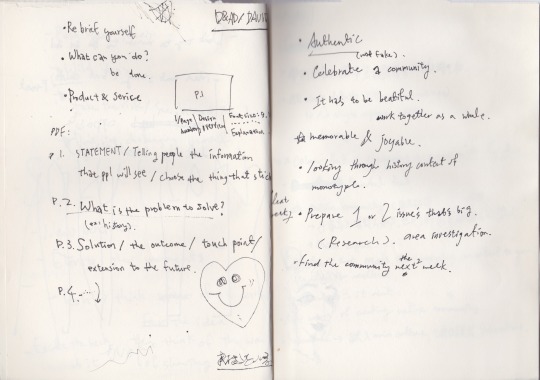
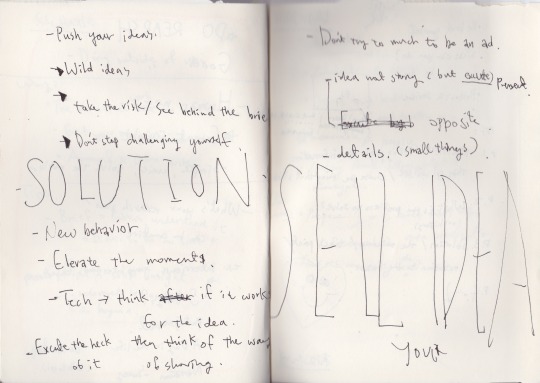

Notes from briefing
The important part is to find a community that has its value and context that has a point to be presented and celebrated with type. In the begining I wasn’t sure which kind of community they want. But I found a few stuff that I was interest in.
In the first tutorial, I have 2 very initial ideas, the first one is #This is 18, which is a project that runs by the New York Times. They asked girls to share what their communities look like all over the world. They asked young female photographers to take photos of the girls in each place and asked them about what they like and what they up to recently or giving advice to other young women.
I like the concept of linking every young female together and it is interesting to see what other young girls life is in completely different places as myself and found out even though they are in another country that is far away, they still have the same kind of issue when I was 18. And I also found their visual design of the website really interesting. It looks like online zine, using collage style to make gifs and there is even a spotify playlist that they collected the young girls the songs are listening to, and put them together.

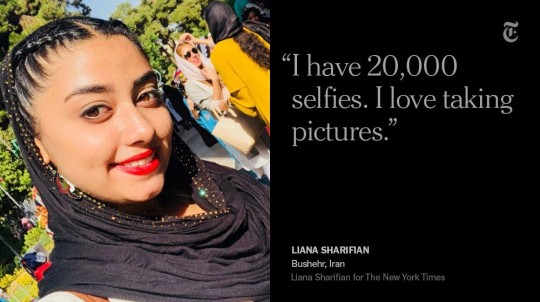

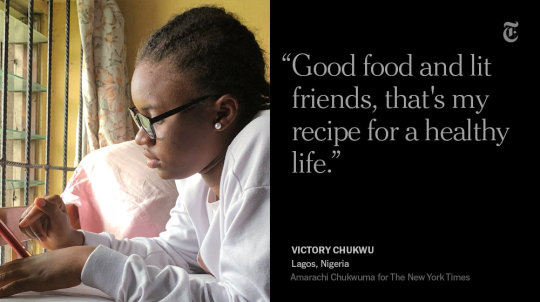
website link:
https://www.nytimes.com/interactive/2018/10/11/style/this-is-18.html
“Marking the transition from childhood to adulthood, 18 means you can finally vote, sign a lease on an apartment, obtain a credit card and buy cigarettes in the United States. In the UK, China and parts of Canada, 18 grants you entrance to a pub, while for most Israelis, it means a mandatory draft into the military. By 18, one in five women across the globe will be married. Millions will enter college or university.
The young photographers were asked to document girls in their communities – taking the photos and conducting interviews themselves, with each photographer paired with a professional mentor to guide them through the process.
Featuring 21 girls from across 12 time zones, and 15 languages, the end result is a celebration of ‘girlhood’ across oceans and cultures, through girls’ eyes – from Mexico to Mississippi, Ramallah to Russia, Bangladesh to the Bronx.” (https://www.creativeboom.com/inspiration/this-is-18-the-new-york-times-celebrates-girlhood-with-though-provoking-project-/)
The second idea is a facebook group that created for Asian people who living abroad posting memes and stuff that happened to them or funny things happened to their immigrant family. It entertains my life a lot since I join this group and it feels like you are not alone because there are so many people out there had similar experience and sometimes sees this negative stuff from a funny perspective. It change my way of thinking when I met something that is ignorant of culture or race.
Subtle Asian Traits is a Facebook group dedicated to Internet memes, jokes, and discussion surrounding the Asian experience in the West. Though the posts on the page cover a large range of topics, they mainly focus on Asian culture as experienced by the children of migrants. The group has over 1 million members and has been featured in a variety of mainstream news sources for its insights into the Asian diaspora. (wiki)
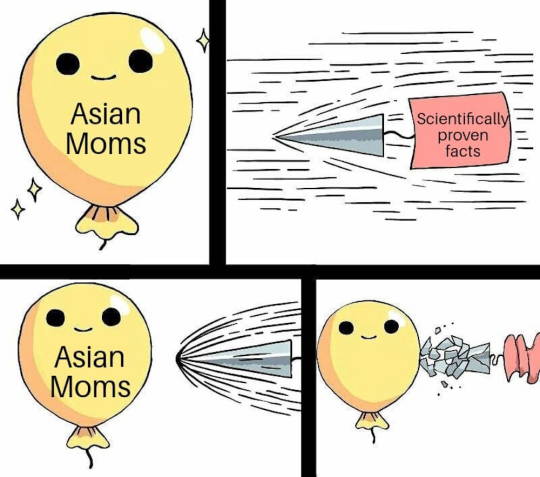


memes from Subtle asian traits
But after discussing with David and people in our group, the first idea is off brief, it doesn’t fit with the ideal of the communities monotype are seeking for. And the asian trait is at the edge of the off brief, but if I find a smart aspect of it, it could be potential but I feel like it is too board and I decided to research more for other ideas. I went back to read the brief again, and I did a bit brainstorm. I decided to focus on the communities in Taiwan, which people don’t really know about.
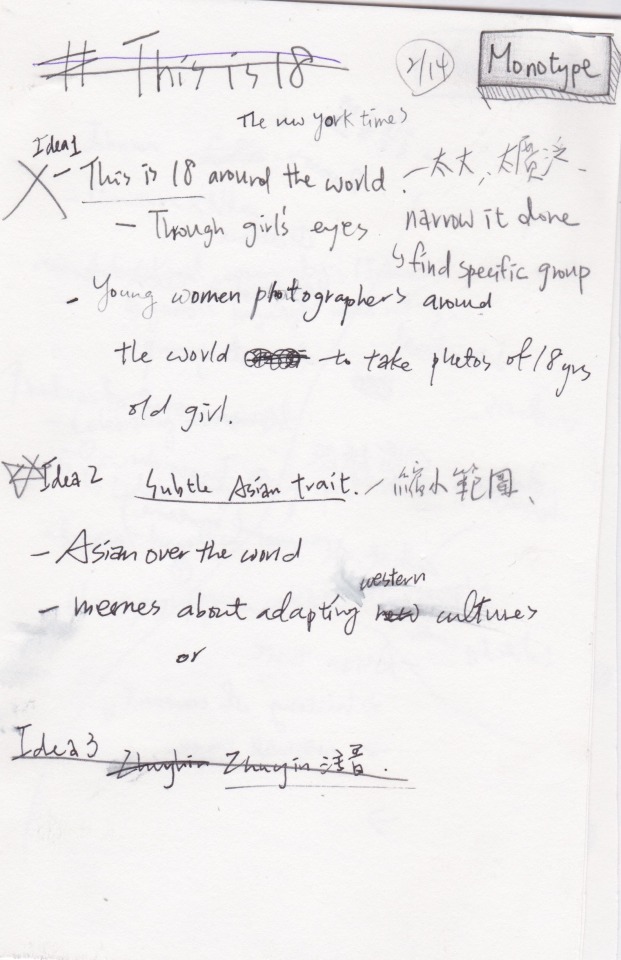

Until now, in most of the Asian countries, same-sex marriage is still illegal. Even though society is more open to different sexual orientations than before, there are still many narrow-minded people. In 2017 the Taiwanese top court decided that not protecting same-sex marriage is against the law, which will make Taiwan the first country that legalized same-sex marriage in Asia.
A panel of judges at Taiwan's top court are hearing a case that could make the island the first place in Asia to introduce gay marriage.
The case has been brought by a gay activist as well as municipal authorities from the capital, Taipei.
Taiwan's parliament has also been debating whether to pass laws that would allow same-sex marriage.
The movement has split society and prompted a conservative backlash, with vocal protests in recent months.
A panel of 14 justices are hearing arguments and will debate whether a line in Taiwan's civil code, which states that marriage is between a man and a woman, is unconstitutional.
https://www.bbc.co.uk/news/world-asia-39376423
But it also brings a huge conflict between a group of people who are homophobic and call themselves Family Guardian Coalition. They are trying to stop Legislative Yuan, which is one of the five branches of government stipulated by the Constitution of Taiwan, from changing the original law to all gender. Instead, they are hoping to make another special law for same-sex marriage which is not truly equal, because that would be creating a separation once again. Their ideals cause even more people who already don’ t understand LGBTQ have wrong impressions of them and may even go against them. They used fake news and spread it out in group chats and also sign petition to referendum against. It is an act that against human right. And the group that support Marriage equality also sign a pettition to against the Family Guardian Coalition to make another referendum to hope to remain the truly equal law. But unfortunately, they win result of referendum. It broke many LGBTQ people’s and my heart, they tore the society apart, and even cause many LGBTQ people suicide.
The power of ignorant and fake news is terrifying and more extreme than people’s imagine. And because the Family guardian group has a certain style of making fake news, the marriage equality group people starting to make similar style of how they make fake news, instead they try to make right information on those photos so people could sent to their parents who do not quite understand LGBTQ communities and marriage quality.


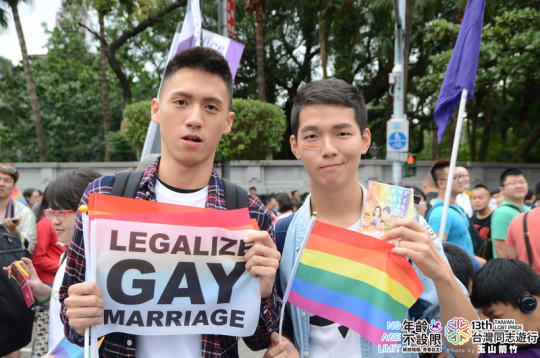

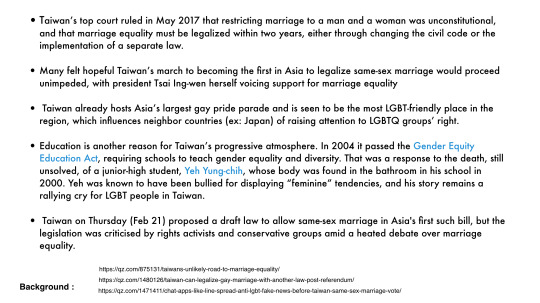
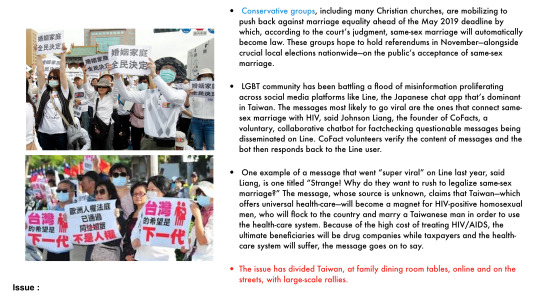

Marriage quality group information adverts(left)/ Family guardiangroup infromation adverts(right)

Marriage quality group information memes mimic family guardian group memes.

So I present this idea to David and he suggested me to find a specific or iconic traditional Taiwanese or Chinese symbol to use it as a starting point to communicate the idea.
I had another research which is about indigenous people’ languages in Taiwan. There are 16 main groups of indigenous people, and the problem is they do not have written characters that they couldn’t record their history on papers. They tell their story though founding member in each tribe and the main speaking languages in school is mandarin so more and more indigenous young people couldn’t speak their own language anymore, they also moved out from their villages to big cities to seek better jobs opportunities. And history and culture are dying quickly more than people’s imagine, and the government isn’t doing anything to protect their culture, because the main people in politics are Han- Chinese people. Doing anything for indigenous people does not benefit them. They keep taking more and more of their lands and limited more of the tradtional territories.
Background:
The original population of the island of Taiwan and its associated islands, i.e. not including Kinmen and the Matsu Islands, consisted of Taiwanese aborigines, speaking Austronesian languages and sharing mitochondrial DNA contribution with island peoples of Southeast Asia and the Pacific. Immigration of Han Chinese to the Penghu islands started as early as the 13th century, while settlement of the main island occurred from the 16th century, stimulated by the import of workers from Fujian by the Dutch in the 17th century. According to governmental statistics, over 95% of the Republic of China's population is of Han Chinese ethnicity, while 2.3% are Taiwanese aborigines of Malayo-Polynesian ethnicity. Half the population are followers of one or a mixture of 25 recognized religions. Around 93% of the religious population are followers of a mixture of Buddhism, Taoism, and Confucianism, while a minority 4.5% are followers of Christianity (include Catholics and Protestants).
The official national language is Standard Chinese, although around 70% also speak Taiwanese Hokkien and 10% speak Hakka. Japanese speakers are becoming rare as the elderly generation who lived under Japanese rule are dying out but many young Taiwanese use English or Japanese as second language. Aboriginal languages are gradually becoming extinct as the aborigines have become acculturated despite a program by the ROC government to preserve the languages. (wiki)
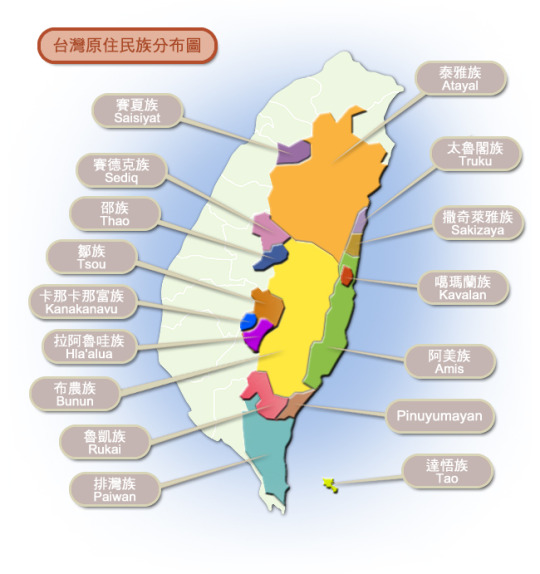
Where the indigenous groups mainly live. (mostly in mountain area)
I am aware of this issue because of many young indigenous people are trying to help to protect their lands and culture, and are shown on social media. But I never research that deep into this topic. After researching I felt like I need to do this project to bring more awareness to this topic. Even though I am just a nobody, but someone has to do something to start changing situation.
I found out that president Tsai had only officially apologized to indigenous people for the first time in history and admit that before not protecting indigenous culture and lands is a mistake. She made an indigenous history justice committee to hope that they could improve the laws which to protect their rights.
youtube
President Tsai Apologized video

https://indigenous-justice.president.gov.tw/EN
But I don’t want to be too political on doing this project because it says on the brief that they don’t want anything too political. The more I research I got more confuse and lost.
So I try to focus on the point that they don’t have their written characters, but now they are using English letters (Latin letters) to spell and write their languages. It could trace back to the past, when Dutch people came to colonized in Taiwan, they started to use Latin letters to spell their languages, and use to o preach Christian and wrote the first bible in one of indigeous language:
The Sinckan language, spoken by the Siraya people who lived in what is now Tainan, was employed by Dutch missionaries to facilitate both missionary and government affairs during the reign of Dutch East India Company in Taiwan. They also created a romanized script, compiled a dictionary of the language, and taught the natives how to write their own language with these romanized characters.
And they indigenes people just keep this way of recording until now. Although, when they once try to use Japanese characters and Chinese letters to spell out their languages through the colonized history. But it won’t match with how they actually pronounce it so they went back to use Latin letters instead. That also causes a huge problem, because the main language Taiwanese use is traditional Chinese letters. People aren’t familiar with Latin or English letters. The government used to refuse them to spell their original name in their languages. The government forced them to have a Chinese name and only until recently they could use Latin letters to register their name in the official document.
There are so much could be done to protect their culture and languages, they are the owner of this island and sadly, no one is respecting them. Their culture is so beautiful which are sustainable and loving the motherland, which is the stuff we need now due to climate change and capitalism. who are we to force them to fit in the “modern society” which took away their identity.


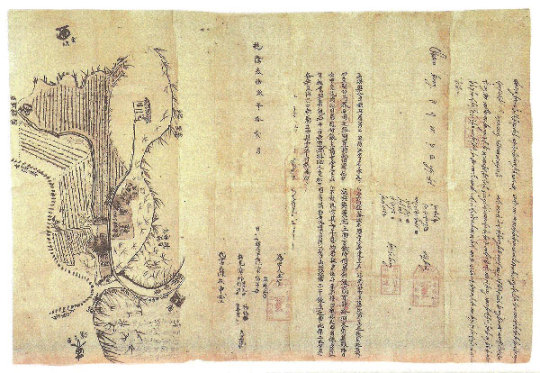
Sinckan manscirpt ( right)of a land selling contract with chinese letters(left).
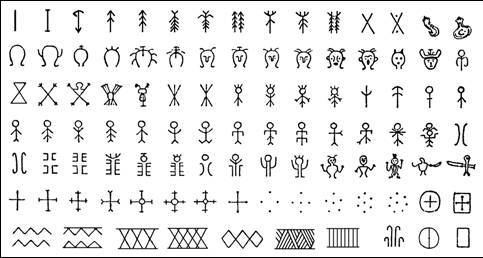
Bunun symbol for their calender which recorded when to hunt or when to harvest.
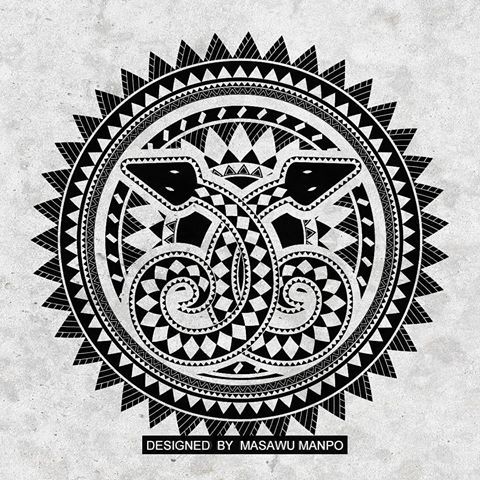
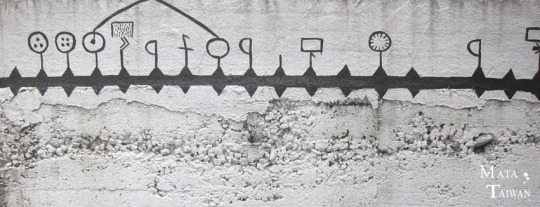
Paiwan snakes pattern.
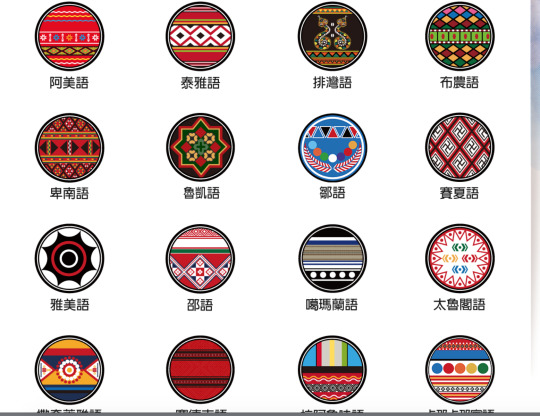
16 tribes logo pattern design
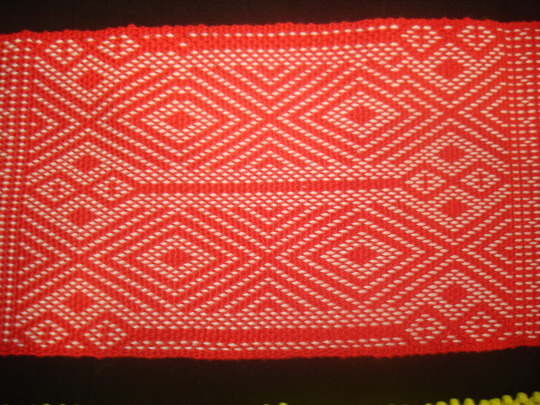
Kavalan’s textile pattern.
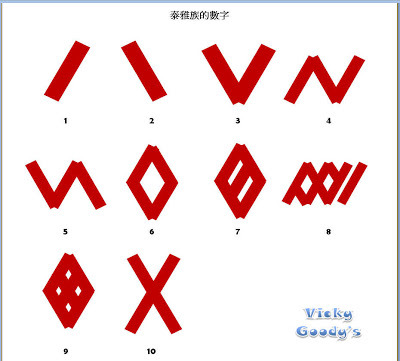
Atayal knit their characters in textile which represent number.

Atayal illustration.
Taiwanese indigenous groups are famous for their unique patterns, every tribe has its own special patterns of textile or symbol to present their spirit.
So I try to research more about indigenous people’s pattern to try to find insight and common to build an idea into my design. But I found out that it is so difficult, there is no website that recorded officially or clearly. There are also various meaning and story behind each group and their patterns. The lack of information made it more difficult and I spent too much time to research, now I don’t really have time to work on it. All of their languages are almost completely different. My first idea is to present 26 Latin characters with their 16pattern but the number isn’t right. It doesn’t make sense and I don’t want to be inappropriate to use their pattern or symbols.
I message one of the facebook pages which runs by the indigenous people that how can I design and find a common point to make my project happen. They just told me to talk to the tribe which is kind of impossible because I can’t go back to Taiwan now.
And I think of an idea is, their common is they have their own patterns and symbol in each group, so what I could think of is making an example of how they could create stamps in their patterns and those patterns could make it into both Latin letters and Chinese letters.
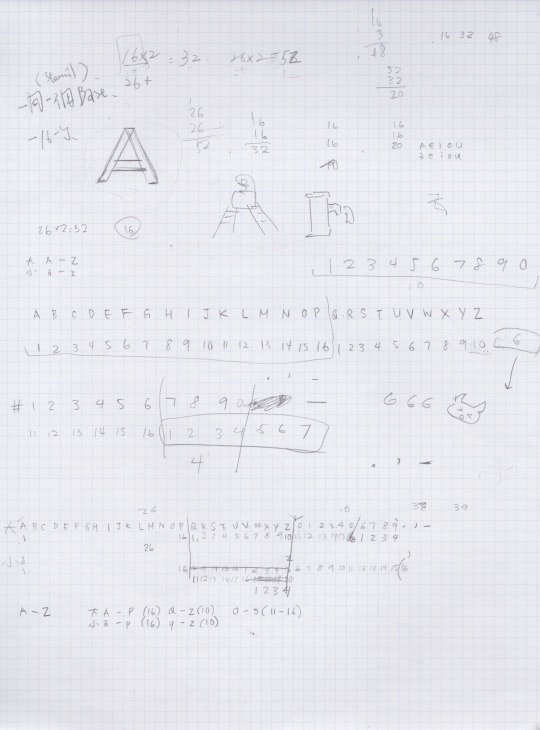
Caculating using 16 tribes as main point and create 26 latin character. (idea 1)

Linocut idea sketch.(idea2)
0 notes
Photo



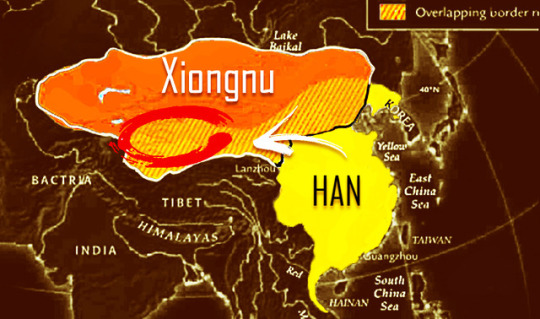


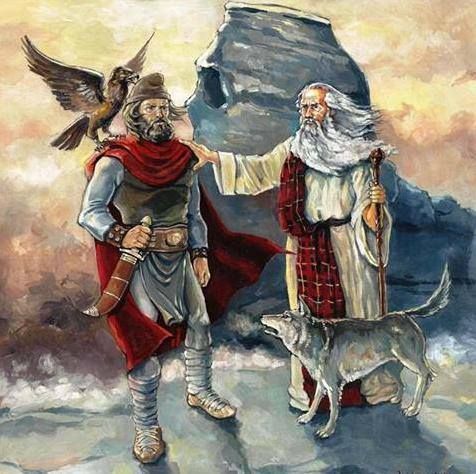


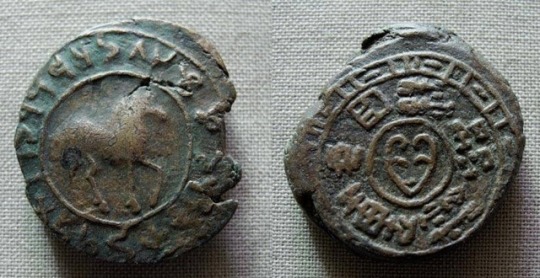
Qin Dynasty
“The Qin Dynasty established the first empire in China, starting with efforts in 230 B.C....The empire existed only briefly from 221 to 206 B.C., but the Qin Dynasty had a lasting cultural impact on the dynasties that followed.
As the ruler of Qin, Ying Zheng took the name Qin Shi Huang Di (“first emperor of Qin”), which brings together the words for “Mythical Ruler” and “God.”...Citizens were discouraged from using the emperor’s personal name in documents...One of the most important outcomes of the Qin conquest was the standardization of non-alphabetic written script across all of China, replacing the previous regional scripts.”
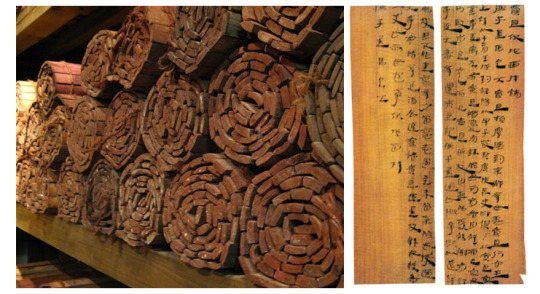
“The new script enabled parts of the empire that did not speak the same language to communicate together, and led to the founding of an imperial academy to oversee all texts. As part of the university effort, older philosophical texts were confiscated and restricted (though not destroyed, as accounts during the Han Dynasty would later claim).”

“The Qin also standardized weights and measures...impose them on merchants to simplify trade and commerce across the empire. In conjunction with this, bronze coins were created to standardize money across the regions.
The Qin empire is known for...a complex system of over 4,000 miles of road and one superhighway, the Straight Road, which ran for about 500 miles...and is the pathway on which materials for the Great Wall were transported. The empire’s borders were marked on the north by border walls that were connected, and these were expanded into the beginnings of the Great Wall.”

”Qin Shi Huang developed an army of life-size statues—almost 8,000 terra cotta warriors and 600 terra cotta horses, plus chariots, stables and...weapons and other treasures...is now famous as the Terra Cotta Army. Excavation...has been delayed due to high levels of toxic mercury at the site—it’s believed that the emperor had liquid mercury installed in the tomb to mimic rivers and lakes.”

“Qin Shi Huang died in 210 B.C. while touring eastern China. Officials traveling with him wanted to keep it secret...They also forged a letter from Qin Shi Huang, sent to crown prince Fu Su, ordering him to [die]...allowing the officials to establish Qin Shi Huang’s younger son as the new emperor...In two years time, most of the empire had revolted against the new emperor...Warlord Xiang Yu...defeated the Qin army in battle, executed the emperor, destroyed the capital and split up the empire into 18 states.
Liu Bang, who was given the Han River Valley to rule, quickly rose up against other local kings and then waged a three-year revolt against Xiang Yu. In 202 B.C., Xiang Yu [was assasinated], and Liu Bang assumed the title of emperor of the Han Dynasty, adopting many of the Qin dynasty institutions and traditions.”
(via Qin Dynasty - HISTORY)

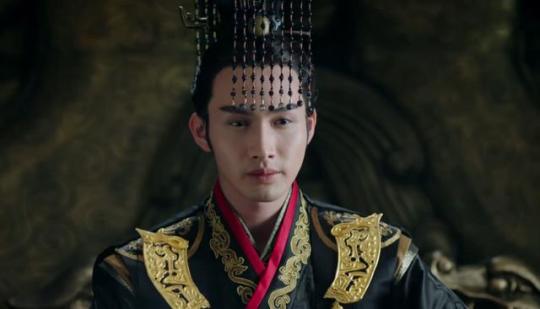
Qin Er Shi
“The First Emperor Qin Shi Huang died during one of his tours of Eastern China, on September 10, 210 BCE (Julian Calendar) at the palace in Shaqiu prefecture. The announcement of his death was withheld until the entourage, which was accompanied by Premier Li Si and the imperial court, returned to the capital Xianyang two months later. Nevertheless, Huhai and Zhao Gao were aware of Qin Shi Huang's death and began plotting an internal intrigue.
The eldest son Fusu was supposed to be elected as the next emperor. However, Premier Li Si and the Chief Eunuch Zhao Gao conspired to kill Fusu...Li Si and Zhao Gao forged a fake edict by Qin Shi Huang...the younger son Huhai acceded the throne to become the Second Emperor later known as Qin Er Shi.”

“[On] 207 BC, eunuch Zhao Gao tested his power against the emperor's. He presented a deer to the Second Emperor, but called it a horse. The emperor laughed and said "Is the chancellor perhaps mistaken, calling a deer a horse?" Then the emperor questioned those around him. Some remained silent, some aligned with Zhao Gao, and said it was a horse. Zhao Gao executed every official who called the deer a deer.
Qin Er Shi reigned only for three years and was forced to commit suicide eventually by his most trusted minister Zhao Gao at the age of 24. Qin Er Shi was condemned by the Eunuch Chancellor Zhao Gao after his death and was denied a royal burial.”

Could these be the faces of the murdered wife and son of China’s first emperor Qin Shi Huang?
“Chinese researchers have reconstructed the faces of a young man and woman who could be one of the many sons and consorts of Qin Shi Huang, the first emperor of China – and who may also have been victims of one of the most notorious and gruesome purges in Chinese history.
[I]n the emperor’s mausoleum in Xian – home to the famed terracotta army. Researchers have reconstructed the face of one of the high-status women in the tombs – possibly a wife or concubine of the emperor...she had a pair of rounded, large eyes and long, defined nose...although details such as her hair style and eye colour can only be guessed at...Intriguingly, her features do not appear to be typically Han Chinese. Instead they suggest a possible central Asian or even European ancestry.
They had been buried with a large number of valuable artefacts, including ceramics, jade accessories, silks, bronze swords, silverware and gold bars...The possible Qin prince, according to the facial reconstruction, appeared to be a man about 30 years of age with olive-shaped eyes and a pronounced nose...The faces, especially the woman’s, appeared to show more ethnic divergence than would typically be expected in Han Chinese people. Some researchers have speculated that the women might have “Western” origins – possibly Persian, or even European.”

”Qin Shi Huang commanded one of the most powerful military forces in the ancient world and conquered all the rival kingdoms to form the first unified Chinese state...they were armed with some of the most advanced weapons of the time, including crossbows that could hit targets up to 800 metres away.”

“[A]ccording to Sima Qian, a historian living in Han dynasty about a hundred years later. After the emperor’s death in 210BC his younger son Hu Hai seized the throne by covering up his father’s death and forging his will to force his older brother to commit suicide. According to Sima a “large number” of these women were sacrificed and buried in the mausoleum...although no evidence to support this has been found.
Then Hu Hai moved on to persecute his siblings, as he feared they would challenge his legitimacy.Eighteen princes were publicly executed and their bodies put on display while four princes were forced to take their own lives. Nor did Hu spare his sisters. According to Sima’s account, 10 princesses met gruesome deaths.”
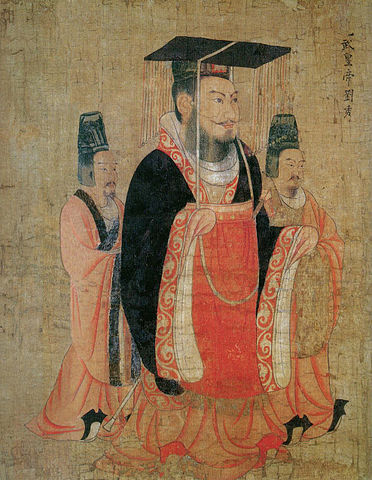
“Zhang Zhongli, a senior archaeologist at Shaanxi Archaeological Institute in Xian, said Sima Qian’s accounts were “quite reliable”. As a government historian, Sima had direct access to official archives from the Qin empire...Zhang conceded it was possible that some travellers from the West had reached the Qin empire and that the imperial court had a degree of ethnic diversity.
Following the conquests of Persia and parts of India by Alexander the Great a century earlier, his Greek successors had established a European presence in central Asia. But Zhang argued it was unlikely that there were extensive or regular contacts between China and the West at the time...The arrival of visitors from the West or the Near East would have been a rare event.”
(via Could these be the faces of the murdered wife and son of China’s first emperor Qin Shi Huang? | South China Morning Post)
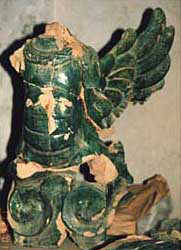
History upended! China's Terracotta Army perhaps built by Greeks
“Startling new discoveries by Chinese archaeologists suggest that the famous Terracotta Army may have been built or designed by Ancient Greek sculptors who traveled to the country...Every so often, a new discovery comes along which questions what we believed to be an irrefutable truth about the past...Until now, the impression given to us by historians is that Ancient China was something of a hermit kingdom, hidden behind its Great Wall and with little or no contact with the outside world, until along came Marco Polo in the 13th century.”

”Before this, the trade conducted through the Silk Road seemed to have been no more than the exchange of goods...However, it now seems likely that, not only was there extensive trade of goods between China and the West, but substantial cultural exchange, as well, even to the extent of Europeans living in China as guests.”

”In modern times, historians have shown that China had a highly-developed civilization on a par with Ancient Egypt, Greece and Rome, which co-existed during the same period in history. However, it has always been presumed that the great Western civilizations of antiquity and the Chinese Imperial dynasties developed in isolation from one another.”

“That now appears to be incorrect and just as the civilizations of Mesopotamia, Egypt, Greece and Rome influenced one another, China could also have borrowed cultural styles and expertise from the Greeks. The recent discovery of coins from the Roman Empire in Japan also suggests that our concept of East-West relations in ancient times was erroneous.”

“It is thought that Greek statues of the period, which arrived in Asia following the conquests of Alexander the Great, caught the attention of Chinese royal artists and statesmen and, consequently, Greek craftsmen were invited to China to advise and participate in the building of the famous army.
“We now have evidence that close contact existed between the first emperor’s China and the west... We now think the Terracotta Army, the acrobats, and the bronze sculptures found on site, have been inspired by ancient Greek sculptures and art.”
(via History upended! China's Terracotta Army perhaps built by Greeks | Digital Journal)

Secrets of Chinese Terra-Cotta Warrior Weapons Revealed
“Now, scientists have figured out how the bronze triggers for the crossbows of the 8,000 terra-cotta warriors were manufactured. Teams of craftspeople worked in small groups to produce the bronze pieces in batches for the tomb of ancient Emperor Qin Shi Huang, according to a new study detailed in the March issue of the journal Antiquity...craftspeople sculpted about 8,000 colorful warriors - likely using real human beings as inspiration - and those warriors wore stone armor and "wielded" lances, swords and crossbows.”

”But it wasn't clear exactly how these ancient weapons were made. The crossbows were made of wood or bamboo that rotted long ago, and only the tips and triggers for the bows remained...The lack of wear on the metal pieces suggests the weapons were never used in actual battle, but were instead built solely for the tomb...The pieces were mostly uniform, suggesting the interlocking trigger parts were made in the same or nearly-identical molds and produced in small batches."
(via Secrets of Chinese Terra-Cotta Warrior Weapons Revealed | Live Science)


TERRACOTTA WARRIORS: DEFENDERS OF CHINA’S FIRST EMPEROR
“[T]hey were first arranged in battle formation, each one of the almost 8,000 warriors was colorfully painted, and his clothing, armor, face, hair, headdress, and hands were realistically portrayed. however, with the demise of the empire, the Han rebels burnt down the pits, destroying the sculptures and changing their colors forever. cinnabar, malachite, and azurite, as well as bone white and Han purple (a rare pigment produced from barium copper silicate), were commonly mixed with lacquer, a natural resin from the lacquer tree...large quantities of pigments were ground into sufficient powder...for the red pigment alone, about two tons of cinnabar powder would have been prepared! the original kneeling archer is one of only six still bearing, traces of the pigments.”

“[T]he Han dynasty condemned its Qin predecessor, yet retained most of the First Emperor’s policies. in Han times, the general view of the First Emperor was that he had governed harshly, capriciously, and onerously. after his death, the people rebelled out of despair...the first Han ruler, Emperor Gaozu...continued the policies of the First Emperor, including a single law code for all subjects, an appointed bureaucracy, an imperial academy, uniform standards in writing and other fields, and an army based on the peasantry. above all, he upheld the idea of the Emperor: a quasi-divine person who embodied the state, personified the unity of a diverse land and acted as the supreme governor judge, and priest of the realm.”

(via TERRACOTTA WARRIORS: DEFENDERS OF CHINA’S FIRST EMPEROR | Lost, Found and Remembered blog)

Eight Kings of the Relic Story, fresco in the Maya cave in Kizil, Tarim Basin, China

Dacians
“The Dacians were known as Geta (plural Getae) in Ancient Greek writings, and as Dacus (plural Daci) or Getae in Roman documents...It was Herodotus who first used the ethnonym Getae in his Histories. In Greek and Latin, in the writings of Julius Caesar, Strabo, and Pliny the Elder, the people became known as 'the Dacians'. Getae and Dacians were interchangeable terms, or used with some confusion by the Greeks.”

“There is no doubt that the Thracian language was related to the Dacian language which was spoken in what is today Romania, before some of that area was occupied by the Romans. Also, both Thracian and Dacian have one of the main satem characteristic changes of Indo-European language, *k and *g to *s and *z. With regard to the term "Getic" (Getae), even though attempts have been made to distinguish between Dacian and Getic, there seems no compelling reason to disregard the view of the Greek geographer Strabo that the Daci and the Getae, Thracian tribes dwelling north of the Danube (the Daci in the west of the area and the Getae further east), were one and the same people and spoke the same language.”
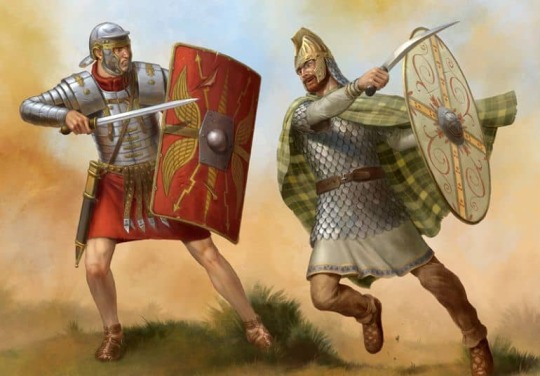
“After the Dacian Wars (AD 101-6), the Romans occupied only about half of the wider Dacian region. The Roman province of Dacia covered just western Wallachia as far as the Limes Transalutanus (East of the river Aluta, or Olt) and Transylvania.”

Roman-Dacian mercenary soldier
Daqin
“Daqin is the ancient Chinese name for the Roman Empire or, depending on context, the Near East, especially Syria. It literally means the "great China", Qin (Chinese: 秦; pinyin: Qín; Wade–Giles: Ch'in) being the name of the founding dynasty of the Chinese Empire. Historian John Foster defined it as "the Roman Empire, or rather that part of it which alone was known to the Chinese, Syria.
The term Daqin (Chinese: 大秦; pinyin: Dà qín; Wade–Giles: Ta-ch'in), meaning "Great Qin," is derived from the dynasty founded by Qin Shihuangdi, ruler of the State of Qin and China's first emperor who unified China's Warring States by 221 BC. The prefix "da" (大) or "great" signified that the Roman Empire was on par with the might of the Qin Empire and was viewed as a utopian land located to the northwest of the Parthian Empire.”
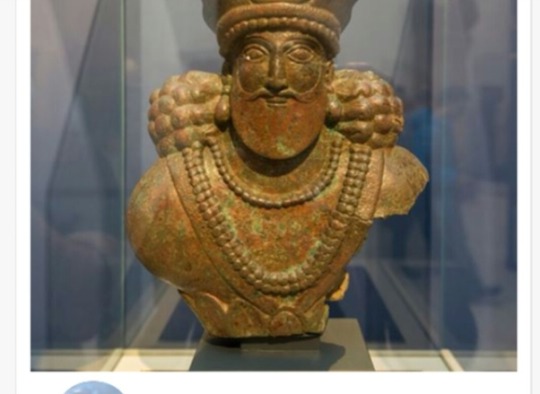
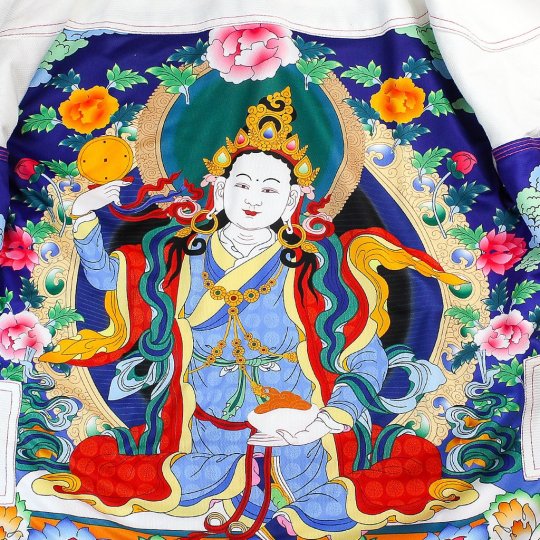
Hanfu movement
“The Hanfu movement is a social movement that has developed in China since the beginning of the 21st century. In 2003, supporters of Han revivalism launched the website Hanwang, "Han Network" to promote "traditional" Han clothing and Han supremacist agenda. Participants revitalize their utopian vision of the authentic “Great Han” and corresponding “real China” through dress, reinvented Confucian ritual and anti-foreign sentiment. They seek to restore and stress the purity and superiority of "traditional Chinese culture" through the promotion of the wearing of the "hanfu" which they claim to be the "traditional ethnic clothing" of the majority Han Chinese ethnic group.”

“You can’t have nationalism without race. That’s what we want to do: promote Han racial nationalism...The multiracial nationalism we have now in China, with 56 races as part of a larger “Chinese race” is a big scam. It was imposed upon us by the Manchus, forcing us Han, the core of China from the beginning of time, into submission. All that this nationalism has done is to weaken China. You can’t just destroy the distinction between civilization and barbarism, incorporate a bunch of barbarians into our nation and then expect a strong nation. All this talk of “wealth and power” is empty and meaningless without Han nationalism.“

“The word "Hanfu" is not included in the authoritative dictionary of Standard Mandarin Chinese "Contemporary Chinese Dictionary" and its modern definition was created by internet users around the year 2003...According to "Dictionary of Old Chinese Clothing", the term "hanfu" means "dress of the Han people." It is a concept to distinguish Han people's dress from minority clothing. The term/concept of "hanfu" which is not commonly used in ancient times...there is no clear history indicating that there was any such apparel in existence under the name "hanfu".

“The advocates of the movement believe the term "hanfu" refers to the vanished, pre-17th century historical clothing worn by the Han people, and the meaning of Hanfu in the movement is the same from what it was in the historical records, yet scholarly research indicates that the "modern definition of Hanfu" was created on Chinese-language, collaborative, web-based encyclopedia Baidu Baike and Chinese online platform“hanwang” by internet users.”

Kimono
“The kimono (着物) is a traditional Japanese garment. The term means "garment"; ki (着) means "to wear", and mono (物) means "thing" or "object". It has come to mean full-length formal robes...Kimonos are often worn for important festivals and formal occasions as formal clothing.”


Kinchaku
“A traditional Japanese drawstring bag or pouch, worn like a purse or handbag, for carrying around personal possessions.“

Geta
“Geta (下駄) are a form of traditional Japanese footwear that resemble clogs and flip-flops. They are a kind of sandal with an elevated wooden base held onto the foot with a fabric thong to keep the foot well above the ground.”

Qípáo
“The cheongsam is a typical, traditional, and feminine body-hugging dress with distinctive Chinese features of Manchu origin. It was also known as qípáo and was the Republic of China's mandarin gown.”

”When the Manchus ruled China during the Qing dynasty, they used an administrative division called the Eight Banner system. Originally only the Manchu households were organised within this system, but over time Mongols and Han Chinese were incorporated. The Manchus, and anyone living under the Eight Banners system, wore different clothing from ordinary civilians. Thus they became known as Banner People (Qí Rén, Qilin, Kirin). The Manchu clothing that they wore consisted of similar long robes for both men and women. These were called changpao.”

“After the feudal Qing dynasty was overturned, Chinese feminists called for women's liberation from traditional roles and they led several movements against the Neo-Confucian gender segregation, including a termination of bound feet for women, cutting off long hair which was conventionally symbolized as women's oriental beauty, and encouraging women to wear men's one-piece clothing, Changshan or "changpao"."Changpao" was traditionally taken as men's patent throughout the long history since Han Dynasty (202 BC to 220) to Qing Dynasty (1616–1911). During that time, Chinese Han female's clothing gradually developed into two pieces. Women were forbidden to wear robes as men did and instead had to wear tops and bottoms known as "Liang jie yi".”

Áo giao lĩnh
“The Áo giao lĩnh (Giao lãnh y,"cross-collared robe") was a traditional cross-collared robe worn by Vietnamese before the 19th century. During the Nguyen dynasty, it was replaced by the áo dài and became obsolete.”

Chiton
“A chiton was a form of clothing.There are two forms of chiton, the Doric chiton and the later Ionic chiton...The Doric chiton is a single rectangle of woolen or linen fabric. It can be worn plain or with an overfold called an apoptygma, which is more common to women...The Ionic chiton could also be made from linen or wool and was draped without the fold and held in place from neck to wrist by several small pins. A large belt called a zoster could be worn over the chiton.
A sleeved form was worn by priests and actors. The colour or pattern would often indicate status, but varied over time. The chiton was the outfit of Aphrodite because it was considered very feminine, although men also wore it. Dionysus is often depicted wearing it. The chiton was also worn by the Romans after the 3rd century BCE. However, they referred to it as a tunica.”

Khilat
“A khalat/[khilat] is a loose, long-sleeved outer silk or cotton robe common in Central Asia, Pakistan and northern India and worn both by men and women, although in differing styles. Historically, richly adorned khalats have been used as honorific awards, similarly to mantle. The word khalat/khilat was also used to denote the ceremony of awarding the honorific robe. Such social aspects of clothing have been known in many societies. By the 19th century in British India the word khillat had come to mean any gift of money or goods awarded by the Government of India in return for service from tributary princes, khans and tribal leaders.”

Greek key
“A meander or meandros is a decorative border constructed from a continuous line, shaped into a repeated motif. Such a design is also called the Greek fret or Greek key design, although these are modern designations.
Meanders are common decorative elements in Greek and Roman art. In ancient Greece they appear in many architectural friezes, and in bands on the pottery of ancient Greece...They were among the most important symbols in ancient Greece; and perhaps symbolized infinity and unity; many ancient Greek temples incorporated the sign of the meander.”

“Meanders are also prevalent on the pavement mosaics found in Roman villas throughout the Roman empire. A good example is at the Chedworth Roman Villa in England, leading many historians to believe that the pattern was part of the original inspiration for the Latin "G" character.”
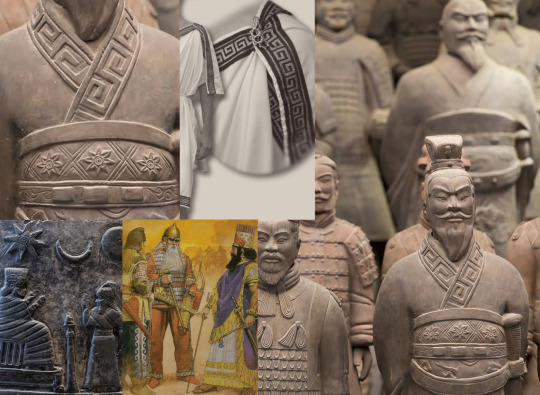
Star of Ishtar
“The Star of Ishtar or Star of Inanna is a symbol of the ancient Sumerian goddess Inanna and her East Semitic counterpart Ishtar. Alongside the lion, it was one of Ishtar's primary symbols. Because Ishtar was associated with the planet Venus, the star is also known as the Star of Venus.
The star of Inanna usually had eight points...It was Inanna's most common symbol and, in later times, it became the most common symbol of the goddess Ishtar...During later times, slaves who worked in Ishtar's temples were sometimes branded with the seal of the eight-pointed star. On boundary stones and cylinder seals, the eight-pointed star is sometimes shown alongside the crescent moon, which was the symbol of Sin, god of the Moon, and the rayed solar disk, which was a symbol of Shamash, the god of the Sun.”

The Forbidden History of Ancient China: Aryan Mummies and Hundreds of Pyramids
“The discoveries in the 1980s of the undisturbed 4,000-year-old "Beauty of Loulan" and the younger 3,000-year-old body of the "Charchan Man" are legendary in world archaeological circles for the fine state of their preservation and for the wealth of knowledge they bring to modern research...The ancient corpses, which avoided natural decomposition due to the dry atmosphere and alkaline soils in the Tarim Basin, have not only given scientists a look into their physical biologies, but their clothes, tools and burial rituals have given historians a glimpse into life in the Bronze Age.”

“[R]esearch has shown that in the second millennium BC, the oldest mummies, like the Loulan Beauty, were the earliest settlers in the Tarim Basin. From the evidence available, we have found that during the first 1,000 years after the Loulan Beauty, the only settlers in the Tarim Basin were Caucasoid."

”East Asian peoples only began showing up in the eastern portions of the Tarim Basin about 3,000 years ago, Mair said, while the Uighur peoples arrived after the collapse of the Orkon Uighur Kingdom, largely based in modern day Mongolia, around the year 842. Modern DNA and ancient DNA show that Uighurs, Kazaks, Krygyzs, the peoples of Central Asia are all mixed Caucasian and East Asian. The modern and ancient DNA tell the same story." China has only allowed the genetic studies in the last few years, with a 2004 study carried out by Jilin University also finding that the mummies' DNA had Europoid genes, further proving that the earliest settlers of Western China were not East Asians.”
(via The Forbidden History of Ancient China: Aryan Mummies and Hundreds of Pyramids | Humans Are Free blog)

Mysterious Ancient Chinese Mummy Buried with Greek Goddesses
“[A] rare find: a 1500-year-old tomb full of artifacts, complete with an intact mummy...The tomb also contained a puzzling find: a gilded silver bowl decorated with busts of gods and goddesses of the Greek Pantheon...However, the manufacturing techniques and design of the metalwork show some elements belonging to the peoples living in the Eurasian steppes. There are even some rare relics, such as the gilt silver bowl with Hellenistic motifs, which seem to be imports from Central and Western Asia.”

“The bowl inlaid with the Greek goddesses, in particular, has archaeologists fascinated and has been described as the most striking artifact found in the tomb. The fact that a dynastic ruler in a remote region of what today is Inner Mongolia had access to Greek trade goods shows a much higher degree of cultural diversity and sophistication than what has been typically assumed. This find, coupled with last year’s discovery of two individuals of Chinese ancestry in an ancient Roman cemetery, shows that the Middle Kingdom’s long and complex relationship with the rest of the world just might be more complex than we think.”
(via Mysterious Ancient Chinese Mummy Buried with Greek Goddesses | Earth Mystery News)

Pyramids in China

“U.S. Air Force Pilot James Gaussman was returning to Assam, in India...he later wrote:
"I flew around a mountain and then we came to a valley. Directly below us was a gigantic white pyramid. It looked as if it were from a fairy tale. The pyramid was draped in shimmering white. It could have been metal, or some other form of stone. It was white on all sides. What was most curious about it was its capstone: a large piece of precious gem-like material. I was deeply moved by the colossal size of the thing."
When Gaussman arrived back in Assam, combat duties pushed the sighting from his mind. Photographs he had taken of the giant pyramid would not be published for another 45 years. Till then, even his report would be buried in the Secret Service files of the U.S. military.”

“On March 28, 1947 the "New York Times" reported about that discovery. In an interview with the newspaper, the former far east director of the Transworld Airlines, Maurice Sheahan, says he has seen 40 miles southwest of Xian a gigantic pyramid."I was impressed by its perfect pyramidal form and its great size," says Sheahan. Later, on March 30, 1947 the "New York Sunday Times"...published the first photo, which is actually made in 1945 by Gaussman, and that was soon forgotten.”

“There are indeed pyramids in China! Google Earth confirmed that again. The biggest...pyramids are in the province Shaanxi, north of the city Sian (Xi´an). On the satellite photographs of Google Earth, no "white pyramid" is to be recognized...two pyramids are visible, but however they are not identical to the photo from 1947.”
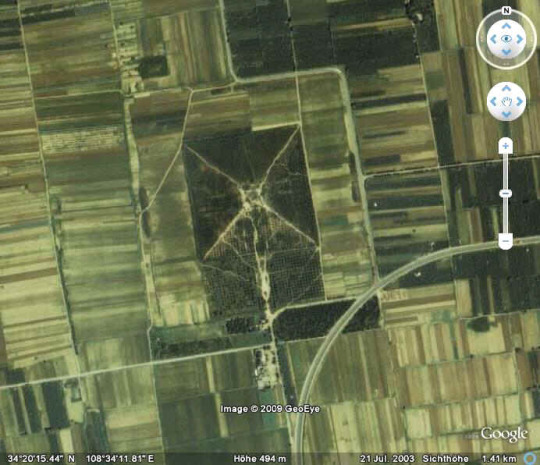
“This pyramid, of February 2009 by Google Earth, shows again the wellknown Maoling Mausoleum but in a better solution from GeoEye. The comparison above shows that is indeed the "white pyramid".

(via Pyramids in China | Ancient Mistery blog)


Liquid mercury found under Mexican pyramid could lead to king's tomb
“An archaeologist has discovered liquid mercury at the end of a tunnel beneath a Mexican pyramid... had discovered “large quantities” of liquid mercury in a chamber below the Pyramid of the Feathered Serpent, the third largest pyramid of Teotihuacan, the ruined city in central Mexico.”
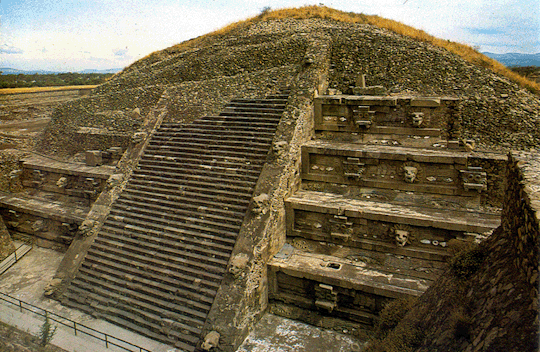
“Mercury is toxic...archaeologists have found mercury at three other sites around Central America...mercury was not the only object of fascination: “a lot of ritual objects were made reflective with mica,” a sparkling mineral likely imported to the region.”

“Water was also precious to many of the people of Mesoamerica, who knew of underground water systems and lakes that could be accessed through caves. Teotihuacan once had springs as well, though they are now dried out...the ancient Mesoamericans could produce liquid mercury by heating mercury ore, known as cinnabar, which they also used for its blood-red pigment. The Maya used cinnabar to decorate jade objects and color the bodies of their royalty, for instance; the people of Teotihuacan – for whom archaeologists have not agreed on a name – have not left any obvious royal remains for study.”

(via Liquid mercury found under Mexican pyramid could lead to king's tomb | The Guardian)


Cinnabar
“Cinnabar is a toxic mercury sulfide mineral with a chemical composition of HgS. It is the only important ore of mercury. It has a bright red color that has caused people to use it as a pigment and carve it into jewelry and ornaments for thousands of years in many parts of the world. Because it is toxic, its pigment and jewelry uses have almost been discontinued.
Cinnabar was mined at the volcano, ground into a very fine powder and then mixed with liquids to produce many types of paint. The bright red pigments known as "vermilion" and "Chinese red" were originally made from cinnabar.”
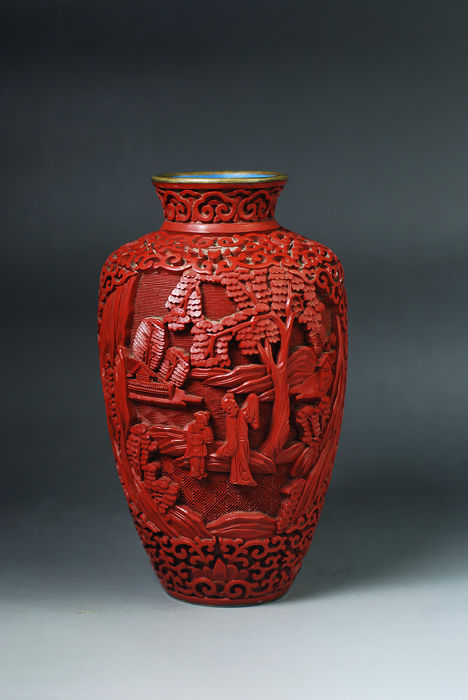
“Cinnabar has been especially popular for making red lacquer in China. Its use in lacquer has declined because of its toxicity, but some use of cinnabar in lacquer continues. Cinnabar has also been used in powdered form for ritual blessings and burials. Powdered cinnabar was used as a cosmetic in many parts of the world for thousands of years. Eventually it was discovered that cinnabar is toxic, and its use in pigments, paints, and cosmetics began to decline.”

“Because cinnabar is the only important ore of mercury, the demand for mercury has driven mining activity. Mercury has many uses...Because it is toxic, it was once widely used to protect seed corn from fungus and to deworm materials used to make felt...Mercury has been widely used in mining to separate gold and silver from ores and stream sediments.”
(via Cinnabar | Geology.com)
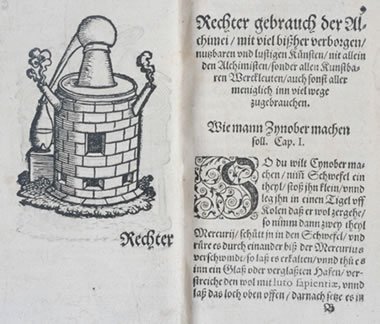
European mercury kiln capturing mercury vapors from heated cinnabar
youtube
Amalgam (chemistry)
“An amalgam is an alloy of mercury with another metal, which may be a liquid, a soft paste or a solid, depending upon the proportion of mercury. These alloys are formed through metallic bonding, with the electrostatic attractive force of the conduction electrons working to bind all the positively charged metal ions together into a crystal lattice structure. Almost all metals can form amalgams with mercury, the notable exceptions being iron, platinum, tungsten, and tantalum. Silver-mercury amalgams are important in dentistry, and gold-mercury amalgam is used in the extraction of gold from ore.”

”Mercury has been used in gold and silver mining because of the convenience and the ease with which mercury and the precious metals will amalgamate. In gold placer mining, in which minute specks of gold are washed from sand or gravel deposits, mercury was often used to separate the gold from other heavy minerals. After all of the practical metal had been taken out from the ore, the mercury was dispensed down a long copper trough, which formed a thin coating of mercury on the exterior. The waste ore was then transferred down the trough, and gold in the waste amalgamated with the mercury. This coating would then be scraped off and refined by evaporation to get rid of the mercury, leaving behind somewhat high-purity gold.”

“Mercury amalgamation was first used on silver ores with the development of the patio process in Mexico in 1557. Where stamp mills were used to crush gold-bearing ore to fines, a part of the extraction process involved the use of mercury-wetted copper plates, over which the crushed fines were washed. A periodic scraping and re-mercurizing of the plate resulted in amalgam for further processing. Amalgam obtained by either process was then heated in a distillation retort, recovering the mercury for reuse and leaving behind the gold”
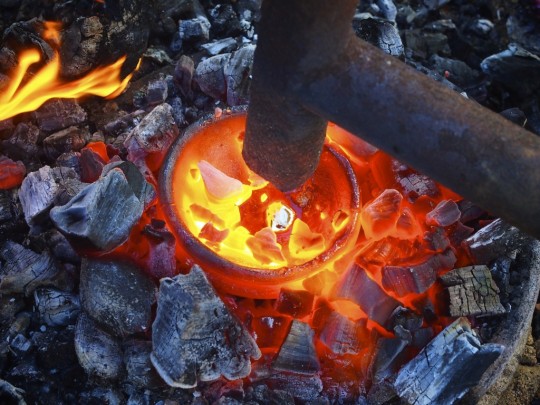
Mercury
“Mercury is one of the basic chemical elements. It is a heavy, silvery metal that is liquid at normal temperatures. Mercury readily forms alloys with other metals, and this makes it useful in processing gold and silver...Mercury has been found in Egyptian tombs dating to about 1500 B.C. , and it was probably used for cosmetic and medicinal purposes even earlier. In about 350 B.C. , the Greek philosopher and scientist Aristotle described how cinnabar ore was heated to extract mercury for religious ceremonies. The Romans used mercury for a variety of purposes and gave it the name hydrargyrum, meaning liquid silver, from which the chemical symbol for mercury, Hg, is derived. Demand for mercury greatly increased in 1557 with the development of a process that used mercury to extract silver from its ore.”

(via Mercury | How Products Are Made)
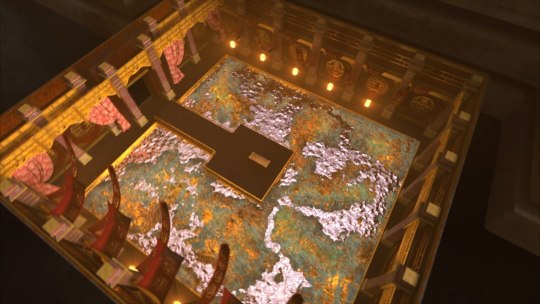
Flowing rivers of mercury
“[T]he Han dynasty historian Sima Qian, writing in second century BC...Most enticing of all is a detail relayed by Qian: ‘Mercury was used to fashion the hundred rivers, the Yellow river and the Yangtze river, and the seas in such a way that they flowed’.
By finally defeating the last of the rival states in 221BC, Zheng became Qin Shi Huangdi (meaning the First Qin Emperor), ruler of all China. Some etymologies trace the name China itself to the First Emperor dynasty (pronounced ‘chin’), and so you might imagine that it would have a very special status in Chinese history. But the unified state barely outlasted the death of the First Emperor himself – four years later it succumbed to a rebellion that became the much more durable Han dynasty (206BC–AD220).”

“The mound itself was originally about 0.5km by 0.5km (erosion has shrunk it a little) and the burial chamber lies about 30–40m below the original ground surface. Its shape has been mapped out by measuring gravity anomalies in the ground – an indication of hollow or less dense structures – and by looking for changes in the electrical resistivity of the soil, which result from buried structures or cavities. In this way, Chinese archaeologists have figured out the basic layout of the tomb over the past several decades. The chamber is about 80m east to west by 50m north to south, surrounded by a wall of closely packed earth and – to judge from other ancient Chinese tombs – perhaps water-proofed with stone covered with red lacquer. In 2000 researchers discovered that towards the edge of the mound an underground dam and drainage system helps to keep water away from the chamber.”

”The first detailed study of mercury levels in the mound were conducted in the early 1980s...If you squint at this distribution, you can persuade yourself that it matches the locations of the two great rivers of China – the Yellow and Yangtze – as seen from the ancient Qin capital of Xianyang, close to modern Xi’an. ‘The distribution of mercury level corresponds to the location of waterways in the Qin empire’...however, isn’t so sure that one can conclude much from the present day mercury distribution...’The mercury will have volatilised into nearby soils during this long time, so it would be impossible to show up detailed information that we can connect with particular rivers or lakes.’”

”In any case, just because the mausoleum apparently contains a lot of mercury doesn’t in itself verify Qian’s account. Mercury had other uses too, particularly in alchemy, which has some of its oldest roots in China. In the west this art was commonly associated with attempts to make gold from other metals, and some Chinese alchemists tried that too – in 144BC the Han emperor Jingdi decreed that anyone caught trying to make counterfeit gold should be executed.
And perhaps mercury (in Chinese ‘shui yin’, literally ‘water silver’) was the key to these. Chinese legend tells of one Huang An, who prolonged his life for at least 10,000 years by eating mercury sulfide (the mineral cinnabar)...mercury was a common ingredient of medicines being used to treat infected sores, scabies, ringworm and (even more alarmingly) as a sedative for mania and insomnia. Because it is bright red, cinnabar was also used for art and decoration in China since around the second millennium BC. Its artificial form, produced in the west since the Roman era, became known as the pigment vermilion.”

“One of the most important uses of mercury at this time has a particularly alchemical tinge. Gold and silver dissolve in mercury to form amalgams, and such mixtures were used for gilt plating. The amalgam was rubbed on and heated to evaporate the mercury leaving behind a gleaming coat of precious metal.
Throughout antiquity cinnabar was the source of all mercury metal. There was a lot of this mineral in China, particularly in the west. Shaanxi alone contains almost a fifth of all the cinnabar reserves in the country, and there are very ancient mines in Xunyang county in the south of the province that are a good candidate source of the mercury apparently in the First Emperor’s tomb.“

“To extract mercury from cinnabar one need only roast it in air, converting the sulfur to sulfur dioxide while the mercury is released as vapour that can then be condensed. Since mercury boils at 357°C, this process needs temperatures well within the capabilities of Qin-era kilns...closed chambers weren’t used until the Han period.
But despite there being a mature mercury-refining technology by the time of the First Emperor... So even though mercury, either as cinnabar or as the elemental metal, has been found in tombs dating back as far as the second millennium BC, it’s not clear why it was put there...Yet even if this mercury was indeed used for fantastical landscaping...the chamber might have contained at most 100 tons of the liquid metal: around 7m3.”

(via Flowing rivers of mercury | The Royal Society of Chemistry)
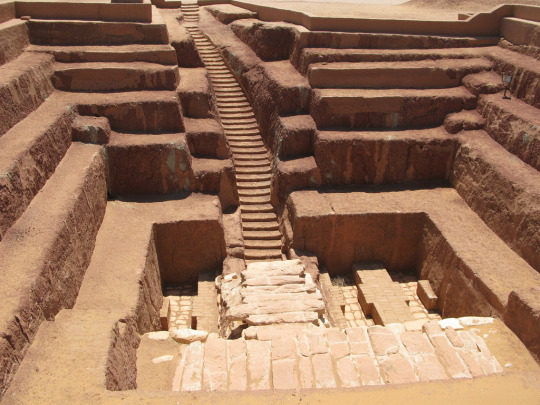
Qila al-Dabba Mastaba, Dakla Oasis, Giza, Egypt

The myth of red mercury
““Red mercury”, one of the things the robbers may have been looking for, is a mythic substance for many Egyptians. They believe that in the throats of mummies there is a liquid called red mercury. If someone possesses this liquid, he or she will be able to control the spirits and become rich. Of course, there is no such thing as red mercury, but many people still believe in it all over Egypt.”
(via The myth of red mercury | Al-Ahram Weekly)

Giza Plateau Mastaba


Gold
“The oldest known map of a gold mine was drawn in the 19th Dynasty of Ancient Egypt (1320–1200 BC), whereas the first written reference to gold was recorded in the 12th Dynasty around 1900 BC...Egypt and especially Nubia had the resources to make them major gold-producing areas for much of history.”

“In Roman metallurgy, new methods for extracting gold on a large scale were developed by introducing hydraulic mining methods, especially in Hispania from 25 BC onwards and in Dacia from 106 AD onwards. One of their largest mines was at Las Medulas in León, where seven long aqueducts enabled them to sluice most of a large alluvial deposit. The mines at Roşia Montană in Transylvania were also very large, and until very recently, still mined by opencast methods.”

“The European exploration of the Americas was fueled in no small part by reports of the gold ornaments displayed in great profusion by Native American peoples, especially in Mesoamerica, Peru, Ecuador and Colombia. The Aztecs regarded gold as the product of the gods, calling it literally "god excrement" (teocuitlatl in Nahuatl), and after Moctezuma II was killed, most of this gold was shipped to Spain.”


Gold in Ancient China
“[A]ncient literary references to gold as a material are not clear cut. The Chinese character for gold, 金 jin was generally used to mean ‘metal’ without specifically referring to gold. Texts telling of either its mining or use are not only scarce but also general.”
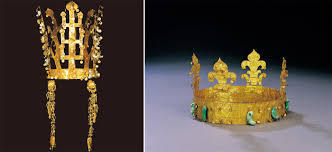
“Initial descriptions of gold transactions recounted amounts of a few dozen to a hundred jin at a time being handed over, but it has since been confirmed that after the Qin dynasty there was never transactions of that amount at one time. The amount of gold would therefore seem to have mysteriously vanished...Certainly since then, there has not been anywhere near an abundance of gold in China ”
(via Gold in Ancient China | China Dispatch)
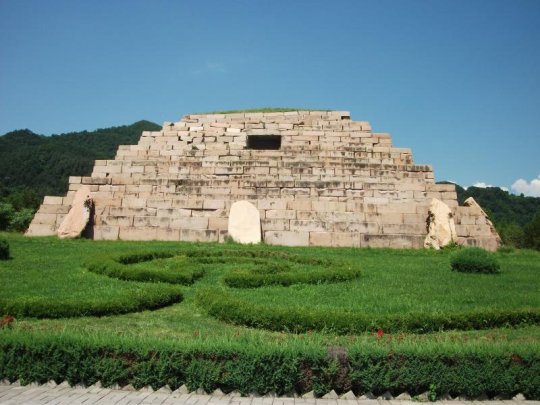
Ancient Korea
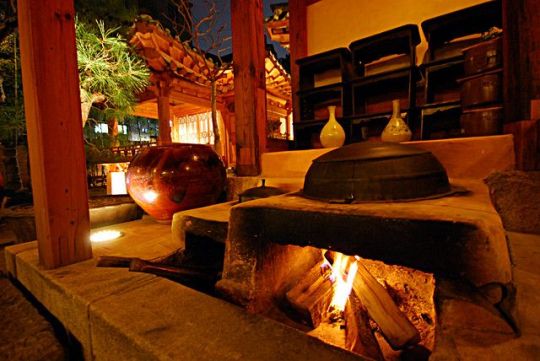
“Ancient Korea has provided many unique contributions to world culture including the invention of movable metal type printing, superb celadon ceramics, the exquisite gold crowns of Silla, the oldest astronomical observatory in Asia, fine gilt-bronze Buddhist figurines, stone pagodas, hanji, the most prized paper in the world, and the ondol underfloor heating system.”


“The Korean Bronze Age covered the same period with the metal culture brought from Manchuria. The presence of fine bronze goods such as swords, bells, and mirrors in certain tombs along the Taedon River indicates a culture with a tribal elite. Other common bronze items include slender daggers, spearheads, belt buckles, and fan-shaped axes. The Korean Iron Age began in the 3rd century BCE...It was in this period that the first state was formed, Gojoseon.”

“Gojoseon prospered due to agricultural improvements (with iron tools introduced from China) and plentiful natural resources like gold, silver, copper, tin, and zinc. At this time the famous ondol underfloor heating system was invented and the first Korean grey stoneware produced...Gojoseon finally collapsed in the 2nd century BCE, and its successor, Wiman Joseon, did not last very long either for in 108 BCE it was conquered by the Han dynasty of China (206 BCE – 220 CE). The Han were interested in natural resources such as salt and iron.”
(via Ancient Korea | Ancient History Encyclopedia)


Kiln
“The word kiln descends from the Old English cylene (/ˈkylene/, which was adapted from the Latin culīna "kitchen, cooking-stove, burning-place". During the Middle English Period, the "n" was not pronounced, as evidenced by kiln having frequently been spelled without the "n", Another word, "miln", a place where wheat is ground, also had a silent "n". Whereas the spelling of "miln" was changed to "mill" to match its pronunciation, "kiln" maintained its spelling, which most likely led to a common mispronunciation, which has now become commonly used.”

“A continuous kiln, sometimes called a tunnel kiln, is a long structure in which only the central portion is directly heated...Kiln technology is very old. The development of the kiln from a simple earthen trench filled with pots and fuel, pit firing, to modern methods happened in stages. One improvement was to build a firing chamber around pots with baffles and a stoking hole. This conserved heat. A chimney stack improves the air flow or draw of the kiln, thus burning the fuel more completely.”

”Chinese kiln technology has always been a key factor in the development of Chinese pottery, and until recent centuries was far ahead of other parts of the world. The Chinese developed effective kilns capable of firing at around 1,000 °C before 2000 BC. These were updraft kilns, often built below ground. Two main types of kiln were developed by about 200 AD and remained in use until modern times. These are the dragon kiln of hilly southern China, usually fuelled by wood, long and thin and running up a slope, and the horseshoe-shaped mantou kiln of the north Chinese plains, smaller and more compact. Both could reliably produce the temperatures of up to 1300 °C or more needed for porcelain. In the late Ming, the egg-shaped kiln or zhenyao was developed at Jingdezhen, but mainly used there. This was something of a compromise between the other types, and offered locations in the firing chamber with a range of firing conditions.”

“Both Ancient Roman pottery and medieval Chinese pottery could be fired in industrial quantities, with tens of thousands of pieces in a single firing. Early examples of simpler kilns found in Britain include those that made roof-tiles during the Roman occupation. These kilns were built up the side of a slope, such that a fire could be lit at the bottom and the heat would rise up into the kiln.”
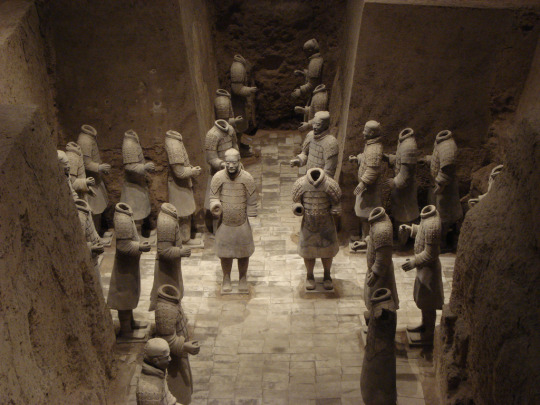
Terracotta
“Terracotta, terra cotta or terra-cotta (Italian: "baked earth", from the Latin terra cocta), a type of earthenware, is a clay-based unglazedor glazed ceramic, where the fired body is porous...An appropriate refined clay is formed to the desired shape. After drying it is placed in a kiln or atop combustible material in a pit, and then fired. The typical firing temperature is around 1,000 °C (1,830 °F), though it may be as low as 600 °C (1,112 °F) in historic and archaeological examples. The iron content, reacting with oxygen during firing, gives the fired body a reddish color, though the overall color varies widely across shades of yellow, orange, buff, red, "terracotta".”
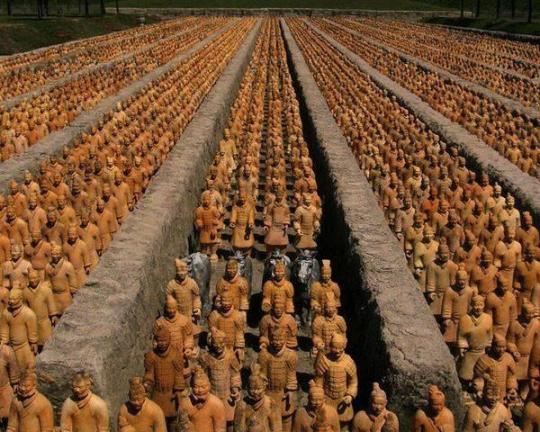
Mingqi
“Mingqi sometimes referred to as "spirit objects" or "vessels for ghosts", are Chinese burial goods...Mingqi also could include figurines, spiritual representations rather than real people...Mingqi served to provide the deceased with necessities and comforts in the afterlife...Joss offerings, also referred to as mingqi.”

Censorate
“The Censorate was a high-level supervisory agency in ancient China, first established during the Qin dynasty (221–207 BCE). The Censorate was a highly effective agency during the Mongol Yuan dynasty (1271-1368).
During the Ming dynasty (1368–1644), the Censorate was a branch of the centralized bureaucracy, paralleling the Six Ministries and the five Chief Military Commissions, and was directly responsible to the emperor. The investigating censors were "the eyes and ears" of the emperor and checked administrators at each level to prevent corruption and malfeasance, a common feature of that period. Popular stories told of righteous censors revealing corruption as well as censors who accepted bribes.

Sinicization
“Sinicization, sinicisation, sinofication, or sinification is a process whereby non-Chinese societies come under the influence of Chinese culture, particularly Han Chinese culture, language, societal norms, and ethnic identity. Areas of influence include diet, writing, industry, education, language, law, lifestyle, politics, philosophy, religion, science and technology, culture, and value systems.”

“More broadly, "Sinicization" may refer to policies of acculturation, assimilation, or cultural imperialism imposed by China onto neighboring East Asian countries, and minority ethnic groups inside China. Evidence of this can be seen in the value systems, cuisine, architectural style, and lexicons. This is reflected in the histories of Japan, Korea and Vietnam for example, in the adoption of the Chinese writing system as the script of the Han Chinese has long been a unifying feature in the Sinosphere as the vehicle for exporting Chinese culture to these Asian countries.”

“The integration or assimilation policy is a type of nationalism aimed at strengthening of the Chinese identity among the population. Proponents believe integration will help to develop shared values, pride in being the country’s citizen, respect and acceptance towards cultural differences among citizens of China.”

“Critics argue that integration destroys ethnic diversity, language diversity, and cultural diversity. Analogous to North America with approximately 300 Native American languages and distinct ethnic groups; in China there are 292 non-Mandarin languages spoken by native peoples of the region. There are also a number of immigrant languages.”

Burning of books and burying of scholars
“The burning of books and burying of scholars (simplified Chinese: 焚书坑儒; traditional Chinese: 焚書坑儒; pinyin: fénshū kēngrú) refers to the supposed burning of texts in 213 BCE and live burial of 460 Confucian scholars in 212 BCE by the First Emperor of the Qin dynasty of Imperial China. The event caused the loss of many philosophical treatises of the Hundred Schools of Thought. The official philosophy of government ("legalism") survived.
Modern scholars doubt the details of the story in the Records of the Grand Historian—the main source—since Sima Qian, the author, wrote a century or so after the events and was an official of the Han dynasty, which could be expected to portray the previous rulers unfavorably. While it is clear that the First Emperor gathered and destroyed many works which he regarded as subversive, two copies of each school were to be preserved in imperial libraries. These were destroyed in the fighting following the fall of the dynasty.”
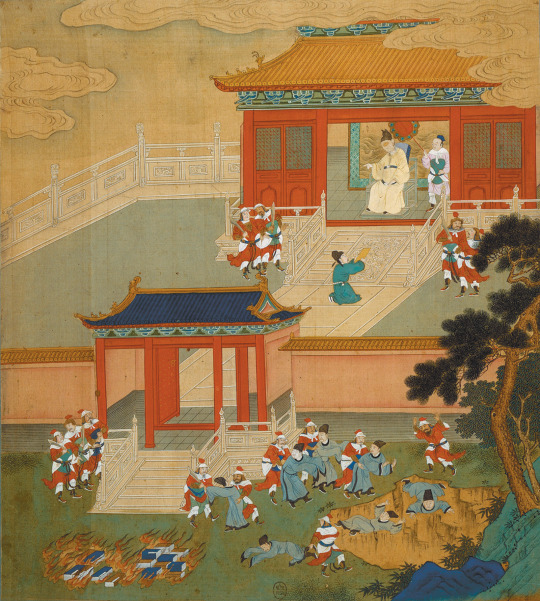
”According to the Sima Qian's Records of the Grand Historian (Shiji), after Qin Shi Huangdi, the first emperor of China, unified China in 221 BCE, his chancellor Li Si suggested suppressing intellectual discourse to unify thought and political opinion... Three categories of books were viewed by Li Si to be most dangerous politically. These were poetry (particularly the Shi Jing), history (Shujing and especially historical records of other states than Qin), and philosophy. The ancient collection of poetry and historical records contained many stories concerning the ancient virtuous rulers. Li Si believed that if the people were to read these works they were likely to invoke the past and become dissatisfied with the present. The reason for opposing various schools of philosophy was that they advocated political ideas often incompatible with the totalitarian regime.”

“The extent of the damage to Chinese intellectual heritage is difficult to assess, for details have not been recorded in history. Several facts, however, indicate that the consequences of this event, although enduring, had not been extensive. First, it is recorded in Li Si's memorial that all technological books were to be spared. Secondly, even the "objectionable" books, poetry and philosophy in particular, were preserved in imperial archives and allowed to be kept by the official scholars.”

“At the end of the Qin, the Epang Palace's national records were destroyed by fire. Tang dynasty poet Zhang Jie (Chinese: 章碣) wrote a poem (titled 焚书坑, Fen Shu Keng, "Pits for Book-burning") about the policy of destruction by both the Qin dynasty and the rebels (of which Liu Bang and Xiang Yu were the examples cited as they entered the capital city Xianyang one after the other.)“
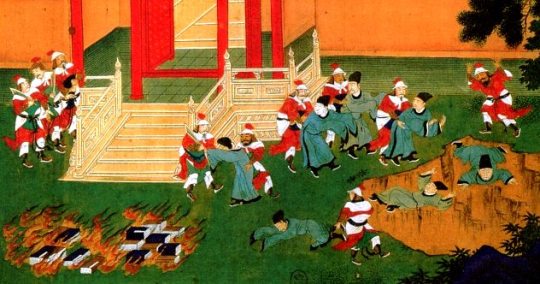
“Tradition had it that after being deceived by two alchemists while seeking prolonged life, Qin Shi Huang ordered more than 460 scholars in the capital to be buried alive in the second year of the proscription. The belief was based on this passage in the Shiji...An account given by Wei Hong in the 2nd century added another 700 to the figure.”

“[T]he reason Han dynasty scholars charged the Qin with destroying the Confucian Five Classics was partly to "slander" the state they defeated and partly because Han scholars misunderstood the nature of the texts, for it was only after the founding of the Han that Sima Qian labeled the Five Classics as "Confucian"...Sima Qian's account of the execution of the scholars has similar difficulties. First, no text earlier than the Shiji mentions the executions...The earliest known use of the famous phrase "burning the books and executing the Confucians" is not noted until the early 4th century.”
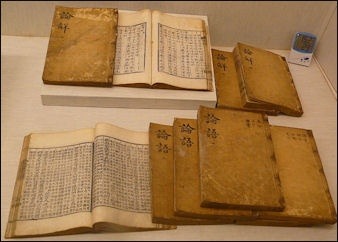
Han dynasty invented printed paper books
Art of the Han
“The art of the Han dynasty (206 BCE - 220 CE) of ancient China is characterised by a new desire to represent everyday life and the stories from history and mythology familiar to all...Han artists pushed forward the boundaries of what was possible to make technically and what was desired aesthetically by the ever-increasing number of art connoisseurs...The art historian Mary Tregear gives the following summary of how art evolved under the Han:
“Whereas in previous ages art had been associated with rituals and ceremonies, gradually evolving into a decorative expression of social status, the art first of the Qin and then of the Han is concerned with myths and everyday life. It was from the outset both a narrative and an expressive art.”

“The Han, like the brief Qin dynasty before them, had acquired a vast swathe of Asia which encompassed many varied cultures, belief systems, and myths. Han rulers realised that art could be a useful tool in collecting this heritage together and presenting a unified and comprehensibly “Chinese” view of the world...Decorative motifs abounded and became highly stylised in border decorations whose uniformity suggests the use of pattern books in the larger urban workshops. These motifs are especially prominent on pottery, lacquerware, and bronze mirrors.”
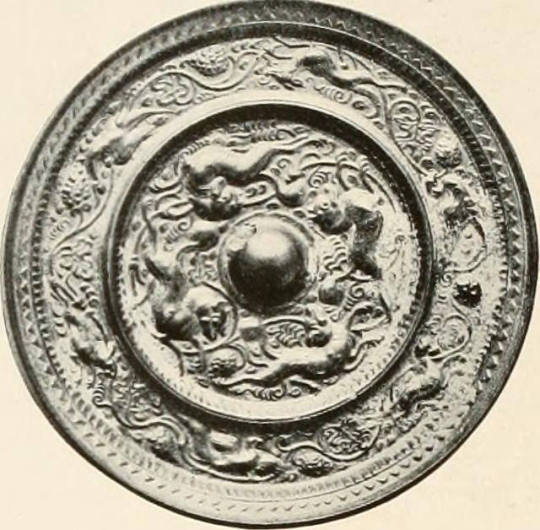
“Wealthy individuals became both patrons and consumers of fine artworks. This demand led to innovations and experimentation in art...As with Chinese painting in general, the aim of the artist was not to copy exactly reality but always to represent the essence of a subject... Bricks were stamped and carved, as was stone...This was a new departure for Chinese art, creating permanent artworks in durable materials...Large figure sculptures are rare from the Han period, but there are some statues representing generals and officials which were stood outside their tombs.”

”Developments in techniques and kilns led to both higher firing temperatures and the first glazed pottery during the Han period. Pottery, especially the vessels painted with a grey slip commonly found in Han tombs, very often imitated the shape and decoration of bronze vessels. Low circular jars with lids and tall vases with a bulbous body and narrow base are characteristic...Clay was also used to produce small unglazed models of ordinary houses...The two-storey models are useful indicators of now lost mud and wood structures; many are complete with adjacent animal pen and figurines of their occupants and animals.”

Xi’an Art Ceramics & Lacquer Factory
“[T]his is a state-run factory that’s been in operation since 1958. It reproduces terra-cotta warriors in sizes ranging from 4 inches to life-size...they are painted in colors resembling the original warriors. Later, when we go to see the actual Terra Cotta Warriors, we’ll find that their colors are no longer evident due to the passage of time and the exposure of the warriors to the atmosphere.”
(via Xi’an Art Ceramics & Lacquer Factory | Catbird In China blog)

#terracottawarriors#hanchineserewritehistory#hancivilofficialsinventedeverything#redpyramids#kiln#mercurydistillation#mercurygoldamalgamation#ancientsecretmercurygold#hanthoughtmercuryprolongedlife#secretqinmercurygoldproduction#sinicization#eastwestculturalexchange#silkroad#gijajoseonmetalproduction#pyramidsofchina#pyramidsofmexico#pyramidsofegypt#gizaplateau#kheopspyramid
1 note
·
View note
Text
“The Clash of Civilizations” Samuel Huntington, 1996…Pulitzer Prize
Samuel Huntington is a political scientist who studied at Yale, the University of Chicago and completed his Ph.D. at Harvard. In 1996 Huntington wrote “The Clash of Civilizations and the Remaking of World Order.” This text is considered a milestone in the field of geopolitics. It is engaged with how the ending of the Cold War shifted focus on to new conflicts involving the divisiveness of human civilizations that now challenge world peace and stability.
Huntington points toward future human disagreements that will manifest less from political or economic distinctions as with communism and capitalism; but that these fractures will prevail more along cultural and religious “fault lines” that have germinated well before the fall of the Berlin Wall. Huntington begins with the current nature of countries and regions with similar qualities of civilization. He envisions nations that are bonded through language, religion, culture, laws and/or values being drawn together in kinship. At the same time those states that have mixed cultures and tend to abide by the wave of multiculturalism that is apparent in the West are coming apart.
Huntington partially wrote this study partially in response to Francis Fukuyama who wrote “The End of History and the Last Man.” Here Fukuyama was examining the victory of democratic-liberalism over communist-totalitarianism. Fukuyama argued that the ideas of universalism, Western democratic values, and modernization would unite the world into a new era of egalitarian thinking that would spread across the globe as communist states crumbled under the weight of their own bureaucracies and oligarchs.
Huntington’s research takes a different path from Fukuyama revealing that the world has morphed since the 1990s. It has altered from two super powers (the US vs. the USSR) each challenging the other into eight distinct civilizations vying for recognition. These cultures include Chinese, Japanese, Africa, Islam, Orthodox, Latin America, Western, and Hindu. However, the two that will generate the greatest confrontation toward the West will be the Chinese and the Islamic states that range from Morocco to Indonesia.
Historically we are made aware that each time civilizations bump up against each other there is inevitable discord often leading to war. We must ponder that the balance of power may well shift from the West as it abates in stature and slows in growth while Islamic and Asian countries are seen to be expanding in influence and wealth. Where the West looks to inculcating the ideals of universalism into other nations, other states see the West as peddling neo-colonialism and fostering Western interference through economic and political might.
“The Clash of Civilizations” outlines how China came to its position of mega-power under Mao that propelled China with immense growth in a short time. The major problem for China now is that it has begun the process of unleashing the constraints of communism allowing “shades” of capitalism and individualism to become imbedded into the Chinese culture. This was the “disease” that led to the demise of the USSR under Gorbachev and Yeltsin. Once the gates of democratic-liberalism were opened subjugated groups and clans began to demand increased rights of equality. Currently, the Communist Party in China numbers less than 100 million who have run rough shod over the various distinctive groups that compose the rest of the 1.3 billion many of whom live in poverty without a social net. Given enough time the West may watch as China, too, erodes like the Berlin Wall as the “great unwashed Chinese” clamor for more rights and greater opportunities from their “betters” in the Communist Party.
On the other side of the coin Huntington turns to Islam and analyzes the position of Muslim countries that have been dominated by the West and local corrupt leaders who in turn are in the pockets of the oil companies. Where birth rates are dwindling in the West Islam is growing. We also find a large proportion of Islamic states with younger populations who are often unemployed. This becomes the perfect breeding ground for radicals who foster discontent toward the West. The possibility that Islam will change to the liking of the West anytime soon is fantasy as both civilizations are entrenched against each other. At present America is seen as “the Great Satan” that must be vanquished for Muslims to be released from the yoke of Western oppression. However, prime directives within Islam call for both religion and state act as one and guided by the Quran from ideas created over 1000 years ago by Mohammed. How does this bode to the West? This theocractic-philosophy is deemed as inflexible in a modern nation or group of nations dealing with other current economic and social systems. The Christian West is adamant about keep church and state separate.
It is revealed by Huntington that religion and culture have brought humanity back to the focal point of “them vs. us.” We are once again at the juncture of Christians in opposition to the Muslim world where further crusades and jihads are on the horizon. Huntington is sounding a warning signal if Western ideals and universalism are to be maintained. Ancillary, he asks to be aware of the feud that is currently within the West regarding those supporting multiculturalism and those supporting Western civilization. At the same time he notes a “decline in American values” where data finds increases in “crime, drug use, family disunity, lack of work ethic, slower economic growth, and the onslaught of the ‘me-generation’” all of which appear to be leading the West toward general decay. Perhaps the Muslims and Chinese are rubbing their hands in sanctimonious pride that they indeed are better than the “decadent Americans.” Furthermore, America has slowly pulled itself back as a world leader on the verge of the “isolationism” of pre-World War 2. America is no longer in the forefront of space technology allowing other states to invent dynamic strategies in new frontiers. Other states await in the wings to fill the vacuum.
Having written all this I am also aware that Huntington efforts have been challenged and called into question. Norm Chomsky wrote that Huntington’s concepts regarding civilization as a “cart blanche” for the US to commit wholesale “atrocities” and “first-strike” action against those it sees as enemies to America. Various academics in the Middle East have written of the “Clash of Civilizations” as inspiring racism and violence toward Arabs and Muslims. What is equally powerful is that this insightful tome was written before 9/11. It is obvious then that Huntington has hit the nerve of a mighty theme that allows for weighty criticism and discussion.

0 notes
Text
The Biggest Problem for ICOs? In 2018, It Was Their Own Investors

Simon Seojoon Kim is CEO and partner at Hashed, a crypto-focused accelerator focused on community building and impact investing.
The following is an exclusive contribution to CoinDesk’s 2018 Year in Review.

At the beginning of 2018, the blockchain community reached the pinnacle of the ICO bubble.
The slogan of ICOs, which promised that “anyone can invest in an initial project,” sounded wonderful and future-oriented. However, as the prices of most ICO tokens continued to tumble over the past year, it appears that the first chapter of this grand experiment has ended in failure.
Why do most ICOs fail to succeed? Some would cite the greed of individuals blindly looking to make a quick fortune, incompetent project teams led by entrepreneurs that lack expertise, the technical limitations of platform blockchains that lack scalability and inadequate regulations in countries that have been unable to keep up with changing market conditions.
These are all true. However, there is little to learn from this, as these are difficulties that all innovative, paradigm-shifting technologies face when forging new markets in their early stages.
In this article, I aim to take stock of the current situation by examining the inherent limitations of ICOs, in particular the belief that “anyone can invest in an initial project,” and discuss some potential solutions.
The popularity of group purchasing channels
Despite the burst of the ICO bubble, the blockchain craze in Asian markets is not waning.
In fact, interest in new technological trends and expanding ecosystems is growing. In particular, in markets like China and Korea where cryptocurrencies have gained greater acceptance, retail investors continue to take part in initial investments for blockchain projects through a variety of methods.
In China, the secondary market has become popular because Chinese nationals are restricted from participating in ICOs by law, while in Korea, a number of ‘coin group purchase’ channels are being operated surreptitiously through KakaoTalk messenger or other communities.
Setting aside government regulation, there are other important reasons behind these trends.
Up until as recently as mid-2017, anyone with an interest in blockchain projects could participate in an ICO without much difficulty. However, from the second half of 2017, there has been a movement towards larger private rounds instead of public sales and lower participation from individual investors.
In particular, projects that were more confident in their fundraising ability increasingly sought a greater proportion of investment from institutional investors or dedicated crypto VCs instead of through public sales. Key examples of this are Ontology or Handshake, who simply engaged in community airdrops after a private sale, without conducting an ICO.
Individual investors interested in these projects attempt to get involved through influential brokers that can grant them access to the private round. At the same time, there are many complaints within the community about the expanding trend of institutional investors taking up the lion’s share of private rounds.
A reluctance to accept individual investors
There is a large gap between the role that many projects had hoped individual investors would play during the ICO, and the reality that they have been faced with afterwards.
While providing the public with a fair investment opportunity, project teams also hoped to create a loyal community that would be aligned with the project’s incentives and share in its growth.
Compared to the existing startup model, where the company grows based on investment received from a small number of institutional investors through closed channels, teams believed that ICOs would facilitate the creation of a more open ecosystem which would lead to a virtuous cycle of rapid growth.
However, individual investors in blockchain projects ultimately failed to provide much help to the projects in many cases.
The majority of ICO participants who formed the community’s persona were often “creditors” who only cared about the token price, rather than “contributors.” Many of these individuals simply jumped on the bandwagon of popular projects without a clear understanding of or trust in the project’s core technology or business.
Accordingly, they contributed very little to the productive activities that promote healthy growth within communities. In addition to this, few of the individual investors who took part in ICOs for blockchain projects actually used the tokens they received for the intended purpose once the dapp or platform was released. Instead, they were essentially free riders who sold off their tokens as soon as the price hit a certain level.
This led to a growing awareness among teams that they could actually threaten the long-term development of projects. From the perspective of project teams, it seems more efficient to manage a small number of professional investors rather than have to communicate and provide explanations to a community of individual investors who constantly ask about the price and listing on exchanges, especially during the launch stage when the team is naturally spending most of its energy on development.
Institutional investors also tend to have their own networks and greater insight into the blockchain industry. In many cases, institutional investors have provided practical assistance to help grow the project by playing an advisory role to entrepreneurs or recruiting team members during the early stages. These investors can provide support in a number of ways, including building local communities in key locations, hosting hackathons to connect developers to the project, or acting as a liaison with major media channels.
Because there is a longer lock-up period in private rounds than in public rounds, institutional investors have no choice but to believe in the mid-to-long-term growth of the project and offer assistance where they can. Of course, not all institutional investors effectively contribute to the development of a project. The behavior of some institutional investors who fail to provide promised support or lack expertise and judgment has also been a source of complaints within communities.
However, the competitive nature of markets is helping to correct this problem.
Because of the free and transparent flow of information in the hyper connected crypto ecosystem, information about reputable and not so reputable institutional investors spreads quickly between blockchain entrepreneurs. In time, only reputable crypto funds will be given the opportunity to invest in promising projects, similar to the growth process that venture capital markets went through.
Is investment the only way to contribute to a project?
Thus far I have looked at the growing trend of smaller public rounds in 2018.
I am not trying to raise the dichotomous question of whether individual or institutional investors are more suitable for investment in initial projects. The more fundamental question is, “How do we create an ecosystem in which those who contribute to projects can become initial shareholders?” and I believe the mechanism to enable this is Proof of Contribution.
Think back to the advent of the world’s first cryptocurrency, bitcoin, which represented the beginning of the decentralization paradigm, and the process through which tokens were issued. Bitcoin issued tokens to the community purely through mining, without any token sale targeting investors. When miners provided hash power, their contribution would be verified in a way that enhanced the security of the network, and they were rewarded with bitcoins in return.
Although the protocol-defined method of contribution to the network was simple, it was fundamentally a proof-of-work (PoW) concept, which could also be viewed as a form of ‘Proof of Contribution’ that reflected the philosophy of compensating those who contribute to a project. During the long period where no one paid attention to the price of Bitcoin, the majority of early shareholders in the network were people who carried a strong belief in decentralized currencies rather than those looking to make a short-term profit.
In the IT industry, there is a clear distinction between the role of 1) investors, 2) the company and 3) employees during the early stages of a startup. Investors receive equity in the company in return for providing initial capital. It is then the company’s job to use these funds effectively to grow the company. Employees receive stock options upon joining the company, and are incentivized to work hard because of the clear upside potential of a higher share price.
I believe that this stock options system was the biggest driving force behind innovation in the Silicon Valley startups of today.
Accordingly, it is unfortunate that most blockchain projects have reduced the role of external stakeholders who join the project in its initial stages to that of ‘investors’ in traditional IT startups. This is demonstrated by the fact that the token allocation section in the white papers of most blockchain projects resembles a business development plan and marketing budget that was determined entirely by the project team, instead of a system of autonomous token distribution through the protocol. In most cases, the token model is only described briefly, with a focus on the main activities that will take place once the network is sufficiently established.
In other words, the model for network growth is selling tokens to investors through marketing, sales or partnership activities, with the use of such funds arbitrarily determined by the project team. This suggests that blockchain projects to date have not taken full advantage of the benefits of decentralization. Instead of treating individuals who make early contributions as merely financial investors, projects that are truly pursuing decentralization should recognize them as more akin to employees who receive stock options (and can actively contribute to the network from outside the organization) and adopt a philosophy of ‘compensation through the protocol’ to leverage them.
Blockchain projects have the potential to design detailed and effective reward systems catered to the nature of their token model that can verify the contributions of members and compensate them accordingly. For example, even if initial investors are given bonuses as a reward for financial contributions, the calculation and payment of the bonus could take place at a later date once it has been proved that the individual has reached a certain level of use on the project’s sapp or made a contribution to PR activities though a method defined by the protocol.
This would incentivize investors to participate in a more substantive way. In addition to this, a variety of protocols could be designed that encourage non-investors to contribute through participation in permissionless networks, and distribute tokens for such involvement.
In the future, we will see blockchain projects with more complex value chains that have greater crossover with the real world. The ultimate goal of decentralized projects should be decentralizing the project’s entire value chain. To achieve this, all of the key sections of the value chain of ordinary companies, from R&D to marketing and sales, should be turned into protocols that are as detailed as possible, and companies should also consider mechanisms to incentivize top experts from outside the organization to contribute to the project’s growth in efficient ways by offering rewards.
Tokens can be used as effective tools in this scenario, but it is critical that the method for calculating incentives for contributions is based on a transparent and defined protocol that is made public, unlike in centralized startups where it is based on the fleeting, arbitrary decisions of the management team.
This can give protocol-based organizations the competitive edge over centralized companies.
Distributing tokens only to real contributors
Investment is merely one of many ways to contribute to the growth of a project.
I believe that the underlying reason behind the failure of so many ICOs these days is that the communities are filled with initial shareholders who only care about the token price because they joined as investors.
The identity of any organization is determined by the nature of its initial shareholders. This leads to a chain reaction which influences those who join the community later on, and also has a critical influence on the direction and speed of the network’s growth. In order to succeed, blockchain projects from 2019 onwards will have to demonstrate more advanced methods than their predecessors when it comes to determining the composition of their initial shareholder pools.
They should look to move away from the current methods of giving tokens to anyone who invests, random airdrops and relying on partnerships based on the decisions of centralized entities when forming initial shareholder communities.
Despite the failure of so many ICOs, many still believe in the strong underlying value of blockchain technology which has the potential to completely change the foundations of our economic systems.
Moving forward, I hope that more blockchain projects will take up the challenge of using token distribution models where ‘not just anyone can become an initial shareholder,’ and consider a “proof of contribution” model which distributes tokens only to those who have made a substantive contribution.
Have an opinionated take on 2018? CoinDesk is seeking submissions for our 2018 in Review. Email news coindesk.com to learn how to get involved.
Piggy bank image via Shutterstock
!function(f,b,e,v,n,t,s){if(f.fbq)return;n=f.fbq=function(){n.callMethod?
n.callMethod.apply(n,arguments):n.queue.push(arguments)};if(!f._fbq)f._fbq=n;
n.push=n;n.loaded=!0;n.version='2.0';n.queue=;t=b.createElement(e);t.async=!0;
t.src=v;s=b.getElementsByTagName(e);s.parentNode.insertBefore(t,s)}(window,
document,'script','//connect.facebook.net/en_US/fbevents.js');
fbq('init', '239547076708948');
fbq('track', "PageView");
Source link
Read the full article
0 notes
Photo

New Post has been published here https://is.gd/s26sxh
The Biggest Problem for ICOs? In 2018, It Was Their Own Investors
This post was originally published here
Simon Seojoon Kim is CEO and partner at Hashed, a crypto-focused accelerator focused on community building and impact investing.
The following is an exclusive contribution to CoinDesk’s 2018 Year in Review.
At the beginning of 2018, the blockchain community reached the pinnacle of the ICO bubble.
The slogan of ICOs, which promised that “anyone can invest in an initial project,” sounded wonderful and future-oriented. However, as the prices of most ICO tokens continued to tumble over the past year, it appears that the first chapter of this grand experiment has ended in failure.
Why do most ICOs fail to succeed? Some would cite the greed of individuals blindly looking to make a quick fortune, incompetent project teams led by entrepreneurs that lack expertise, the technical limitations of platform blockchains that lack scalability and inadequate regulations in countries that have been unable to keep up with changing market conditions.
These are all true. However, there is little to learn from this, as these are difficulties that all innovative, paradigm-shifting technologies face when forging new markets in their early stages.
In this article, I aim to take stock of the current situation by examining the inherent limitations of ICOs, in particular the belief that “anyone can invest in an initial project,” and discuss some potential solutions.
The popularity of group purchasing channels
Despite the burst of the ICO bubble, the blockchain craze in Asian markets is not waning.
In fact, interest in new technological trends and expanding ecosystems is growing. In particular, in markets like China and Korea where cryptocurrencies have gained greater acceptance, retail investors continue to take part in initial investments for blockchain projects through a variety of methods.
In China, the secondary market has become popular because Chinese nationals are restricted from participating in ICOs by law, while in Korea, a number of ‘coin group purchase’ channels are being operated surreptitiously through KakaoTalk messenger or other communities.
Setting aside government regulation, there are other important reasons behind these trends.
Up until as recently as mid-2017, anyone with an interest in blockchain projects could participate in an ICO without much difficulty. However, from the second half of 2017, there has been a movement towards larger private rounds instead of public sales and lower participation from individual investors.
In particular, projects that were more confident in their fundraising ability increasingly sought a greater proportion of investment from institutional investors or dedicated crypto VCs instead of through public sales. Key examples of this are Ontology or Handshake, who simply engaged in community airdrops after a private sale, without conducting an ICO.
Individual investors interested in these projects attempt to get involved through influential brokers that can grant them access to the private round. At the same time, there are many complaints within the community about the expanding trend of institutional investors taking up the lion’s share of private rounds.
A reluctance to accept individual investors
There is a large gap between the role that many projects had hoped individual investors would play during the ICO, and the reality that they have been faced with afterwards.
While providing the public with a fair investment opportunity, project teams also hoped to create a loyal community that would be aligned with the project’s incentives and share in its growth.
Compared to the existing startup model, where the company grows based on investment received from a small number of institutional investors through closed channels, teams believed that ICOs would facilitate the creation of a more open ecosystem which would lead to a virtuous cycle of rapid growth.
However, individual investors in blockchain projects ultimately failed to provide much help to the projects in many cases.
The majority of ICO participants who formed the community’s persona were often “creditors” who only cared about the token price, rather than “contributors.” Many of these individuals simply jumped on the bandwagon of popular projects without a clear understanding of or trust in the project’s core technology or business.
Accordingly, they contributed very little to the productive activities that promote healthy growth within communities. In addition to this, few of the individual investors who took part in ICOs for blockchain projects actually used the tokens they received for the intended purpose once the dapp or platform was released. Instead, they were essentially free riders who sold off their tokens as soon as the price hit a certain level.
This led to a growing awareness among teams that they could actually threaten the long-term development of projects. From the perspective of project teams, it seems more efficient to manage a small number of professional investors rather than have to communicate and provide explanations to a community of individual investors who constantly ask about the price and listing on exchanges, especially during the launch stage when the team is naturally spending most of its energy on development.
Institutional investors also tend to have their own networks and greater insight into the blockchain industry. In many cases, institutional investors have provided practical assistance to help grow the project by playing an advisory role to entrepreneurs or recruiting team members during the early stages. These investors can provide support in a number of ways, including building local communities in key locations, hosting hackathons to connect developers to the project, or acting as a liaison with major media channels.
Because there is a longer lock-up period in private rounds than in public rounds, institutional investors have no choice but to believe in the mid-to-long-term growth of the project and offer assistance where they can. Of course, not all institutional investors effectively contribute to the development of a project. The behavior of some institutional investors who fail to provide promised support or lack expertise and judgment has also been a source of complaints within communities.
However, the competitive nature of markets is helping to correct this problem.
Because of the free and transparent flow of information in the hyper connected crypto ecosystem, information about reputable and not so reputable institutional investors spreads quickly between blockchain entrepreneurs. In time, only reputable crypto funds will be given the opportunity to invest in promising projects, similar to the growth process that venture capital markets went through.
Is investment the only way to contribute to a project?
Thus far I have looked at the growing trend of smaller public rounds in 2018.
I am not trying to raise the dichotomous question of whether individual or institutional investors are more suitable for investment in initial projects. The more fundamental question is, “How do we create an ecosystem in which those who contribute to projects can become initial shareholders?” and I believe the mechanism to enable this is Proof of Contribution.
Think back to the advent of the world’s first cryptocurrency, bitcoin, which represented the beginning of the decentralization paradigm, and the process through which tokens were issued. Bitcoin issued tokens to the community purely through mining, without any token sale targeting investors. When miners provided hash power, their contribution would be verified in a way that enhanced the security of the network, and they were rewarded with bitcoins in return.
Although the protocol-defined method of contribution to the network was simple, it was fundamentally a proof-of-work (PoW) concept, which could also be viewed as a form of ‘Proof of Contribution’ that reflected the philosophy of compensating those who contribute to a project. During the long period where no one paid attention to the price of Bitcoin, the majority of early shareholders in the network were people who carried a strong belief in decentralized currencies rather than those looking to make a short-term profit.
In the IT industry, there is a clear distinction between the role of 1) investors, 2) the company and 3) employees during the early stages of a startup. Investors receive equity in the company in return for providing initial capital. It is then the company’s job to use these funds effectively to grow the company. Employees receive stock options upon joining the company, and are incentivized to work hard because of the clear upside potential of a higher share price.
I believe that this stock options system was the biggest driving force behind innovation in the Silicon Valley startups of today.
Accordingly, it is unfortunate that most blockchain projects have reduced the role of external stakeholders who join the project in its initial stages to that of ‘investors’ in traditional IT startups. This is demonstrated by the fact that the token allocation section in the white papers of most blockchain projects resembles a business development plan and marketing budget that was determined entirely by the project team, instead of a system of autonomous token distribution through the protocol. In most cases, the token model is only described briefly, with a focus on the main activities that will take place once the network is sufficiently established.
In other words, the model for network growth is selling tokens to investors through marketing, sales or partnership activities, with the use of such funds arbitrarily determined by the project team. This suggests that blockchain projects to date have not taken full advantage of the benefits of decentralization. Instead of treating individuals who make early contributions as merely financial investors, projects that are truly pursuing decentralization should recognize them as more akin to employees who receive stock options (and can actively contribute to the network from outside the organization) and adopt a philosophy of ‘compensation through the protocol’ to leverage them.
Blockchain projects have the potential to design detailed and effective reward systems catered to the nature of their token model that can verify the contributions of members and compensate them accordingly. For example, even if initial investors are given bonuses as a reward for financial contributions, the calculation and payment of the bonus could take place at a later date once it has been proved that the individual has reached a certain level of use on the project’s sapp or made a contribution to PR activities though a method defined by the protocol.
This would incentivize investors to participate in a more substantive way. In addition to this, a variety of protocols could be designed that encourage non-investors to contribute through participation in permissionless networks, and distribute tokens for such involvement.
In the future, we will see blockchain projects with more complex value chains that have greater crossover with the real world. The ultimate goal of decentralized projects should be decentralizing the project’s entire value chain. To achieve this, all of the key sections of the value chain of ordinary companies, from R&D to marketing and sales, should be turned into protocols that are as detailed as possible, and companies should also consider mechanisms to incentivize top experts from outside the organization to contribute to the project’s growth in efficient ways by offering rewards.
Tokens can be used as effective tools in this scenario, but it is critical that the method for calculating incentives for contributions is based on a transparent and defined protocol that is made public, unlike in centralized startups where it is based on the fleeting, arbitrary decisions of the management team.
This can give protocol-based organizations the competitive edge over centralized companies.
Distributing tokens only to real contributors
Investment is merely one of many ways to contribute to the growth of a project.
I believe that the underlying reason behind the failure of so many ICOs these days is that the communities are filled with initial shareholders who only care about the token price because they joined as investors.
The identity of any organization is determined by the nature of its initial shareholders. This leads to a chain reaction which influences those who join the community later on, and also has a critical influence on the direction and speed of the network’s growth. In order to succeed, blockchain projects from 2019 onwards will have to demonstrate more advanced methods than their predecessors when it comes to determining the composition of their initial shareholder pools.
They should look to move away from the current methods of giving tokens to anyone who invests, random airdrops and relying on partnerships based on the decisions of centralized entities when forming initial shareholder communities.
Despite the failure of so many ICOs, many still believe in the strong underlying value of blockchain technology which has the potential to completely change the foundations of our economic systems.
Moving forward, I hope that more blockchain projects will take up the challenge of using token distribution models where ‘not just anyone can become an initial shareholder,’ and consider a “proof of contribution” model which distributes tokens only to those who have made a substantive contribution.
Have an opinionated take on 2018? CoinDesk is seeking submissions for our 2018 in Review. Email news [at] coindesk.com to learn how to get involved.
Piggy bank image via Shutterstock
#crypto #cryptocurrency #btc #xrp #litecoin #altcoin #money #currency #finance #news #alts #hodl #coindesk #cointelegraph #dollar #bitcoin View the website
New Post has been published here https://is.gd/s26sxh
0 notes